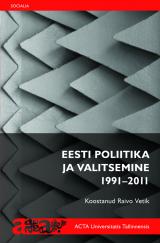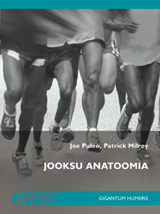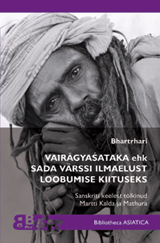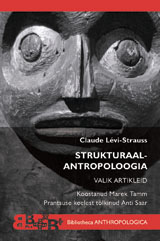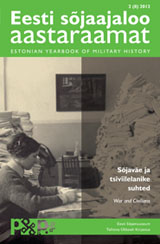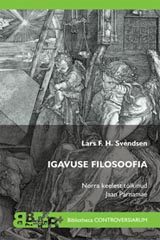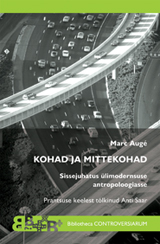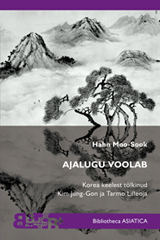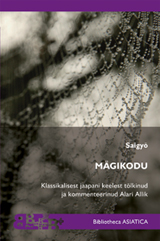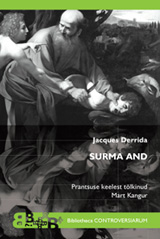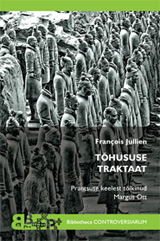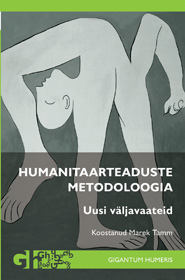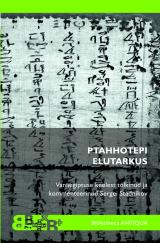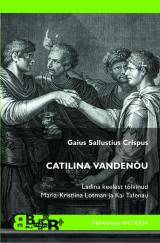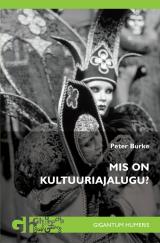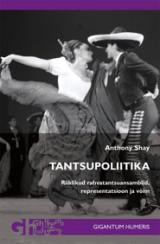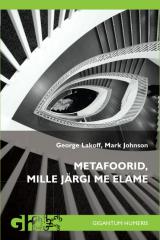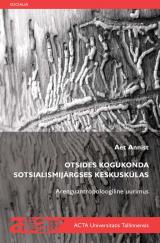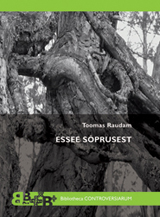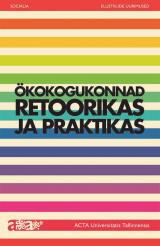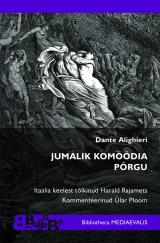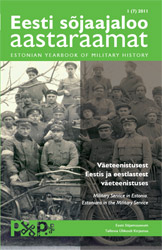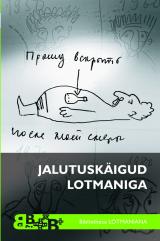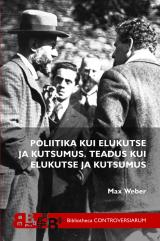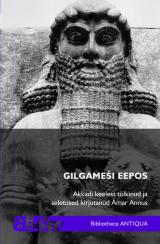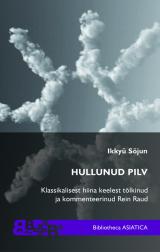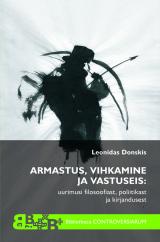In Estonian
|
ISBN 978-9985-58-980-9 |
Inimgeograafia alused. Õpik kõrgkoolidele Edited by Hannes Palang and Tiit Tammaru Human geography is the study of the networked and intertwined relationships between people, space and time. The textbook provides an overview of the branches and directions of human geography, establishes links between them and helps the reader to navigate in the diversity of the world. It points the way to a deeper understanding of the branches of human geography and tries to explain how economy, population, power and culture are expressed in the urban and the rural and merge into the landscape. The textbook is intended primarily for geography students, but also for anyone interested in deepening their understanding of what shapes the world beyond their immediate surroundings. |
|
ISBN 978-9985-58-981-6 |
Neljatine objekt Afterword: Rein Raud In this book the metaphysical system of Graham Harman is presented in lucid form, aided by helpful diagrams. In Chapter 1, Harman gives his most forceful critique to date of philosophies that reject objects as a primary reality. All such rejections are tainted by either an undermining or overmining approach to objects. In Chapters 2 and 3, he reviews his concepts of sensual and real objects. In the process, he attacks the prestige normally granted to philosophies of human access, which Harman links for the first time to the already discredited Meno's Paradox. In Chapters 4 through 7, Harman brings the reader up to speed on his interpretation of Heidegger, which culminates in a fourfold structure of objects linked by indirect causation. In Chapter 8, he speculates on the implications of this theory for the debate over panpsychism, which Harman both embraces and rejects. In Chapters 9 and 10, he introduces the term ontography as the study of the different possible permutations of objects and qualities, which he simplifies with easily remembered terminology drawn from standard playing cards. |
|
ISBN 978-9985-58 |
Mõisa fenomen Balti kultuuriloos. Vaatenurki üle uurimisväljade Edited by Kristina Jõekalda, Linda Kaljundi, Ulrike Plath Manor houses can be considered one of the best known and most popular phenomena in Estonian cultural history – they are studied, visited, written and talked about, photographed and filmed, restored, bought and sold. The manor is one of the few elements of the Baltic German heritage that has acquired a firm place in the Estonian national cultural memory and heritage landscape. However, there seems to be reason to ask whether the public image of manors is not too one-sided. This volume is born out of the conviction that the manor is a phenomenon of key importance for the analysis of Baltic history and culture. In order to understand it better, we should look beyond the manor house and the landlord, and seek new perspectives through cooperation between different disciplines. In this book, scholars from different disciplines explore the manor as a phenomenon around which many of the main themes of the multi-ethnic history of the region are centred: the manor helps to shed light on the history of the interaction of Estonian and Baltic German cultures. Among other things, the collection opens up new perspectives on the earlier history of manors, the importance of material culture and art as a source of manor history, the role of research and restoration practices in transforming the meaning of manors, cultural images of manors at different times, and the ambivalent manorial relationship between Baltic Germans and Estonians. |
|
|
Eesti võõrkeelne raamat ja Estonica 1494–1830 I: Kronoloogiline nimestik 1494–1710 Editors: Helje-Laine Kannik, Kertu Maasik, Tiiu Reimo, Aira Võsa The first volume of the bibliography covers foreign-language publications up to 1710, including the earliest known writings by authors connected with Estonia. It features works by Livonian scholars that reached European universities and accounts of the Livonian War and its aftermath. Estonia established its own printing presses in Tartu, Tallinn, and Narva during the 1630s, although works by local authors were also published abroad. The early years of the Great Northern War are marked by a predominance of state power orders in printed materials, with fewer works on other subjects being published. The bibliography provides information on the locations of these printed works in Estonian and international repositories, as well as the availability of known digital copies. The year 1710 is significant as it marks Estonia and Livonia's transition to Russian tsarist rule. |
|
|
Eesti võõrkeelne raamat ja Estonica 1494–1830 II: Kronoloogiline nimestik 1711–1830 Editors: Helje-Laine Kannik, Kertu Maasik, Tiiu Reimo, Aira Võsa The second volume of the bibliography focuses on foreign-language publications from 1711 to 1830. The period immediately following the Great Northern War saw limited print production, with educational and cultural life beginning to recover only by the mid-18th century. A more vigorous development emerged in the last quarter of the century, driven by intellectuals who had moved to Estonia and Livonia, mainly from Germany. Their works introduced Enlightenment ideas and provided critical perspectives on local conditions and the peasantry. This era witnessed the emergence of weekly newspapers, early experiments with magazines, and the first written critiques of serfdom. At the turn of the century, August von Kotzebue became a prominent European writer of both fiction and non-fiction. The reopening of the University of Tartu brought a wave of scholars to Estonia, catalyzing the publication of scientific literature and advancing studies in natural and historical sciences related to Estonia and Livonia. Local navigators and explorers expanded global knowledge through their voyages, while many scholars from this region gained recognition at the St. Petersburg Academy of Sciences in the 19th century. The bibliography includes detailed information about the locations of these publications in Estonian and international repositories, as well as references to known digital copies. By international agreement, 1830 marks the conclusion of the hand-printing era in Europe. |
|
|
Eesti võõrkeelne raamat ja Estonica 1494–1830 III: Registrid Editors: Helje-Laine Kannik, Kertu Maasik, Tiiu Reimo, Aira Võsa The third volume of the bibliography provides comprehensive indexes to enhance usability. These indexes include categories such as name, title, organization, subject, place name, place of publication, printing house, press, and language. Additionally, the volume features brief biographies of several authors, complete with references to sources. At the end of the volume, there is a list of sources and literature utilized in compiling the bibliography, along with a directory of repositories where foreign-language and Estonica books published in Estonia are held. This structure ensures that users can efficiently navigate the bibliography and locate relevant materials in both physical and digital formats. |
|
|
Eesti võõrkeelne raamat ja Estonica 1494–1830 I–III Editors: Helje-Laine Kannik, Kertu Maasik, Tiiu Reimo, Aira Võsa The Estonian Foreign Language Book and Estonica 1494–1830 is a part of the Estonian Retrospective National Bibliography project, initiated several decades ago. This three-volume bibliography compiles publications in foreign languages authored by individuals residing in Estonia, as well as key works about Estonia published abroad, spanning the period from the advent of the printing press to the end of hand-operated printing presses. The volumes include German translations to facilitate use by foreign-language researchers. This resource is designed for curators managing collections of old prints in Estonian and international memory institutions, as well as for researchers and enthusiasts focusing on the early modern period. The bibliography is complemented by indexes, making it a valuable tool for exploring Estonia's cultural and historical contributions through printed works. |
|
ISBN 978-9985-58-978-6 |
See värsikunst Edited by Călin-Andrei Mihăilescu Jorge Luis Borges' lecture series "This Craft of Verse", given at Harvard from 1967-1968, offers a deeply personal and extremely wide-ranging look at the art of poetry. Drawing on perceptive examples and incisive observations, Borges discusses the nature of poetry, imagery, language, translation and interpretation, storytelling, and life in general. In a final lecture, dedicated to the poet's credo, he also shares tips for the novice poet. Jorge Luis Borges (1899–1986) was an Argentine prose writer, poet and thinker whose influence on 20th-century literature and literary studies has been immense – he has been cited as a source of inspiration by Umberto Eco, Gérard Genette, John Updike, Jacques Derrida and Julio Cortázar, among others. Borges, who studied German and French at Geneva College, joined the avant-garde movement after his studies. In 1922 he founded the magazine Proa and concentrated on writing, publishing poetry, short stories and essays. In 1950, he was appointed professor of English literature at the Argentine Association for English Culture, and in 1955 he was appointed director of the National Library of Argentina. At the same time he lost his sight. So Borges, with his phenomenal memory, gave this series of lectures while already blind. The transcripts of these lectures, long thought lost, which were found at the beginning of this century, however, bring the voice of Borges vividly to the reader, with his wit and warmth nad love of poetry and life. |
|
ISBN 978-9985-58-977-9 |
Masinaõpetus. Inimese, tehnoloogia ja meedia sidemed Translated from Finnish by Elle Vaht Jussi Parikka, a pioneer in media archaeology and a renowned theoretician of neo-materialism, unravels the intertwined history of technology, media and human culture in his first book, published in Finnish in 2004. At the time of its publication, the field of digital culture and media theory was a little different from what it is today, but many themes have returned to the debate, such as cyborgs and artificial intelligence. Parikka's thought-provoking work is an exploration of how machines are shaping our culture, our thoughts and our understanding of existence in general. On a journey from cyberpunk dystopias to Deleuzean philosophy, Parikka questions the boundary between human and technology. Do machines think? Or has our thinking always been machine-like? The book takes us deep into the foundations of technology, where machines are not mere tools but active participants in culture. "Machinology" invites the reader to rethink the relationship with technology in order to find a human identity in a world increasingly defined by machines. This book is not just about technology, it is about us and how we evolve with the tools we create. |
|
ISBN 9772504661094 |
Philologia Estonica Tallinnensis 9 (2024) Edited by Luule Epner and Piret Viires The ninth issue of Philologia Estonica Tallinnensis continues the exploration initiated in the sixth issue, published in 2021, which focused on cultural changes during the transitional period. The transition era, beginning in Estonia in the late 1980s and extending through the first decade of regained independence, brought rapid and profound societal changes. Influenced by social and economic shifts, the culture of transition was mosaic and contradictory, with uneven development across artistic genres and cultural fields. Tensions arose from the relationship with Soviet-era cultural heritage and the swift integration of contemporary Western culture. This issue examines changes in literature, theatre, and the intersection of visual arts and literature during this transformative period. In addition to Estonia, it also explores similar transitions in East Germany and Ukraine. Articles address topics such as the shift to postmodernism in Estonian theatre (Luule Epner), illness and metaphor in Madis Kõiv's dramaturgy (Piret Kruuspere), institutional changes in theatre and film (Kristiina Reidolv), Priit Pärn's children's book Tagurpidi (Mari Laaniste), depictions of post-socialist life in German and Estonian literature (Aigi Heero), and post-colonial identity in Halyna Pahutiak’s youth novel The World’s Eye (Irena Peterson). The opening article by Luule Epner and Piret Viires provides a general overview of the main features and contradictions of transitional culture. This collection offers valuable insights for anyone interested in the culture of Estonia and Eastern Europe during the transition era. |
|
ISBN 978-9985-58-970-0 |
Mis on kultuuriajalugu? Translated from English by Triinu Pakk Foreword: Marek Tamm "What is cultural history?" has become an indispensable handbook on what cultural historians do and how they think. In this second edition, leading British historian Peter Burke provides an updated overview of the past, present and future of cultural history as it is seen not only in the English-speaking world but also in continental Europe, Asia, South America and beyond. Burke first looks at the classical phase of cultural history associated with Jacob Burckhardt and Johan Huizinga, and then considers its Marxist counterpart from Frederick Antal to Edward Thompson. He then looks at the emergence of a new generation, also known as the 'new cultural history'. Burke situates cultural history in its own context, noting the links between new trends in historical thought and feminism, and between postcolonial and everyday studies, in which the understanding of culture plays an increasingly important role. The new edition also takes stock of recent developments in the field, and considers the direction that cultural history has taken in the 21st century and the direction it might take in the future. This groundbreaking book will continue to be essential reading for students of history, anthropology, cultural studies, literary studies and others interested in the field. |
|
ISBN 978-9985-58-968-7 |
Sündimust mõjutavad tegurid Many developed countries today face relatively low birth rates, which could challenge welfare societies in the long term. Research in this area identifies factors associated with low birth rates and explains variations across countries and population groups. The book reviews findings from the first two decades of the 21st century, primarily in Europe and the United States, emphasizing the social aspects that influence individual decisions about family formation. The chapters of the book examine various factors, presenting a theoretical framework alongside key findings. It explores relationships between education, labor market participation, economic conditions, and birth rates, while also discussing housing, cohabitation quality, gender roles, social networks, values, and public family policies. Additionally, it reviews the impact of pension systems, health, heredity, and migration on birth rates. |
|
|
Arvutikasutaja tervis Edited by Monika Kumm Health promotion and well-being in the workplace are essential for raising awareness of potential health risks and helping workers to avoid them in order to lead fuller lives. This book presents the health risks to which computer users are exposed and possible measures to reduce these risks. In addition to physical inactivity, computer users also suffer from unhealthy eating habits. The handbook provides dietary and physical activity recommendations for people who use computers and suggests measures that employers could take in the office. Working for hours at a time at a computer leaves a mark on a person's mental health, with adverse effects also linked to addictions or stressful situations such as cyberbullying. In recent years, online working and online meetings have become popular, leading to the emergence of 'Zoom fatigue'—this book offers suggestions on how to participate in online meetings in a healthier way. |
|
ISBN 978-9985-58-963-2 |
Õppejõud koostöiselt õpetamist uurimas ja arendamas Edited by Katrin Aava, Katrin Karu, Katrin Niglas, Kätlin Vanari This collection of articles invites you to participate in the vital discussion surrounding the future of teaching in higher education. By blending theory with practice, it offers valuable insights for educators, educational leaders, and anyone interested in the evolution of education. In today's academic landscape, fostering a collaborative, cross-disciplinary learning culture is essential for supporting student success. This raises an important question: To what extent can traditional individual teaching methods endure in an increasingly collaborative academic environment? This inspiring collection provides an in-depth examination of how faculty are uniting to enhance teaching practices and drive change within organizational culture. Through research collaboration between academics and support staff, these articles highlight innovative approaches to teaching development and organizational learning, offering practical examples along the way. Join us in exploring how collaboration and a science-based approach can transform education—one article at a time. Discover the potential for improved teaching practices and a richer learning experience through this engaging collection. |
|
ISBN 978-9985-58-961-8 |
Kriisis demokraatia? Poliitika, valitsetus ja poliitikakujundus Translated from English by Erkki Bahovski This book is based on extensive literature and provides an up-to-date overview of the politics of democratic countries and the current situation and trends in governance. The book deals with topics such as citizen participation, representative democracy, mediaization, technocratization, as well as the transformation of governance and international relations. Attention is drawn to the hollowness of the usual modern representative democracy and governance, and ways to move forward from it are suggested. The book is suitable for first reading when understanding contemporary politics, this is also supported by the author's balanced approach. |
|
ISBN 978-9985-58-955-7 |
Meedia ja poliitiline protsess How have professional communicators transformed the business of politics? How do political bodies use the media to sell domestic and foreign policies to the public? This fully revised new edition of The Media and Political Process assesses the impact of spin doctoring and media activity in liberal democracies that are just as concerned with impression management and public relations as with policy. Political processes never stand still, and this revised second edition explores the mediatisation of the political process in light of recent developments, from Vladimir Putin?s growth into a political celebrity, to the activities of spin doctors in the 2008 US Presidential Elections. Providing a comprehensive overview of the evolution, operation and terminology of political communication, this text is an accessible, lively resource for students of political communication and media and politics, and will be important further reading for students of journalism, public relations and cultural studies. |
|
ISBN 978-9985-58-954-0 |
Taimmõtlemine. Vegetaalse elu filosoofia Michael Marder The margins of philosophy are populated by non-human, non-animal living beings, including plants. While contemporary philosophers tend to refrain from raising ontological and ethical concerns with vegetal life, Michael Marder puts this life at the forefront of the current deconstruction of metaphysics. He identifies the existential features of plant behavior and the vegetal heritage of human thought so as to affirm the potential of vegetation to resist the logic of totalization and to exceed the narrow confines of instrumentality. Reconstructing the life of plants "after metaphysics," Marder focuses on their unique temporality, freedom, and material knowledge or wisdom. In his formulation, "plant-thinking" is the non-cognitive, non-ideational, and non-imagistic mode of thinking proper to plants, as much as the process of bringing human thought itself back to its roots and rendering it plantlike. |
|
ISBN 978-9985-58-953-3 |
Kuidas mõelda kliimakriisist. Mõistlikuma eluviisi filosoofiline juht Coping with the climate crisis is the greatest challenge we face as a species. We know the main task is to reduce our emissions as rapidly as possible to minimise the harm to the world's population now and for generations to come. What on earth can philosophy offer us? In this compelling account of a problem we think we know inside out, the philosopher Graham Parkes outlines the climatic predicament we are in and how we got here, and explains how we can think about it anew by considering the relevant history, science, economics, politics and, for the first time, the philosophies underpinning them. Introducing the reality of global warming and its increasingly dire consequences, he identifies the immediate obstructions to coping with the problem, outlines the libertarian ideology behind them and shows how they can be circumvented. Drawing on the wisdom of the ancients in both the East-Asian and Western traditions (as embodied in such figures as Confucius, Laozi, Zhuangzi, Dogen, Plato, Epicurus, Marcus Aurelius and Nietzsche), Parkes shows how a greater awareness of non-Western philosophies, and especially the Confucian political philosophy advocated by China, can help us deal effectively with climate change and thrive in a greener future. If some dominant Western philosophical ideas and their instantiation in politics and modern technology got us into our current crisis, Parkes demonstrates persuasively that expanding our philosophical horizons will surely help get us out. |
|
ISBN 978-9985-58-952-6 |
Metamorfoosid We are all fascinated by the mystery of metamorphosis – of the caterpillar that transforms itself into a butterfly. Their bodies have almost nothing in common. They don’t share the same world: one crawls on the ground and the other flutters its wings in the air. And yet they are one and the same life. Emanuele Coccia argues that metamorphosis – the phenomenon that allows the same life to subsist in disparate bodies – is the relationship that binds all species together and unites the living with the non-living. Bacteria, viruses, fungi, plants, animals: they are all one and the same life. Each species, including the human species, is the metamorphosis of all those that preceded it – the same life, cobbling together a new body and a new form in order to exist differently. And there is no opposition between the living and the non-living: life is always the reincarnation of the non-living, a carnival of the telluric substance of a planet – the Earth – that continually draws new faces and new ways of being out of even the smallest particle of its disparate body. By highlighting what joins humans together with other forms of life, Coccia’s brilliant reflection on metamorphosis encourages us to abandon our view of the human species as static and independent and to recognize instead that we are part of a much larger and interconnected form of life. |
|
ISSN 2504-6616 (print) |
Philologia Estonica Tallinnensis 8 (2023) The eighth issue of Philologia Estonica Tallinnensis has been published. The thematic focus of this issue is "Language and Languages. Learning and Teaching," addressing the problems that have arisen in connection with the transition to Estonian-language education. The main topics under consideration include attitudes and approaches to the transition to Estonian-language education, as well as activities, teaching materials, and learning experiences that support language acquisition. The collection comprises nine articles in Estonian and English. Language teachers and linguists from Tallinn University, the University of Tartu, and Lithuania present their research findings. |
|
ISBN 978-9985-58-950-2 |
Muutused, ümberkorraldused, uuendused. Varauusaja arengujooned Eesti- ja Liivimaal 1520–1800 Editors Marten Seppel and Madis Maasing Authors: Andres Andresen, Jürgen Beyer, Meelis Friedenthal, Tiina-Erika Friedenthal, Kairit Kaur, Jüri Kivimäe, Juhan Kreem, Tiina-Mall Kreem, Triin Kröönström, Merike Kurisoo, Lea Kõiv, Enn Küng, Janet Laidla, Mati Laur, Ivar Leimus, Piret Lotman, Marju Luts-Sootak, Madis Maasing, Anu Mänd, Pärtel Piirimäe, Inna Põltsam-Jürjo, Tiiu Reimo, Kristiina Ross, Anti Selart, Marten Seppel, Hesi Siimets-Gross, Kai Tafenau, Ilmar Tammisto, Peeter Tammisto, Kaarel Vanamölder, Kristi Viiding and Hannes Vinnal. Within the last thirty years, the Early Modern Period (16th – 18th century) has strongly established itself as a separate phase in the periodisation and historiography of the history of Estonia. It has been treated as an era when changes, rearrangements and innovations began to occur that provided a basis for the printing culture, confessionalisation, modernising state, and finally also for the contemporary society and economy. This collection helps to understand the developments of the Early Modern Period in Estonia and Livonia during 1520-1800 and reflects the current state of research in the Early Modern Period in Estonia. Between these book covers, 32 researchers of the Early Modern Period who present their latest research results have the floor. The collection has been thematically divided into nine parts: power, justice, church, the situation of the peasants, communication, livelihood, the University of Tartu, literature and art. Also, the authors attempt to answer the question how should the Early Modern Period in Estonia be determined and dated so as to be in line with the latest research. The most important conclusion in the collection states that the age of the Teutonic Order, Swedish era and Russian era are interconnected in the history of Estonia much more consistently than the current periodisation has demonstrated. The Early Modern Period was a transition period when Estonia and Livonia tried to adjust to and walk along the main political, social, religious and cultural developments in the Baltic Sea area. |
|
ISBN 978-9985-58-951-9 |
Johannes Aavik ja eesti keeleuuendus Translated from French by Heete Sahkai The monograph “Johannes Aavik and linguistic innovation in Estonian” by Antoine Chalvin, Professor of National Institute of Oriental Languages and Civilizations in Paris, is the most complete treatment of linguistic innovation in Estonian that has had a very important part in the history of Estonian culture, language, linguistics and language planning. This work is the revised version of the author’s doctoral thesis, defended in Paris. The monograph consists of three parts. In the first part, an overview has been given of the historical context and chronology of linguistic innovation: the history of Estonian literary language, Aavik’s life and activity, history of and participants in the linguistic innovation movement. In the second part, theoretical bases of the linguistic innovation have been addressed and the complete list of innovation proposals has been presented. In the third part, the reception of innovation proposals and spread of innovations, and related historical, linguistic, literary and social factors have been observed. In the annexes to the monograph, lists of phonetic, orthographic and morphosyntactic innovations, and neologisms have been presented. |
|
ISBN 978-9985-58-945-8 |
Rohupadi “Grass Pillow” tells of a painter who grows tired of the mindless floundering of the modern city life and heads off to a distant mountain village in order to admire beautiful nature away from tedious interpersonal relationships. Because the vulgarity and futility of the everyday world do not belong to the life of an artist. His aim is to perceive his surroundings objectively – to avoid emotions, and to describe and analyse only his observations without actively participating in the events. Despite caution, however, he is still pulled into dangerous interpersonal relationships. Sōseki Natsume (1867–1916) is a great figure of modern Japanese literature, placed alongside such well-known authors as Jun’ichirō Tanizaki, Yasunari Kawabata and Yukio Mishima. Sōseki’s creation often ridicules the insipidity of the West and modern living, and he feels nostalgic for the pre-modernisation Japan. |
|
ISBN 978-9985-58-949-6 |
Ajaloolise aja kude Translated from English by Anti Saar Historical time is a notoriously elusive notion. Yet, as societies attempt to make sense of rapidly changing worlds, it gains a new significance in the twenty-first century. This Element sketches a theory of historical time as based on a distinction between temporality and historicity. It approaches the fabric of historical time as varying relational arrangements and interactions of multiple temporalities and historicities. In the fabric, kinds of temporalities and historicities emerge, come to being, fade out, transform, cease to exist, merge, coexist, overlap, arrange and rearrange in constellations, and clash and conflict in a dynamic without a predetermined plot. The Element pays special attention to the more-than-human temporalities of the Anthropocene, the technology-fueled historicities of runaway changes, and the conflicts in the fabric of historical time at the intersections of technological, ecological, and social change. |
|
ISBN 978-9985-58-944-1 |
Isiklikud kirjad Pierre Abélard and Héloïse Héloїse and Abélard may be placed in the same line with such famous couples as Cleopatra and Antony, Tristan and Isolde, Romeo and Juliet, King Pedro I of Portugal and Inês de Castro. The tragic love story of Pierre Abélard (1079–1142) and Héloїse (1100/1101–1163/1164) were saved from sliding into oblivion by their correspondence that has hereby reached the Estonian readers. By now, the letters of the couple have already been studied and interpreted for nearly 900 years, and new nuances are still found. The story of Héloїse and Abélard is special because of the fact that both were medieval scholars, and one can learn from their philosophy also today. Both were fond of the heritage of Antiquity and expressed their thoughts on friendship, marriage, religion and morality. The turning point of the lives of Héloїse and Abélard was the withdrawal from the secular life. Whether and how joining the convent influenced the lovers’ worldview will be for the reader to decide; as well as what was the cause of all that happened - divine predestination or rather human erroneousness. Kaarina Rein, a researcher and classical philologist Kaarina Rein has written the preface and thorough comments for the book. |
|
ISBN 978-9985-58-943-4 |
Sotsiaal- ja kultuuriantropoloogia. Õpik kõrgkoolidele Edited by Aet Annist and Maarja Kaaristo The first original textbook of social and cultural anthropology in the Estonian language brings together the important topics of anthropology, adding examples from Estonia and Estonian researchers to the overview of the anthropologists of the world and classical anthropological research. This textbook, initially published in 2017, has been improved and updated in 2023. References are made to texts that have been translated into Estonian over the years, terms that have already developed are used, but new ones are also created. Therefore, the result looks like the editors and authors of the textbook, and the state of current research in Estonia: the foci here reflect the topics that Estonian anthropologists and ethnologists deal with at the moment. This textbook has been written primarily in view of Bachelor’s students of many specialities: social and cultural anthropology, ethnology, folklore studies, cultural research, sociology, etc. For an introduction to anthropology, however, it suits everyone who is interested, incl. for complementing the subject of social science in high school. On a more daily basis, the anthropological approach provides an opportunity to find the analytical peace of mind in heated discussions and situations where one can easily be intimidated or feel indignant because of the behaviour or opinions of other people. The task of an anthropologist is to step aside instead and be excited in an attempt to understand the strange words or actions of fellow human beings. This textbook is intended for starting this journey – but also for those who are simply interested in anthropology and want to understand others. |
|
ISBN 978-9916-9702-1-8 |
Vanemaealiste treeningu juhendamine. Õpik juhendajatele ja kõrgkoolidele Edited by Debra J. Rose The book is the most comprehensive text available for current and future fitness professionals who want to design and implement effective, safe, and fun physical activity programs for older adults with diverse functional capabilities. It offers strategies for integrating the six dimensions of whole-person wellness (physical, emotional, intellectual, vocational, spiritual, and social) into health promotion and physical activity programs for older adults. This cohesive blend of theory, practical content, and detailed instruction is divided into four parts, each of which addresses one or more of the nine training modules that comprise International Curriculum Guidelines for Preparing Physical Activity Instructors of Older Adults, the expert-developed guidelines on which this text is based. |
|
ISBN 978-9985-58-941-0 |
Zhuāngzi sisepeatükid Translated from Chinese and commented by Margus Ott Taoist thinker Zhuāngzi (trad. 369–286 BC) is one of the most outstanding persons of the tradition of thought in China and the whole world. The collection of texts that bears his name – “Zhuāngzi” – is a masterpiece of the thought and literature of Ancient China, funny and serious at the same time. This book contains the part of these texts that is considered to be the oldest, “The Inner Chapters”. There are many colourful characters such as cook Ding, etc. who can “proceed” or transform. Even if one’s feet have been cut off or a disease is torturing, nothing disrupts the proceeding. The book includes comments and a foreword by the translator Margus Ott, which help to bring the work closer to us. |
|
ISBN 978-9985-58-939-7 |
Plotinos ja uusplatonism Translated from German, comments and afterword by Jaan Lahe Neoplatonism was the last independent strand of philosophy of the antiquity, founded in the 3rd century AD by the philosopher Plotinus (ca 205–270) who lived and worked in Rome. The influence of this philosophy interpreting and developing the legacy of Plato reaches beyond the Roman empire both spatially and temporally, and has affected many thinkers and schools of thought in the Middle Ages and modern times. Neoplatonism has left a deep imprint on the Western as well as on Jewish and Islamic philosophy. Jens Halfwassen’s book provides a systemic overview of the life, works and thinking of Plotinus, the philosophers representing Neoplatonism and the aftermath of Neoplatonism in later Western thought. Halfwassen’s work, the first book on Neoplatonism published in Estonian, is aimed at all those interested in the European thought and intellectual culture.
|
|
ISBN 978-9985-58-940-3 |
Loomad keskaegse Liivimaa ühiskonnas ja kunstis This book brings, for the first time, animals on the stage of the history of medieval Estonia – both real and fantastic creatures. People’s perceptions of animals, uses of animals, and the portrayal of animals and their symbolic meanings in art have been addressed. This book reveals how matters related to animals were regulated by medieval legal acts, what was the role of horses in the German Order, what kind of exotic and local animals were chosen as diplomatic gifts, what was the relevance of animals in the trading of the Hanseatic cities, which animals were eaten by people of different statuses and how they were served. By the examples of artworks from Estonia and Latvia, the importance of animal images as reflectors of the mind of the medieval people and transmitters of humorous-instructive and religious messages has been treated. |
|
ISBN 978-9985-58-938-0 |
Vaimu arheoloogia. Inimemotsioonide neuroevolutsiooniline algupära Translated from English by Krista Kallis What makes us happy? What makes us sad? How do we come to feel a sense of enthusiasm? What fills us with lust, anger, fear, or tenderness? Traditional behavioral and cognitive neuroscience have yet to provide satisfactory answers. The Archaeology of Mind presents an affective neuroscience approach―which takes into consideration basic mental processes, brain functions, and emotional behaviors that all mammals share―to locate the neural mechanisms of emotional expression. It reveals―for the first time―the deep neural sources of our values and basic emotional feelings. This book elaborates on the seven emotional systems that explain how we live and behave. These systems originate in deep areas of the brain that are remarkably similar across all mammalian species. When they are disrupted, we find the origins of emotional disorders: The book offers an evidence-based evolutionary taxonomy of emotions and affects and, as such, a brand-new clinical paradigm for treating psychiatric disorders in clinical practice. |
|
ISBN 978-9985-58-937-3 |
Jumalik komöödia. Paradiis Translated from Italian by Harald Rajamets, Ilmar Vene and Ülar Ploom Dante Alighieri’s (1265–1321) “Paradiso” is the third and also the last part of the “Divine Comedy” (ca 1307/8–1320), where Dante meets the blessed souls who appear to him in the different celestial spheres into which he ascends from the Mount Purgatory, while looking into the eyes of his beloved Beatrice. In the tenth, the Empyrean Heaven, Dante sees all the blessed in the rose of light, their real home. Under the patronage of St. Bernard and through Virgin Mary, Dante concentrates his sight on the divine ray of light, plunging into the “formula” of the universe, and the secret of the relationship between God and a human. The Estonian journey of “The Divine Comedy” began in 1910, when the initial canto, translated by Villem Grünthal-Ridala, was published. With this edition, all three parts of Dante’s masterpiece have been finally published in Estonia: “Inferno”, “Purgatorio” and “Paradiso”; however, this does not most certainly mark the end of the journey, rather the beginning of a new one. |
|
ISBN 978-9985-58-936-6 |
Digitaalsest semiosfäärist. Kultuur, meedia ja teadus antropotseenis Translated from English by Tanel Pern It is only since global media and digital communications became accessible to ordinary populations – with Telstar, jumbo jets, the pc and mobile devices – that humans have been able to experience their own world as planetary in extent. What does it mean to be one species on one planet, rather than a patchwork of scattered, combative and mutually untranslatable cultures? One of the most original and prescient thinkers to tackle cultural globalisation was Juri Lotman (1922-93). On the Digital Semiosphere shows how his general model of the semiosphere provides a unique and compelling key to the dynamics and functions of today’s globalised digital media systems and, in turn, their interactions and impact on planetary systems. Developing their own reworked and updated model of Lotman’s evolutionary and dynamic approach to the semiosphere or cultural universe, the authors offer a unique account of the world-scale mechanisms that shape media, meanings, creativity and change – both productive and destructive. In so doing, they re-examine the relations among the contributing sciences and disciplines that have emerged to explain these phenomena, seeking to close the gap between biosciences and humanities in an integrated ‘cultural science’ approach. |
|
ISBN 978-9985-58-935-9 |
Inimolu viletsusest Translated from Latin by Marju Lepajõe Innocent III (Lotario de’ Conti di Segni before he became a pope; 1160/61–1216) was the most influential pope of the Middle Ages (1198–1216), one of those few who received this inauguration and left a deep imprint on the medieval literary history as well. His best known and most appreciated work is the tract “On the Misery of the Human Condition”, written in 1195 when he was a young cardinal. This short work can be considered to be a mental exercise in the tradition of ascetic and monastic literature the main subject of which is the analysis of vices and virtues. The aim of such reflection is to achieve clarity in one’s own condition that should lead to repentance and change in the way of thinking. The tract has been written delicately, it is characterised by carefully chosen sounds and rhythms, alliterations and assonances, which the translator Marju Lepajõe (1962–2019) has brilliantly conveyed. “On the Misery of the Human Condition” became one of the most popular and influential works in the Middle Ages; this is demonstrated by the unusually large number of the preserved manuscripts (more than 700), early translations into many languages, and later direct and indirect citations in writings. |
|
ISBN 978-9985-58-934-2 |
Riigikunst. Kultuur, retoorika ja avalik juhtimine Christopher Hood Translated from English by Kalev Lattik This important new study, by a leading scholar in the field, offers a fresh perspective on public management. In contrast to the widespread claim of the `modernization gurus' that a new era of global convergence is dawning in public management, it uses cultural theory to show why ideas about how to manage government are inherently plural and contradictory, and likely to remain so. |
|
ISBN 978-9985-58-933-5 |
Läbipõimunud elu. Kuidas seened loovad meie maailma, muudavad meie teadvust ja kujundavad meie tulevikku Merlin Sheldrake When we think of fungi, we probably think of mushrooms. But mushrooms are only fruiting bodies, analogous to apples on a tree. Most fungi live out of sight, yet make up a massively diverse kingdom of organisms that support and sustain nearly all living systems. The more we learn about fungi, the less makes sense without them. Sheldrake’s mind-bending journey into this hidden world ranges from yeast to psychedelics, to the fungi that sprawl for miles underground and are the largest organisms on the planet, to those that link plants together in complex networks known as the ‘Wood Wide Web’, to those that infiltrate and manipulate insect bodies with devastating precision. Fungi throw our concepts of individuality and even intelligence into question. They can change our minds, heal our bodies, and even help us remediate environmental disaster. By examining fungi on their own terms, Sheldrake reveals how these extraordinary organisms – and our relationships with them – are changing our understanding of how life works. |
|
ISSN: 2228-0669
|
Eesti Sõjaajaloo Aastaraamat 10 (16), 2020 Editors: Toomas Hiio and Kaarel Piirimäe Authors: Steen Bornholdt Andersen, Jörg Echternkamp, Tamir Libel, Kaarel Piirimäe, Łukasz Przybyło, Clifford J. Rogers, Alexander Statiev Is it possible to learn from military history? Is it possible to learn from the past at all? Throughout several thousand years history has been valued as magistra vitae – teacher of life. Nowadays many agree with the dictum of military historian Michael Howard: „Past wars provide the only database from which the military learn how to conduct their profession“. However, the advent of professional history writing has cast doubt on the assumption. Leopold von Ranke, the father of historism, wrote already two centuries ago that his aim was not to give guidances but merely to show what actually happened. But does history have to give direcion? Would it not suffice to give general insights about how things work in the world? In this issue military historians and professors of military history from six countries discuss the use and abuse of military history in the military profession and national defence strategies more generally. |
|
ISBN |
Lapse ja inimkonna tee kritseldustest kunstini III: Mis on kunst? In the third volume of the work “The Road from Scribbles to Art for a Child and for Humankind”, entitled “What is Art?”, the author demonstrates how artistry is not a characteristic of a thing or a phenomenon – an artwork does not exist in the world as an end in itself. Art emerges in the psyche and, thus, is a phenomenon that is born while one observes, listens to, touches, or experiences the world in another way. Therefore, things considered to be works of art are not as such by essence, these are things that become works of art if a person experiencing them has an artistic experience. This book also reveals the psychic nature of the artistic experience. |
|
ISBN 978-9985-58-926-7 |
Lapse ja inimkonna tee kritseldustest kunstini II: Inimkonna tee kritseldustest kunstiks The core subject of the second volume of the work “The Road from Scribbles to Art for a Child and for Humankind”, entitled “The Road from Scribbles to Art for Humankind”, is the issue of how image creation developed over many millions of years of the history of humankind. Many interesting things are revealed on closer examination. First, the fact that the human being is, indeed, so far known to be the only animal who can independently create recognisable images of things and events. As it is the verbally mediated thinking ability which distinguished human psyche from other animals, the claim that processes of verbal thinking provide the basis for the image creation is confirmed. Then, the development of image creation in the history of humankind unfolds. It appears that despite some secondary differences, the development phases of the image creation of children and culture are identical by their psychological nature. In addition, it is revealed that the same development phases appear in the creation of both flat pictures and three-dimensional figures. |
|
ISBN 978-9985-58-925-0 |
Lapse ja inimkonna tee kritseldustest kunstini I: Kujutiseloome psühholoogilisest olemusest ja arengust lastel Humankind has attempted to understand the psyche for thousands of years. Yet, there are still many unanswered questions in psychology today. Moreover, many important questions have probably not even been asked. “The Road from Scribbles to Art for a Child and for Humankind” is aimed at everyone who wishes to have a better understanding of the human psyche and its essence. In Aaro Toomela’s three-volume work, three fundamental questions have been answered. First, is image creation possible only on the basis of speech-based, i.e. semiotically mediated thinking? Secondly, do the phases of the child’s mental development correspond to the phases of the development of the human culture? And thirdly, what is art? This book has written for a wide readership, without compromising the scientific competence, however. In the first volume “Of the Psychological Essence and Development of Image Creation of Children”, it is explained why any image creation is impossible without verbally mediated thinking and how the development phases of verbally mediated thinking should be expressed in the development of image creation. Then, it is demonstrated through researching the development of children’s image creation that the theory corresponds precisely to the data. It also appears that adults who have not had the opportunity to attend school and thus have been deprived of the possibilities of the development of the higher forms of speech-based thinking, basically draw just like pre-school age children. |
|
ISBN 978-9985-58-928-1 |
Keeletoimetamine. Kõrgkooliõpik In this language editing textbook, treatment of the editing process and principles as well as the practical aspects of practical language management have been brought together between the covers for the first time. Language editors’ whole sphere of work from spelling, vocabulary, phrasing and textual level to formatting, proofreading and technical details has been examined. In addition to the textbook, one can acquire an extensive exercise set including the answers, which helps to consolidate the learnt material. This textbook has been compiled primarily as a learning tool for the language editing students, but offers exercise possibilities also for professional editors and other practitioners. |
|
ISBN 978-9985-58-929-8 |
Keeletoimetamine. Harjutusi ja ülesandeid Exercise book accompanying the language editing textbook. |
|
ISBN 978-9985-58-923-6 |
Dialoog ekraaniga You enter a cinema, the lights go out and an interlocutor appears in front of you, trying to inform you of something he/she considers important, and at the same time, to convince you that becoming informed of it is indispensable to you, by the voices of actors and the announcer, and the play of shadows flashing on the white screen. The content of this book may be taken as an ABC of the language of film, as one of the first lessons in the language of cinematography. And just as every primer includes the introduction of the fundamentals of the alphabet and reading matter, this book, too, has the elements of the alphabet of the language of film and stories of the history of cinematography. This is the beginner’s book for those who want to speak with the screen and to understand its language. |
|
ISBN 978-9985-58-920-5 |
Vestlused Lotmaniga “The Conversations with Lotman” presents all known interviews with Juri Lotman in one edition for the first time. This book comprises 41 conversations, many of them very thorough. In addition to the interviews first published in Estonian, translations from nine languages were created for the collection. Sometimes in a much more accessible way than in his other texts, Lotman summarizes the essential standpoints he has reached in his life and creation.
|
|
ISBN ISBN 978-9985-58-922-9 |
Ökosemiootika. Märgiuuringud ja ökoloogiline muutus Timo Maran Translated from English by Ehte Puhang This monograph provides an accessible introduction to ecosemiotics and demonstrates its pertinence for the study of today's unstable culture-nature relations. Ecosemiotics can be defined as the study of sign processes responsible for ecological phenomena. The arguments in the book are developed in three steps that take inspiration from both humanities and biological sciences: 1) Showing the diversity, reach and effects of sign-mediated relations in the natural environment from the level of a single individual up the functioning of the ecosystem. 2) Demonstrating numerous ways in which prelinguistic semiotic relations are part of culture and identifying detrimental environmental effects that self-contained and purely symbol-based sign systems, texts and discourses bring along. 3) Demonstrating how ecosemiotic analysis centred on models and modelling can effectively map relations between texts and the natural environment, or the lack thereof, and how this methodology can be used artistically to initiate environmentally friendly cultural forms and practices.
|
|
ISBN 978-9985-58-921-2 |
Vene kultuuri semiootika. Valik artikleid Juri Lotman, Boriss Uspenski Edited and afterword by: Marek Tamm The intellectual cooperation of Juri Lotman and Boriss Uspenski is one the most interesting and important episodes of the humanities of the second half of the 20th century. Fourteen publications in total by Lotman and Uspenski together were published; nine of the most important have been published in Estonian in this selection. The articles mainly focus on the semiotic research in and interpretation of the Russian culture, but general bases of cultural semiotics are offered as well. |
|
ISSN 2346-5824 (in print) |
Slavica Revalensia. Vol. VIII (2021) (in Russian) Editor: Grigori Utgof Authors: Olga Demidova, Alexander Dolinin, Sergei Dotsenko, Georgy Levinton, In the journal’s first section “Issledovaniia i materialy” (“Articles and Notes”), a reader will find eight articles ranging from literary history (e. g. “‘Dead Kings Must Always Be Judged after Their Demise’: The Afterlife of an Ancient Egiptian Custom in the Russian and European Literature of the 16 th to 19 th Centuries” by Maria Neklyudova, “Pushkin’s ‘Buria’: The Meaning of Rhythm” by Sergei Dotsenko, etc.) to the history of school education in pre-revolutionary Russia and Soviet terror (“Tenishev School: Its Instructors, Students, School Magazines and Archives” by Marina Salman). There is also a section, edited by Professor Georgy Levinton of the European University at Saint-Petersburg, dedicated to the memory of a renowned Russian expert in Italian Studies Larisa Stepanova (1941—2009). This memorial section includes five articles by Alexander Dolinin (“Italian Motifs in Pushkin’s Poem Andzhelo”), Alexander Ospovat (“Notes and Queries on The Captain’s Daughter: 9—11”), Georgy Levinton (“Some Notes on Dantean Quotations and Allusions in Russian Literature of the First Half of the 20 th Century”), Nikita Okhotin (“‘The Scything Run’: Petrarch—Mandel’shtam—Petrarch”) and Roman Timenchik (“From an Index to Anna Akhmatova’s Notebooks: Italians”). Finally, in the journal’s “Kritika” (“Criticism”) section, the editor-in-chief, Grigori Utgof, reviews a recently published book Irina Belobtovtseva: Chelovek epokhi (Irina Belobrovtseva: A Hero of Our Time). |
|
ISSN 2504-6616 (print) |
Philologia Estonica Tallinnensis 6 (2021) The sixth issue of Philologia Estonica Tallinnensis focuses on the cultural changes that took place in Estonia during the so-called transitional period. The transition era began with the collapse of the socialist system in Eastern and Central Europe at the end of the 20th century and involved fundamental changes in politics, economics, technology, culture, and everyday life. The culture of this period, or the culture of transitions, is also transitional in nature: it is a complex interweaving and collision of old socialist values, identities, perceptions, and symbols with new Western-influenced values, identities, and symbols. This issue of Philologia Estonica Tallinnensis examines these changes in the culture of transition, focusing in particular on literature, translation and publishing, and visual culture. The articles deal with the novels of Gohar Markosjan-Käsper (Aigi Heero), Estonian punk poetry (Piret Viires), the situation of translation literature in the transitional era (Triin van Doorslaer), the works of Andrus Kivirähk and Monique Roffey from an ecocritical perspective (Maris Sõrmus, Suliko Liiv), newspaper comics of the 1990s (Mari Laaniste), the first performances of Estonian performance artists in Finland (Liis Kibuspuu), and bridges and conflicts in the East-West art scene in the 1990s (Raivo Kelomees). The issue opens with a general article by Luule Epner and Piret Viires on cultural changes in the transition era. The issue could be essential reading for anyone interested in the transition era in general and developments in Estonian culture in the 1990s in particular. |
|
ISBN 978-9985-58- |
Padjamärkmed Paper edition out of stock The Pillow Book ('Makura no sōshi') by Sei Shōnagon (c. 966–1025) is a prose work representing the high culture of the Japanese court, captivating readers for centuries with its sensitive and precise observations. Dating from the Heian period (794–1192), it is written in the zuihitsu ('following the brush') style and is a collage of texts—lists, meditations, diary entries—written at moments of inspiration. It is not known whether the texts were intended by the author to take on a definitive form, or whether they were the occasional notes she kept, possibly in a personal space. In the 21st century, The Pillow book is a text with the characteristics of online literature, whose eclecticism and fragmentary nature have become its main strength. It can be read as a kind of Heian-era blog, where the author has given free rein to her thoughts and written down everything she considers important in life. As the need arises, The Pillow Book takes the form of a diary, a list, or a random transcription, and in this way has a very contemporary effect. The surprising freshness of the work and its contemporary relevance were also recognized by director Peter Greenaway, who made the film The Pillow Book in 1996. |
|
978-9985-58-916-8 |
Täiused ja tühjused: Lühiülevaade Aasia mõtteloost Paper edition out of stock The aim of this book is provide a first introduction to the traditions of Asian, primarily Indian, Chinese and Japanese thought. “Perfections and Voids” has been written to a wider audience interested in these topics prior knowledge of the cultural history of the Asian countries is not expected, and terms and names have been presented only to an extent necessary to create a systemic picture. Asian thought has been treated in this book as a uniform process that interconnects religious, philosophical and political views, and reflects the interactions of different traditions. This book consists of two parts: the first part outlines a historical overview of the Asian worldviews by countries and regions (the more elaborate chapters have been dedicated to the development of Indian, Chinese and Japanese worldviews), the second part provides a comparative approach to specific philosophical issues (existence, language, subject/consciousness, ethics, politics). |
|
978-9985-58-918-2 |
Olemise voog: Post-antropotsentriline Out of stock Reality exists independently of human observers, but does the same apply to its structure? Realist ontologies usually assume so: according to them, the world consists of objects, these have properties and enter into relations with each other, more or less as we are accustomed to think of them. Against this view, Rein Raud develops a radical process ontology that does not credit any vantage point, any scale or speed of being, any range of cognitive faculties with the privilege to judge how the world ‘really’ is. In his view, what we think of as objects are recast as fields of constitutive tensions, cross-sections of processes, never in complete balance but always striving for it and always reconfiguring themselves accordingly. The human self is also understood as a fluctuating field, not limited to the mind but distributed all over the body and reaching out into its environment, with different constituents of the process constantly vying for control. The need for such a process philosophy has often been voiced, but rarely has there been an effort to develop it in a systematic and rigourous manner that leads to original accounts of identity, continuity, time, change, causality, agency and other topics. Throughout his new book, Raud engages with an unusually broad range of philosophical schools and debates, from New Materialism and Object-Oriented Ontology to both phenomenological and analytical philosophy of mind, from feminist philosophy of science to neurophilosophy and social ontology. Being in Flux will be of interest to students and scholars in philosophy and the humanities generally and to anyone interested in current debates about realism, materialism and ontology.
|
|
ISBN 978-9985-58-915-1 |
Kliimamuutus: Diagnoos, prognoos, teraapia Stefan Rahmstorf and Hans Joachim Schellnhuber Translated from German by Katrin Kaugver Everyone is talking about climate change, especially after the unique series of devastating weather extremes in recent years. In view of its drastic importance for nature and civilisation, this is no wonder. But what does climate change actually mean, and which factors are responsible for the climate? Two internationally recognized climate experts give a compact and understandable overview of the current state of our knowledge and offer possible solutions. |
|
ISBN 978-9916-9702-0-1 |
Funktsionaalne treening Juan Carlos Santana Translated from English by Marina Maran Take your performance to the next level with Functional Training. Author Juan Carlos Santana brings you his revolutionary approach to training and conditioning methods sure to improve your function in any sport or activity. Functional Training covers the recent breakthroughs, the most exercises, and proven programs that you can follow or incorporate into your existing training plan. Offering strength, endurance, power, and sport-specific exercises and programming, Functional Training is a comprehensive resource for every athlete, coach, and athletic trainer. Covering the concepts, exercises, progressions, and sequencing on which a sound functional training program is based, it addresses the needs of more than 11 sports and features 135 exercises, including body weight, bands and pulleys, dumbbells and kettlebells, medicine balls, and stability balls. Functional Training features a three-tier approach for integrating functional movements into an existing strength program. Through assessment and analysis, you’ll identify the movements and muscles involved in your sport, then select the best exercises and programs based on desired results and performance goals. In addition to quick exercise sequences and personalized programming to address the big four sport skills, more comprehensive programs can be developed to address your athletic and performance needs and goals. |
|
ISBN 978-9985-58-910-6 |
Pasteuri impeerium. Epideemiad, vaktsiinid ja poliitika Prantsuse asumaades Aro Velmet Translated from English by Anti Saar Out of stock The book highlights the influence of microbes and scientific data in key political decision making in the 19th and 20th centuries and brings to the fore the voices of scientists, administrators, international regulators, and African and Vietnamese colonial subjects in a truly kaleidoscopic narrative. It presents a new view of French biomedical colonialism that brings together different scales, from the microbiological to the global. |
|
ISBN 978-9985-58-912-0 |
Teejuht kultuuripsühholoogiasse Jaan Valsiner Translated from English by Triin Kallas and Tanel Mällo An Invitation to Cultural Psychology looks at the everyday life worlds of human beings through the lens of a new synthetic perspective in cultural psychology – that of semiotic dynamics. Based on historical work from many different fields in the social and behavioural sciences, and the humanities too, this perspective applied to cultural psychology suggests that human beings are constantly creating, maintaining and abandoning hierarchies of meanings within all cultural contexts they experience. It’s a perspective that leans heavily on the work of the great French philosopher, Henri Bergson, only now being realised as a core basis for human cultural living. |
|
ISBN 978-9985-58-911-3 |
Idakristlusest idas: Jakobiinid, nestoriaanid ja teised Paper edition sold out Christianity is not a purely European phenomenon, neither historically nor theologically. It was born in Palestine in West Asia, its original environment was oriental and its closest relatives – Judaism and Islam – are by nature also Asian religions. At first, Christianity spread into three directions: besides Europe, also into Asia and Africa. Over the course of history, the European strand grew much more extensively than other strands. However, this does not mean that these decayed. The main aim of this book is to introduce these archaic non-European Christian strands, that is, oriental Christianity. This book provides a thorough overview of different churches of oriental Christianity, their development, and theological and organisational particularities.
|
|
ISBN 978-9985-58-908-3 |
Avalik poliitika III. Avaliku poliitika teooriad ja analüüsi metoodikad Paper edition sold out “Theories and Methods in Analyzing Public Policy” is the last book of the three-part university textbook written by the political scientists of Tallinn University. The third part of the textbook seeks, together with the reader – who may be a student, official, politician or a practitioner from the private sector – to cover the main steps of public policy analysis starting from finding and developing an appropriate strategy for the analysis, choosing efficient analysis methodology, methods and techniques, to the practical development of policy solutions and coordinating this process. The background of many topics in this part has been explained in more detail in the two previous parts, which is why one should base their learning process on all three part in the acquisition of topics. |
|
ISBN 978-9985-58-905-2 |
Avalik poliitika II. Avaliku poliitika disain The university textbook about public policy design is focused on the practical view of policy design, which includes the initiation, development and implementation of public policy. This is the second book of the three-part university textbook written by the political scientists of Tallinn University, which is the first known textbook about public policy written in Estonian. |
|
ISBN 978-9985-58-907-6 |
Muusika ja muundus: Valik klassikalisi tekste Hiina mõttepärimusest Out of stock “Music and Change” is a book on the tradition of music and fortune-telling in ancient China. Music passes through the universe; in fortune-telling or reading of the spirit, functioning of the world is embodied. A number of texts on music and fortune-telling, originating from ancient China, have been translated, analysed from the philosophical angle, and these two important aspects of the Chinese culture have been explored in the long introduction. These texts could not only help to understand the perception of the world of the people from the distant past, but also to give meaning to life today. To use two common Chinese expressions: music is joy and changes are easy. |
|
ISBN 978-9985-58-885-7 |
Mineviku pikk vari. Mäletamiskultuur ja ajaloopoliitika Aleida Assmann Translated from German by Mari Tarvas In the book of the famous German researcher of historical memory, Aleida Assmann, an impressive attempt is made to generalize theoretical debates about how social ideas about the past are formed, what is behind the human ability to remember and forget, so that individual memory is not only a direct evidence of the past, but also a symptom reflecting the cultural context of the rememberer himself. The material that allows us to trace the ever-changing trajectories of these theoretical debates is the tragic history of the 20th century. |
|
ISBN 978-9985-58-904-5 |
Kasvatus ökokriisi ajastul Veli-Matti Värri (b. 1956), Professor of Education at the University of Tampere renders new meaning to the ontological, socio-cultural and ethical preliminary elements of ecological education under the conditions of global capitalism in his – so far – the last work “Education in the Age of Ecological Crisis” (“Kasvatus ekokriisin aikakaudella”, 2018). He criticizes the background of our current educational system, by which our lives are led by overconsumption and hedonism. Värri contemplates how to dismantle such a structure and find a sustainable relationship between nature and education. |
|
ISBN 978-9949-9051-9-5 |
Toitumine, treening ja tervis "Nutrition for Sport, Exercise, and Health" includes applied content and research-based guidelines to help students distinguish between nutrition recommendations backed by science and the plethora of misinformation available in the field. This comprehensive resource blends nutrition and exercise science with practical information to provide a clear understanding of how nutrition affects sports, exercise, and overall health. "Nutrition for Sport, Exercise, and Health" covers the basics of nutrition, including the functions of and daily allowances for carbohydrate, fat, and protein, as well as micronutrient recommendations; the importance of hydration and electrolyte balance; nutrition in health and disease prevention; population-based nutrition considerations for training and sports; and practical information on measuring and altering body composition. The accessible presentation of material keeps students from getting too bogged down in research, and the text offers real-world applications. Students will also discover career opportunities available to them, including qualifications and job responsibilities for each position. |
|
ISSN 2228-1029 |
Avalik poliitika I: Avaliku poliitika kujundamise protsess “The Public Policy Process” is the first book of a three-part university textbook written by the researchers and lecturers of the Political Science and Governance study area of the Tallinn University School of Governance, Law and Society. The public policy process is analysed from different angles: as a policy process, policy design and policy analysis. |
|
ISBN 978-9985-58-895-6 |
Meedia – vahendist vahendajaks. Kommunikatsioon, kultuur ja hegemoonia The influential work published more than 30 years ago by one of the best known South American media and communication researcher Jesús Martín-Barbero, “From the Media to Mediations” (“De los medios a las mediaciones”, 1987) synthesizes different branches of media and communication research effectively into one system. In doing this, his emphasis on mediations as wider societal and cultural processes stands out – on how media consumers in various social and cultural contexts creatively receive, interpret and pass on the media in different ways. Martín-Barbero may be considered to be the father of mediation theory and his work is part of the world’s media research. The author illustrates his theory through the social and cultural circumstances and practices of South America, using abundant ethnographic material. The subject of his study are telenovelas, community radios of distant mountain villages as well as antenna building practices. The analysis which focuses on the issue of hegemonies in mediation processes is nuanced and complex, and still remains valid. |
|
ISBN 978-9985-58-893-2 |
Eesti digikultuuri manifest Editors: Indrek Ibrus, Marek Tamm ja Katrin Tiidenberg Estonian is reasonably known in the world as a progressive digital country. At the same time, we have not been able to make this digital country successfully serve the most fundamental values of our statehood: the preservation and development of our language and culture. Concern for the sustainability of Estonian language and culture takes increasingly larger and stranger forms in the public. At the same time, we hear of yet another achievement of Estonian e-state. What does the arrived digital era bring along for the Estonian culture? How to transfer the e-success story of Estonia also to the cultural sphere? The Ministry of Culture declared 2020 the year of digital culture. This book brings together twenty essays that were published on the occasion in the cooperation of Tallinn University and the newspaper Postimees, initially in the “Digital culture” section of the AK extra of Postimees. The authors have complemented and developed their texts for the book. The editors of the book believe that digital culture should be understood as a context of new meaning creation, a novel “linked” world that we are just beginning to understand better. This new “digital situation” compels us also in Estonia to review many of our previous principles and behaviour. |
|
ISSN 2504-6616 (print) |
Philologia Estonica Tallinnensis 5 (2020) Editors: Reili Argus ja Annika Hussar The fifth issue of Philologia Estonica Tallinnensis on the subject of language focuses on successions in language. Studies from different fields of linguistics that reveal what certain types of successions speak of languages have been grouped to this issue. As the theoretical basis of articles varying from microstudies to macro-level studies is diverse, the range of languages under observation (Estonian, Hungarian, Ukrainian, Finnish, German, Lithuanian) and international authors is also wide. The issue comprises 11 articles in Estonian and in English. The topics include the acquisition of the first language and language-learning, changes in language resulting from contacts, colour names, regulation of first name use, translating perception metaphors, vocabulary of weather phenomena and narrower language phenomena such as partitivity. A very diverse choice of examples of how successions may exist in language have been brought together in the journal – there are examples of frequency successions, references to the appearance of linguistic expressions in language, similarity between frequencies and successions which in turn point to cultural similarities, but also descriptions of how one phenomenon sets a whole chain of new phenomena in motion. |
|
ISBN 978-9985-58-889-5 |
Kuidas mõista andmestunud maailma? Metodoloogiline teejuht Edited by Anu Masso, Katrin Tiidenberg ja Andra Siibak This book focuses on research in datafication as one of the most important and controversial phenomenon in recent years. Central to the book are various methods and methodological techniques that are implemented for studying datafication as a social process in the course of which daily activities and social processes are converted into numerical data. The collection offers useful reading to all who wish to obtain a better understanding of processes accompanying datafication – analysts, who work with data every day, or wish to do so, experts and decision-makers, students at bachelor’s and master’s level starting to work with data as well as experienced experts who wish to expand their analytical repertoire. 38 representatives of different disciplines, experts, lecturers and practitioners from the University of Tartu, Tallinn University and TalTech, and from various research and development institutions, private enterprises and foreign universities help to render meaning to the world undergoing datafication. |
|
ISBN 978-9985-58-892-5 |
Ajalooteaduse uued suunad “Debating New Approaches to History” is a collection of writings where well-known historians map the most important research areas of the last decades in historical science. The book compiled by Marek Tamm and Peter Burke includes 12 chapters introducing areas from global and post-colonial history to the history of environment, things, emotions and digital history. Each chapter has two authors: one has written a longer overview of a specific area in historical science and the other has written a related comment replied to, in turn, by the first author. In this way, this book enables to obtain different views to one field and encourages a proactive approach to the reading. “Debating New Approaches to History” was published in English in autumn 2018, it has been received very well in many parts of world and is being translated to many languages. |
|
ISBN 978-9985-58-890-1 |
Digikultuur The employment of digital technology in our society has often been compared to the technological breakthrough of the industrial revolution. Actually, the comparison with the invention of printing press would be more appropriate because digital revolution is primarily a cognitive phenomenon. It came to influence all aspects of our lives through knowledge and information. We create digitalisation and digitalisation creates us – in this way, digital culture is born. Dominique Cardon’s “Digital Culture” is a compact introduction to the topics of internet culture. This book discusses issues of social media, participation, platform-economy and algorithms, which attract a lot of attention now. In his study, Cardon makes reference to both the harmful and empowering potential of digital media. In the course of his searches, the author demonstrates how multiple tensions from the beginnings of the internet continue to exist in a new form in the contemporary platform society and in which aspects the former internet utopias have obtained a dystopian connotation by now. Dominique Cardon (b. 1965) is a French sociologist, an internationally valued digital culture specialist. He is a professor of sociology at Sciences Po, a higher education institution in Paris, and a research fellow at an interdisciplinary media lab specialised in research in digital technology. His research focuses on web-based forms of expression and communication, changes in the public space, and the sociological analysis of web algorithms and big data. |
|
ISBN 978-9985-58-891-8 |
Homme tuntud avarus. Väike lausete konstellatsioon Jan Kaus “The Spaciousness Known Tomorrow” by Jan Kaus is based on seminars conducted in Tallinn University in autumn 2019. In contemplations written on them, the author interprets fictional texts as well as literary and cultural theory texts that have influenced him, finding sentences carrying central meaning and notional centres of gravity that enable to treat topics such as consciousness, language, love, mortality, loneliness, truth and infinity. But in the context of treating important sentences and insoluble topics, connections begin to appear and, through these, a wider pursuit to move from object-centred thinking towards connection-centred thinking. Such thinking is proceeding from the plurality of connections in the macrocosm and in consciousness, from the marvellous inexhaustibility of possible links, which are constantly within reach. Through “The Spaciousness Known Tomorrow”, love is declared to the interconnectedness of texts, works, ideas, thoughts and living creature, and in the course of this declaration, this connectedness is sought to be expanded. Jan Kaus (b. 1971) is an Estonian writer, essayist, translator and musician. He has published collections of miniatures, poetry, short stories and novels, and written two opera librettos. |
|
ISBN 978-9985-58-888-8 |
Eesti teaduskeel keelterikkas teadusmaailmas Edited by Peep Nemvalts Authors: Priit Kulu, Tiiu Kuurme, Sulev Kuuse, Jakob Kübarsepp, Gerhard Lock, Toivo Maimets, Peep Nemvalts, Maret Nukke, Kaarina Rein, Peeter Saari and Helena Sepp In this collection, environmental researchers, scientists, social scientists and humanities scientists render meaning to the role of the Estonian language in science and higher education. In what way may seemingly unimportant shifts cause the extinction of a language? How many languages did researchers use in the early modern period? Why and how should cell biology be taught in Estonian? How do academic Estonian and academic Japanese differ? What is the most expedient term base for denoting speciality-specific nomenclature? These and other exciting tracks of thought are shown to the reader by authors who also include researchers with German and Finnish as mother tongue, and who are able and want to do research and teach students in Estonian. International communication in the field of research can be multilingual depending on language skills, but each nation needs research in its mother tongue for the development of its culture, education and the whole society. Estonian research institutions and higher education institutions provide the only place in the world where academic Estonian can be developed, in which scholars can present research results in an exact, clear and flexible manner. The foreword provides an overview of the situation of academic Estonian in the century-old Republic of Estonia. For the clarity of thought and language, a list of most important terms of academic language have been added together with a definition of each designated term. |
|
ISBN 978-9985-58-883-3 |
Mis on antiikfilosoofia? The prominent French historian and researcher of antiquity Pierre Hadot helps to re-evaluate the role of philosophy in the ancient world. Philosophy was not only an intellectual and discursive activity, it was a way of life, and not just “live what you speak”, but also “speak what you live”. Thinking and speaking helped each community to amplify life in a somewhat different manner. Belonging to a school meant the acceptance of a certain lifestyle – thus, schools can be characterised as special kinds of communities. Philosophy as a way of life also meant the acceptance of certain “mental exercises” practiced in the relevant school. By mental exercises, Hadot means targeted practices that lead to the transformation of “self”, i.e., a fundamental change in the point of view (values, “being”) of the one who practices the exercises. Hadot’s emphasis on philosophy as lifestyle enables to see ancient philosophy in its characteristic completeness. Unlike most of contemporary philosophy, philosophy was regarded by the ancient philosophers as a personal matter concerning their own lives. Hadot’s angle helps to understand why ancient philosophy presents a challenge to modern philosophers and to all who care about Socrates’ question “How we should live?”. Pierre Hadot (1922–2010) was a French philosopher and a historian of philosophy. His main field of study was ancient philosophy, especially Neoplatonism. He was a lecturer in 1964–1986 at École Pratique des Hautes Études, a study and research centre in Paris, and a professor of Hellenistic and Roman history of thought in 1982–1991 in Collège de France. |
|
|
Pilditegu Horst Bredekamp Not since the Byzantine iconoclastic controversy and the iconoclasm of the Reformation have images been debated with the intensity of recent decades. In the fields of archaeology and art history, but in many other areas as well, experts have become almost fixated on questions surrounding the image. Horst Bredekamp, one of the foremost art historians of the present day, explores the reasons why the concept and authority of images, as well as their power and impotence, have become themes so doggedly pursued in our times. Viewed superficially, the explosion in debate over the image can be attributed to the unprecedented dominance of the visual in almost every area of life. Less obvious, however, is the paradox presented by a more deep-lying problem: pictures, as human-created artefacts, do not possess a life of their own, yet they recurrently develop a presence that lends them the ability to be more than lifeless matter, hence the expectation that deliberating upon images can bring forth more than mere contemplation. The power of images to move us to action lies in this duality of lifeless rigidity and vivacity. With this paradoxical ability in view, Bredekamp draws up a theory of the image act as a counterpart to that of the speech act, and pursues the phenomenon of the vital impact of images in three areas: artificial life, the exchange of image and body, and the autonomous activity of form. The book is the extended version of Horst Bredekamp’s widely noted Adorno lectures, delivered in Frankfurt in 2007 |
|
ISBN 978-9985-58-884-0 |
Mustuse filosoofia Translated from Finnish and English by Kati Karja and Jaan Pärnamäe Olli Lagerspetz’s book “A Philosophy of Dirt” poses the question: what is dirt? It could be claimed that dirt does not exist at all, only a physical substance exists. Yet, dirt obviously does exist, it cannot be explained to disappear. Dirt is one of the few main ways how we perceive the environment. The distinction “dirty” vs “clean” is our way to describe the value of physical things – or, it rather shows our awareness of values that already exist. Our attitude towards dirt marks the limitations of explaining the material reality through natural science. The concepts of dirt and cleanliness help us to better understand our relations with the physical substance – more fully than the natural sciences could offer. Olli Lagerspetz, associate professor at Åbo Akademi University, studies dirt from the philosophical perspective, while analysing a wide material: Old Testament, historical travel descriptions, classics of anthropology, sociology and natural sciences, and contemporary French philosophy, thus from the Fall to today. |
|
ISBN 978-9985-58-886-4 |
Kreeklased ja võõrad Translated from German by Jaan Lahe “The Greeks and the Strangers” by a German classical philologist Albrecht Dihle (1923–2020) is a story of the expansion of the world view of a nation – the Greeks – through contacts with other nations and the development of their self-image together with it. It is an exact, detailed and grandly comprehensive sketch of the development of the mentality of the Greeks (and Romans) beginning with the (re)birth of the Greek civilisation in the 8th century BC and ending with the rise of Christianity and the decline of the world of the antiquity. Albrecht Dihle’s numerous publications treat ancient literature, rhetoric, philosophy as well as the history of early Christian thought. Two of his most favourite research fields were the links between the culture of antiquity and early Christianity, and the contacts between the world of the antiquity and the Eastern countries. “The Greeks and the Strangers” is the first work by Dihle, which has been translated into Estonian. |
|
ISBN 978-9985-58-882-6 |
Haridusmõte Authors: Eve Eisenschmidt, Maria Erss, Kadi Georg, Ivor Goodson, Heili Griffith, Mati Heidmets, Larissa Jõgi, Eve Kikas, Kaire Kollom, Tiiu Kuurme, Triin Lauri, Janika Leoste, Tobias Ley, Airi Liimets, Reet Liimets, Krista Loogma, Rain Mikser, Katrin Poom-Valickis, Kaire Põder, Ilona-Evelyn Rannala, Viive-Riina Ruus, Riin Seema, Kairit Tammets, Inge Timoštšuk, Aaro Toomela, Maire Tuu, Aino Ugaste, Kätlin Vanari, Kristi Vinter-Nemvalts, Tiia Õun. Out of stock 30 authors of the book offer their view on the current educational life and many crucial issues in the educational debate in Estonia and in the world. The first part of the book asks how is national educational thinking doing among global currents, how stable or volatile has it and the consequent educational practice been? The second part of the book is dedicated to training specialists in the field of education from basic education to adult education and youth work. The third part addresses the searches, choices and tensions in today’s educational life. Learner-centeredness and the emergence of general competences, periodical tensions around the issue of choosing a school for one’s child, but also advancing digital dependency are observed. The last, fourth part of the book looks into the future. Topics of teaching and learning in a technology saturated environment, societal pressure for the reorganisation of educational life and efforts to establish the future school are covered. |
|
ISBN 978-9985-58-881-9 |
Kolm veretilka Thirteen tales and short stories from the creation of one of the most famous Iranian writers, Sadeq Hedayat (1903–1951), have been selected into the collection of translations “Three Drops of Blood”. Death-centred “pyschostories” in Hedayat’s realistic presentation, to which it is difficult to find an equivalent in world literature, shock with their pessimism, fatality, grotesque and distorted reality. This tendency in Hedayat’s creation is represented by the title story of the collection, the mysterious “Three Drops of Blood” – one of his best works. Short stories representing the socio-critical genre mock sinful human behaviour, repressive power and rotten spirit. Outdated traditions, especially the patriarchal family norms, form the object of ridicule, but the educational and ruling elite of Iran then are also mocked, while trespassing the boundary lines of political correctness in the criticism of Islam. Through historical tales, the author introduces, inter alia, the ancient Zoroastrian religion, the Arab caliphate of the 9th century and the conquest of Iran by the nomadic people to the reader. A thorough overview of Hedayat’s creation and the genres of fiction he employed has been provided and the short stories selected for the collection have been analysed in the epilogue. |
|
ISBN 978-9985-58-878-9 |
Kultuuritööstus David Hesmondhalgh’s book “The Cultural Industries”, first published in 2002, has become an essential work in the research in culture and creative industries. It is one of the most read and quoted work in its domain, an irreplaceable handbook for students and professionals, but easy to read also for everyone else interested in rendering meaning to culture. This book is important because of its interdisciplinary angle which joins the tradition of cultural studies and the political economy approach. The author demonstrates by means of an analysis of changes on a time axis how closely intertwined are culture and industry, and how important is the role of the cultural industry in our daily life. Hesmondhalgh implements the efficiency of sociological methods in a way that the logic of the functioning of the cultural industry finally becomes clear and also points to the opportunities for political and cultural resistance inherent therein against all odds. |
|
ISBN 978-9985-58-877-2 |
Eesti, estoranto ja teised keeled This book consists of six essays on the subject of language, written by Jaan Kaplinski in the years 1962-2020. The author is interested in how language influences thought and how people formulate their thoughts and observations in different languages. This interest has induced him to ask could a peculiar philosophy, one that would be impossible to formulate in no other language, develop in Estonian. We can be together only through language – in our minds, we are alone, but “in language we are together, language is the meeting place”. Kaplinski’s views on language have had an extensive invisible impact in Estonian cultural space, although a philosophical school in this area has not yet been established. |
|
ISSN 2228-0669 |
Eesti Sõjaajaloo Aastaraamat 8 (14), 2018 Editor: Toomas Hiio Estonian Yearbook of Military History 8 (14) examines the diverse national personnel of the armies of great empires during World War I as well as the emergence of the armed forces of nation states that came into being or were restored at the end of the world war and the first battles. The yearbook includes six longer articles and three shorter overviews on the basis of the presentations of the conference “National military units in World War I – from the recruitment policy of empires to the armed forces of nation states” as well as one book review. In 2019, 100 years passed as of the establishment of the Estonian War Museum, and an article has also been dedicated to the fate of the museum’s collections during the first century of the museum. The authors of the yearbook are Gavin Wiens (Canada), Sergi Tšoli (Ukraine), Ruslana Martsenjuk (Ukraine), Michał Przybylak (Poland), Andrii Rukkas (Ukraine), Maciej Górny (Poland), Ciro Paoletti and Loredana Vannacci (Italy), Jonas Vaičenonis (Lithuania), Daniel Rodrigues (Portugal), Airi Herm and Aivo Põlluäär (Estonia), Toomas Hiio (Estonia). |
|
ISSN 2504-6624 |
Philologia Estonica Tallinnensis 4 (2019) Edited by Luule Epner, Ave Mattheus, Piret Viires This issue of Philologia Estonica Tallinnensis, "Tradition and Avant-Garde," presents seven perspectives on the diverse tensions between tradition and the avant-garde, using Estonian and other literatures as examples. However, one common thread among these articles is that they examine how new phenomena, formal ideas, or themes have or have not become part of the tradition of Estonian or other national cultures, and how tradition has evolved as a result. |
|
978-9985-58-875-81 |
Intensiivne teadus ja virtuaalne filosoofia Translated from English by Mart Kangur Manuel DeLanda’s (b. 1952) book “Intensive Science and Virtual Philosophy” is suitable as a textbook of the philosophy of science as well as a good introduction to the philosophy of Gilles Deleuze. Manuel DeLanda is an American artist, writer and philosopher of Mexican origin. He has researched and developed the thought of French modern philosophers, primarily of Gilles Deleuze and Félix Guattar. “Intensive Science and Virtual Philosophy” explains the realism of the philosophy of Deleuze in a language understandable for analytic philosophers and philosophers of science, and brings out the mathematical bases of his ontology. The author opens and develops – “translates” – the thoughts of Deleuze by original examples and concepts, emphasizing with amazing clarity the extent to which their real potential is still awaiting to be discovered. |
|
978-9985-58-874-1 |
Sürrealismi manifestid Translated from French by Kristjan Haljak Out of stock André Breton (1896–1966) was a French poet and thinker, the key figure in the Surrealist movement. His contribution to the continuation of the avant-gardist explosion between two world wars and to the steering and systematic analysis of its reverberations is noteworthy. Although the author regarded himself primarily as a poet, he has gone down in the history more as the main theorist and organizer of the Surrealist movement. This selection of texts provides an insight into the history of surrealism as a literary, artistic and philosophical (ideological) movement, granting the reader at least one pattern which helps to understand the currents of thought and history of the first half of the past century. Indeed, why not also into the surreal nature, root system of the present moment. The book consists of the translations of the manifestoes of Surrealism written by Breton and Kristjan Haljak’s afterword justifying their importance in the context of Estonia. |
|
978-9985-58-873-4 |
Muinas-Egiptuse ahvatlus. Artikleid Vana-Egiptuse kultuuriajaloost ja selle retseptsioonist Compiled and edited by Marek Tamm Sergei Stadnikov (1956–2015) was the first and currently the last Estonian Egyptologist who was able to write the cultural heritage of Ancient Egypt into a part of Estonian culture and scientific thought on his own. This book comprises the author’s articles from a long period and different publications. Stadnikov’s speciality-specific articles mostly revolve around two subjects: cultural history of Ancient Egypt, especially matters related to religion and power, and the reception and research history of Ancient Egypt in the 19th and 20th century, particularly in the Baltic German circles. “The Allurement of Ancient Egypt” as a title refers to the author himself, his enthusiasm concerning Egypt which started in his early youth. Equally, the title indicates Stadnikov’s wish to make Ancient Egypt attractive to Estonian readers – the aim to which he dedicated the greater part of his life. The book is framed by an extensive insight into Stadnikov’s creation by Mait Kõiv and bibliography of research works compiled together with Vladimir Sazonov. |
|
978-9985-58-872-7 |
Kunst kui kogemus Translation from English by Anne Lange Out of stock Based on John Dewey's lectures on esthetics, delivered as the first William James Lecturer at Harvard in 1932, Art as Experience has grown to be considered internationally as the most distinguished work ever written by an American on the formal structure and characteristic effects of all the arts: architecture, sculpture, painting, music, and literature. |
|
978-9985-58-871-0 |
Kütid, karjused, kriitikud: Digiühiskonna utoopia Translation from German by Katrin Kaugver Out of stock The fact that the world is changing at a breath-taking pace has become common knowledge. But how are we reacting to it? Some people are welcoming the digital future with appalling naivety; others are vociferous in their warnings about the dictatorship of digital companies in Silicon Valley; and then there are those who would rather go back to the past. Richard David Precht has sketched out a picture of a desirable future in a digital age. Would we lose out if the achievement-oriented society we know now were to come to an end? As far as Precht is concerned, it would be an opportunity for us to live more fulfilled and self-determined lives in the future. For this to happen, however, we must set the course now for a systematic change of our social system. After all, the future is not coming – we are making it. The question is not: How are we going to live? But rather: How do we want to live? |
|
978-9985-58-870-3 |
Valik artikleid muusikapedagoogikast ja muusikapsühholoogiast Compiled by Inge Raudsepp and Maie Vikat The collection consists of forty selected articles reflecting the principles and views of the educational activities of nearly 50 years of Professor Riho Päts, which are topical in the music education of Estonian general education school also today. The author synthesises the best results of music pedagogy in the whole world, provides methodological guidance for organising music-related work in schools and searches for answers to the key questions of music pedagogy: how to develop students’ cognitive and musical skills, how to activate musical thinking, how to connect music education provided by schools with out-of-school musical culture and what are the bases for achieving effective results in music education. The tenet of the pedagogical work of Päts – music education should be emotional rather than didactic in its essence so that children could develop an interest in and love for music – is the most important goal also in current music education. |
|
978-9985-58-869-7 |
Külapoiss Well known throughout the Islamic world as the foundational thinker for a significant portion of the contemporary Muslim intelligentsia, Sayyid Qutb (1906–1966) was a member of the Muslim Brotherhood and was jailed by Gamal Abdul Nasser’s government in 1954. He became one of the most uncompromising voices of the movement we now call Islamism and is perhaps best known for his book, Ma`lam fi al-tariq. “A Child from the Village” was written just prior to Qutb’s conversion to the Islamist cause and reflects his concerns for social justice. Interst in Qutb’s writing has increased in the West since Islamism has emerged as a power on the world scene. In this memoir, Qutb recalls his childhood in the village of Musha in Upper Egypt. He chronicles the period between 1912 and 1918, a time immensely influential in the creation of modern Egypt. Written with much tenderness toward childhood memories, it has become a classic in modern Arabic autobiography. Qutb offers a clear picture of Egyptian village life in the early twentieth century, its customs and lore, educational system, religious festivals, relations with the central government, and the struggle to modernize and retain its identity. Translators John Calvert and William Shepard capture the beauty and intensity of Qutb’s prose The Estonian publication includes a thorough afterword by Üllar Peterson about the life, the views and the works of the author. |
|
ISBN 978-9985-58-868-0 |
Milleks uurida meediat The centrality of the media, all media, to human experience - from the conduct of everyday life, to the exercise of power, to the creation of culture - is inescapable. We live in an intensely mediated world. At once human and humane, “Why Study the Media?” will be welcomed by all those in search of new ways of thinking about our mediated world. |
|
ISBN 978-9985-58-867-3 |
Kasutu kasulikkusest. Manifest Out of stock In this thought-provoking and extremely timely work, Nuccio Ordine convincingly argues for the utility of useless knowledge and against the contemporary fixation on utilitarianism—for the fundamental importance of the liberal arts and against the damage caused by their neglect. Inspired by the reflections of great philosophers and writers (e.g., Plato, Dante, Montaigne, Shakespeare, Borges, and Calvino), Ordine reveals how the obsession for material goods and the cult of utility ultimately wither the spirit, jeopardizing not only schools and universities, art, and creativity, but also our most fundamental values—human dignity, love, and truth. Also included is Abraham Flexner’s 1939 essay “The Usefulness of Useless Knowledge,” which originally prompted Ordine to write this book. Flexner—a founder and the first director of the Institute for Advanced Study in Princeton—offers an impassioned defense of curiosity-driven research and learning. |
|
ISBN 978-9985-58-865-9 |
Rahvused ja rahvuslus First published in 1983, Nations and Nationalism remains one of the most influential explanations of the emergence of nationalism ever written. This updated edition of Ernest Gellner's now-canonical work includes a new introductory essay from John Breuilly, tracing the way the field has evolved over the past two decades, and a bibliography of important work on nationalism since 1983. |
|
978-9985-58-864-2 |
Jumalahullus. Kolme monoteismi lahingust Out of stock Peter Sloterdijk’s “God’s Zeal” discusses the question how the intransigent fight between monotheistic religions was born and what is the reason behind it. This fight continues today in the form of real wars. Three basic forms of monotheism are examined in the book: Judaism, Christianity and Islam, and their gradual appearance as historical conflict is outlined. Sloterdijk specifies the possible frontlines between monotheisms and within them, and finally develops a reasoning how monotheisms could slowly give up their aspirations toward the sole truth. |
|
978-9985-58-863-5 |
Stalinismi totaalne kunstiteos Boris Groys (b. 1947) is an art historian, media theorist and philosopher originating in Russia as well as an expert in Soviet art and literature, who has engaged in both Russian avant-garde and culture of the Stalin era. Groys emigrated in 1981 to Germany from the Soviet Union and this book was published in 1988 in exile under the title “Gesamtkunswerk Stalin” first in German. It is the best known and, at the same time, the most controversial work of Groys. After the first publication, the book was labelled too contradictory to be taken seriously in both East and West. However, as it tends to be the case with ground-breaking texts, the true value of the book began to appear later, when the Soviet project had become history. The work carries the central thought that Stalinism was the development of the modernist idea of avant-garde and the Soviet state was a comprehensive art project. Context-building forewords from art researchers Virve Sarapik and Liisa Kaljula add value to the Estonian translation of the book. |
|
ISSN 2504-6616 |
Philologia Estonica Tallinnensis III (2018) On Language and Culture The third issue of Philologia Estonica Tallinnensis focuses on the relationships between language and culture. Many specific features of acquiring, learning and using a language stem from the fact that language has features attributable to a particular group of speakers and thus a culturally organised and self-organising system. This issue comprises articles which take a look at the associations between language and culture as the collective behaviour of a group of speakers, doing so on a rather large timescale from the viewpoint of both acquiring a language and the historical evolution of a language. The compilation includes nine articles in three languages, from an international circle of authors. The topics addressed range from acquiring a first language in various cultures, family language policy in multilingual families in Tallinn, acquiring Estonian as a second language, the development of intercultural communication competences at school, linguistic politeness in Lithuanian, Estonian and Hungarian original names, and the multilingual language scene of Tallinn to the contact phenomenon of the Estonian aspect system and Estonian language phenomena which can be classified as expressions of the other sex through word formation. |
|
978-9985-58-858-1 |
Mis on populism? Jan-Werner Müller’s “What Is Populism?” was first published in 2016, but its relevance has only grown in the course of the political events of the few recent years. The book offers a short but essential insight into populism as a phenomenon that threatens democracy and currently shapes the political landscape in various places in the world. Without taking sides, the author outlines the specific features of populist politics, both right-wing and left-wing. The threat to democracy primarily stems from antipluralism, refusal to accept other powers and an aspiration to exclusivity. At the same time, populism can also be viewed in a positive key, as a liberating phenomenon that strengthens democracy - a moderate amount of populism may bring freshness and prevent those in positions of authority from getting too comfortable. Jan-Werner Müller (born 1970) is a German political scientist and a professor at the Princeton University. His areas of research include the history of contemporary political thought, the theory of democracy, constitutionalism, the relationships between religion and politics, and the topics of European integration. |
|
978-9985-58-859-8 |
Meediakultuur. Meediastunud maailmade kultuur How does a society change in a situation where a large part of communication today is mediated by a technological medium? Andreas Hepp’s book “Media Culture. Cultures of Mediatization” offers a convincing thinking framework for understanding and analysing how media shapes our everyday life and social institutions. The books talks of what the ever increasing volume of media in our daily life has done to our life and society. Hepp calls such media-saturated cultural environments a society of mediatisation. “Media Culture” presents a framework for a social scientific analysis of mediatization as a cultural phenomenon, provides a concentrated body of information on what has been done and offers a basis for studying the changes further. ‘Mediatization’ is a central term which characterises the current international discussion about media. In this discussion, Hepp has primarily stood out thanks to his long-term focus on the tradition of cultural research, combining cultural theory and sociological and institutional approaches in his theory of mediatization. Andreas Hepp (born 1970) is a German media researcher and a professor at the University of Bremen. His areas of research include, among other things, media and communication theories, media sociology and psychology, and mediatization studies. |
|
978-9985-58-860-4 |
Linna asutamisest alates. Kahekümne esimene raamat The third decade of the “History of Rome” (“Ab urbe condita”) by Titus Livius or Livy – the story of the Second Punic War or Hannibal’s War – is one of the most enthralling monuments of antique historical literature. Book 21 starts the decade dedicated to Hannibal’s War, describing events which are to this day considered as one of the most existential threats to the Roman State and which put the future of the entire Western cultural space at risk. Those events were Hannibal’s activities in Hispania in 218 BC and the crossing of the Alps and invasion of Italy, which initiated the Second Punic War. This book is one of the most widely known subsections of Livy’s monumental work, which became extraordinarily popular – it earned general acclaim during the author’s lifetime and has not been forgotten after the Antiquity. Livy has been one of the most highly valued and influential Roman history writers who attempted to record the entire history of Rome from its very beginning, but who was also interested in the ethical side of history – particularly in how high moral standards, discipline and moderation have turned a small tribe into a great nation. Livy held that there were no other nations worth studying more than Romans, because nowhere else did people manage to resist wealth and luxury with simplicity and justice for that long. The book comes with a thorough afterword and comments by Märt Tänava, an expert on Ancient Roman history. Tallinn University Press has previously published book one of the “History of Rome”. |
|
978-9985-58-857-4 |
Noor-Eesti ja prantsuse vaim Kaia Sisask’s monograph “Young Estonia and the French Spirit” approaches the literary group Young Estonia (Noor-Eesti) from a cultural paradigm the core of which was at the end of the 19th century and at the beginning of the 20th century made up of French culture. The authority of the French Beautiful Era or La Belle Époque in the art world was so strong that adopting its cultural patterns was almost mandatory for every self-respecting writer or artist in all of Europe and beyond. Young Estonia was no exception, particularly considering that one of the leading figures of the group, Johannes Aavik, was a French philologist by education, and instead of the today’s Anglophonic world, France was at the far cultural boundary for Estonia. The French spirit at the end of the century can also be described generally as ‘decadence culture’. That mentality cultivated an air of extreme sophistication and decline and permeated all the literary movements around the turn of the century, being particularly prominently represented in the then new movement – symbolism. This monograph takes a closer look at what the Young Estonia members did with that pan-European art discourse, particularly in a situation where they aimed to promote national culture, while also legitimising the young Estonian culture in a transnational literary world. Although the Young Estonia members aimed at nothing less than replacing the entire former way of talking about art, the new approach was still not entirely modernist, but remained a mix of the cosmopolitan and the national. The aspirations of the Young Estonia members contain two seemingly irreconcilable components: the idea of art for art’s sake on the one side and the need to construct and establish the Estonian national identity on the other. |
|
ISBN 978-9985-58-851-2 |
Kuidas teha sõnadega asju Out of stock J. L. Austin’s most well-known work “How to Do Things with Words” (1962) has become a classic of language philosophy and laid the foundations for the theory of speech acts which is based on the idea that any kind of use of language contains a performative aspect – to say is to do. John Langshaw Austin (1911–1960) was one of the leading philosophers and language theorists of the 20th century. As a professor of moral philosophy at Oxford, he belonged to the so-called circle of ordinary language philosophers, which attempted to address major philosophical problems through studying the everyday use of language. The book was published two years after the author’s death and is based on the William James lectures delivered at the Harvard University in 1955. This is not a monograph, but a lecture course which does not aspire to create an exhaustive system, but does something even more important: it opens a door to a new area of language philosophy. The book is divided into two unequal parts. The first part is focused on the utterances Austin calls performative, analysing both their conditions of issuance and linguistic specifics in great detail. In the second half of the book, Austin sketches a more general theory of speech acts. With his influential book, Austin pointed to a multitude of problems which shook not only philosophy and linguistics, but all areas related to communication, e.g. anthropology, sociology, literary studies, law and artificial intelligence as well as theatre and the dramatic arts. The book comes with an afterword by Mihhail Lotman. |
|
ISBN 978-9985-58-856-7 |
Mis on globaalne ajalugu? “What is Global History?” discusses global history as a trend of history-writing which is characteristic to the 21st century and in alignment with the increasingly globalising world. The word ‘global’ indicates a viewpoint that approaches the world as an integrated whole and views individual issues on a broader global background. Global history has largely emerged to counterpoint national history. Historical processes do not necessarily stop at state borders and in order to understand modern times we need transnational approaches more than ever before. This way, local specifics only acquire a meaning in the framework of global processes. Global history strives to be more inclusive and to overcome Eurocentrism and the considerable ‘North’ and ‘West’ bias of earlier history-writing. “Sebastian Conrad, a professor at the University of Berlin, is one of those working at the forefront of global history and his introduction to the field is definitely one of the best ones written so far,” said Marek Tamm, the Professor of Cultural History at Tallinn University School of Humanities. “Just as today’s world is globalising, today’s history-writing is globalising. The world is no longer an association of isolated units, but an intertwined whole – and has actually been for quite a long time, as studies after studies of global history show,” he added. Sebastian Conrad (born 1966) is a German historian whose research covers (post)colonial history, historiography, the history of ideas, and the history of Japan. As the leading expert in the field, Conrad summarises the main viewpoints of global history in his book. The Estonian edition also includes Marek Tamm’s interview with Sebastian Conrad. |
|
ISBN 978-9985-58-852-9 |
Rannad ja rannikud. Õpik kõrgkoolidele The textbook “Beaches and Coasts” is intended for use at higher education institutions, but also as an efficient handbook for those who come into contact with beaches and coastal seas to a lesser or greater degree. The author of the richly illustrated book provides an overview of coast-related terminology and classification, and explains the main factors that influence the development of beaches (waves, winds, sea ice, etc.). In addition to theoretical background, the book provides numerous examples to describe the main coastal processes (migration of sediments, abrasion, and accumulation) and explains how these processes may change in time and space and why we need to know them. According to Mihkel Kangur, Senior Research Fellow at the Tallinn University School of Natural Sciences and Health, variety is the characterising feature of Estonian beaches. “We are like a live laboratory where one can observe the processes of beaches evolution on beaches of very different types, and Kaarel Orviku has for long decades been the head of that laboratory,” noted Kangur. He finds that “Beaches and Coasts” can be recommended to anyone who is interested in beaches and should be mandatory for everyone whose work duties include the management of human activity on beaches. “Ignoring natural processes generally results in pointless confusion and expenditure. Perhaps putting Kaarel Orviku’s knowledge to good use will help us to avoid quite a few mistakes in the future,” he added. “Beaches and Coasts” was published in the Tallinn University Press series ACTA Realia et Naturalia. The publication of the book received support from Foundation Archimedes and the Ministry of Education and Research. |
|
ISBN 978-9985-58-849-9 |
Filosoofia sünd “The Birth of Philosophy” is a book about the wild springs of the Western thought. Giorgio Colli (1917‒1979) was an Italian philosopher, philologist and a long-time professor at the University of Pisa. He developed an original approach to the Western tradition of philosophy, a kind of an “antiphilosophy”. He was greatly influenced by Friedrich Nietzsche who had a similar keen interest in Greek philosophy and thus in the beginning and bases of the Western thought. Both have searched for the viable source of thinking from the works of pre-Socratic thinkers and, more generally, from the more archaic Greek religious, mythical and tragic perception of the world. This source was tamed and parried by the later post-Socratic philosophy. Colli calls this ancient rudiment “wisdom” and opposes it to philosophy as mere “love of wisdom”. “The Birth of Philosophy” was first published in 1975. It is a resume of a three-volume work “Greek Wisdom” („La sapienza greca“, 1977–1980). Daniele Monticelli, the author of the epilogue, gives the following characterization: “This book is an unusual story of how lifeless and somewhat dry conceptual bases developed from the dim, tempting and awful, but vigorous sources of ancient Greek culture.” According to Liisi Keedus, senior research fellow at the School of Humanities of TU, the book defends a thesis that wisdom does not constitute a certain knowing as it has been erroneously viewed in Western philosophy, but something in between a comprehension of an obscure mystery and dangerous puzzle. She adds: “Colli’s reflections constitute philosophy in its most tumultuous fashion, on a Nietzscheist note – integrating spirituality and vitality, sublimity and rapture, joy of discovery and recognition.” |
|
ISBN 978-9985-58-850-5 |
Pime öökull Sadeq Hedayat (1903‒1951, Ṣādeq Hedāyat in Persian) is one the most famous and original Iranian writers of the 20th century; among the first to use popular expressions instead of the classical high style and sometimes even to write in the vernacular, thus breaking the conventionality of the classical literary language. Hedayat was the pathfinder for modern Persian literary language and the founder of the genre of short story in Persian. “The Blind Owl” lacks a linear plot: a person disturbed by something tells their most strange tale about weakening, hopelessness, unworldly bleakness, making the reader to wander around strange reality and apparent fiction called into existence by opium. Classical new Persian language intertwines with the spoken language of the commons and colourful personalities emerge, inner monologues alternate with emotional descriptions of circumstances. Literary critics have not yet even by today reached consensus on the meaning of this work After its publication, “The Blind Owl” was largely overlooked in Iran, but this work has achieved worldwide fame thanks to translations into the major European languages and taken a prominent position in the treasury of world literature by today. |
|
ISBN 978-9985-58-846-8 |
Murtud tiivad Khalil Gibran (1883-1931, Ǧibrān Ḫalīl Ǧibrān in Arabic) is one the best known Arabic writers whose eight works in Arabic and around twenty works in English are part of the treasures of world literature. „Broken Wings” is his longest novel in Arabic. |
|
ISBN 978-9985-58-847-5 |
Arvutid, küberruum ja tehismõistus: noppeid arvutite imepärasest eduloost Out of stock This book introduces the turbulent development of computers and information technology beginning from the first computers, without implying prior knowledge in mathematics or technology. True, at the beginning of the book it is explained how the programme given in the form of data magically changes into the computer readable algorithm completed by it but this is the basic computer principle on which the understanding of the events taking place in the cyber room emerging in the internet as well as the prediction if and how computers can become smarter than humans are based. We are witnesses of revolution in information technology that is taking place right now. We do not know where the changes in technology and society will lead us. In any case, great restructurings caused by information technology have not yet ended. To take them into account, everyone benefits from understanding, at least to some extent, the background of the changes, even at the most general level. This book aims to help the reader to achieve this understanding. |
|
ISBN 978-9985-58-844-4 |
Niinimetatud kurjus. Agressiooni looduslugu If you are an attentive observer and have watched the activities of other species in their own environment, you must be aware that conflicts are quite rare among organisms. This is not the case when one eats the other as their natural food – this is not the real topic of this book. In this book, rather the issue of fighting with mates or even perhaps simply chasing the other away, repelling has been examined. Lorenz studies how repelling behaviour has developed, how it manifests itself, when it goes too far, how it is suppressed, and how and to what extent it is linked to human aggressive behaviour. Konrad Zacharias Lorenz was born on November 7, 1903 near Vienna in Altenberg. He studied medicine in the University of Vienna, graduated in 1928, then proceeded with zoology studies and defended a doctoral thesis in 1933. Lorenz was one of the founders of ethology, branch of science studying animal behaviour. On October 20, 1943 he gave a lecture on the comparison of human and animal psychology also in the University of Tartu. In 1973 Lorenz received the Nobel Prize in Physiology or Medicine together with Karl von Frisch and Niko Tinbergen. “On Aggression” (first print 1963) is one his best known and most translated works. |
|
ISBN 978-9985-58-845-1 |
Tähenduste keeris. Tervikliku kultuuriteooria visand Out of stock In this important new book Rein Raud develops an original theory of culture understood as a loose and internally contradictory system of texts and practices that are shared by intermittent groups of people and used by them to make sense of their life-worlds. This theory views culture simultaneously in two ways: as a world of texts, tangible and shareable products of signifying acts, and as a space of practices, repeatable activities that produce, disseminate and interpret these clusters of meaning. Both approaches are developed into corresponding models of culture which, used together, are able to provide a rich understanding of any meaning in action. In developing this innovative theory, Raud draws on a wide range of disciplines, from anthropology, sociology and cultural studies to semiotics and philosophy. The theory is illustrated throughout with examples drawn from both high and popular culture, and from Western and Asian traditions, dealing with both contemporary and historical topics. The book concludes with two case studies from very different contexts -- one dealing with Italian poetry in the 13th century, the other dealing with the art scene in Eastern Europe in the 1990s. This timely and original work makes a major new contribution to the theory of culture and will be welcomed by students and scholars throughout the social sciences and humanities. Rein Raud (b. 1961) is a Professor of Asian and Cultural Studies at Tallinn University. Raud has also been recognised as a writer, translator and essayist. In addition to this study, his latest works also include monographs “Mis on kultuur?” (“What is culture?”) (2013), “Iseduse praktikad” (“Practices of Selfhood”) (2015, in Estonian 2016), written together with Zygmunt Bauman, and the novel “Kell ja haamer” (“The Clock and the Hammer”) (2017).
|
|
ISSN 2504-6616 |
Philologia Estonica Tallinnensis II (2017) Intermediality of Literature The topic of the new issue of Philologia Estonica Tallinnensis is „Intermediality of Literature”. Relations between literature and other media are observed; the focus is primarily on the movement of literary texts over the borders of the media. Research of intermediality requires interdisciplinary approach, and the authors of this issue also include researchers of literature, theatre and dance, and the topics range from the use of folk tradition to the latest forms of digital literature. Tanel Lepsoo examines the manifestation of evil in A. H. Tammsaare’s novel „Põrgupõhja uus Vanapagan” („The New Devil of Hellsbottom”) and its screen version, and in Andrus Kivirähk’s novel „Rehepapp ehk november” and Rainer Sarnet’s film based on the novel. Piret Kruuspere writes about the relations of Estonian drama and theatre with national memory culture, including dramaturgic interpretations of historical prose and processing of the past using the forms of drama and staging. Madli Pesti analyses the development of the concept of physical theatre by the example of the production „Eine murul” by VAT Theatre in her article. Heili Einasto undertakes to address ballets on the theme of Kalevipoeg from the year 1934 until today and focuses in her comparative approach on how national and gender stereotypes have manifested themselves on dance stage. Anneli Mihkelev examines the mythological character of kratt (treasure-bearer) from Estonian folklore who has spread from the folk tradition to fiction, theatre and film. Anneli Kõvamees writes about the series of travelogues published by Petrone Print publishing company, considers the phenomenon of the series and attempts at bringing clarity in terms of its genre. Piret Viires focuses on relations between literature and computer technology, analyses digital literature, its connections with digital humanities, various definitions and periodisation, and discusses the social media literature. This issue contains articles in Estonian with abstracts in English. |
|
231 pages |
Pärast lõplikkust. Essee sattumuslikkuse paratamatusest The main endeavour of the French philosopher Quentin Meillassoux in his work “After Finitude. An Essay on the Necessity of Contingency” is to bridge the cognitive split between the human and the world as postulated by Immanuel Kant, and to move to the other side of the humane “finitude”. In Meillassoux’ view, all post-Kantian philosophy is based on the idea of “correlationism”, the understanding that the reality (the world) is always only the reality as it appears to us, that the object of philosophy is the correlation between thinking and being, between us and the world, and that we do not have independent access to those two. Meillassoux aims at disclaiming correlationism; he relies on the work of astrophysicists, geologists and palaeontologists who study the history of the Earth (universe) before the emergence of the human being, i.e. who deal with the world before the correlation between the human being and world could come about. This world preceding the emergence of the human species is called ancestral (ancestral in French) by Meillassoux. In addition to revising the relation between the human being and the world, he offers a new approach to the functioning of the world. The world is radically accidental for Meillassoux, it lacks causal inevitability, rather, the world is dominated by chaos – the only certain fulcrum is the fact that everything is incidental. Quentin Meillassoux (b. 1967) is one of the most highly regarded French philosophers of the new generation, one of the creators and leaders of the so-called speculative realism. He has published three books and many articles; one of his main works, a voluminous dissertation “The Divine Inexistence: An Essay on the Virtual God” (L’Inexistence divine. Essai sur le dieu virtuel), written in 1997, is still unpublished and should be published sometime in the future in a thoroughly revised form. Meillassoux is a philosophy lecturer in the Université de Paris (Panthéon-Sorbonne). “After Finitude”, published in 2006, is so far his best known and most translated work. |
|
ISBN 978-9985-58-841-3 |
Nutulaulude raamat Paper edition out of stock “The Book of Lamentations” of Gregory of Narek who has also been entitled as the Pindar of Armenia is a very important work that has influenced the whole Christian world thanks to translations. Armenians consider it to be the second important book after the Bible and they believe it has a healing effect which is why it is kept under the pillow by the ill during their sleep and certain chapters are read out loud by the sickbed. The literary heritage of St. Gregory, a monk at the Narek Monastery, comprises theological treatises (incl. an interpretation of the Song of Songs still considered to be one of the best) and “Matean voghberguthean” – “The Book of Lamentations”, entitled as a poem. This work has been entitled in many ways: “Book”, “Book of Prayers”, “Narek”, etc. “Matean voghberguthean” is a polysemantic expression that can be translated as “The Book of Lamentations” or as “The Tragic Book” or even as a tragedy. Narekatsi finished “The Book of Lamentations” which he, as a mystic, calls “Speaking with God from the Depths of the Heart”, probably in the year 1002, i.e. immediately before his death. This book was first printed and published in 1673 in Marseille. There is no doubt that the monk of the Narek Monastery who lived a thousand years ago has something very important to say to the modern world as well. |
|
ISBN 978-9985-58-842-0 |
Sotsiaal- ja kultuuriantropoloogia Paper edition out of stock (see also new revised edition in 2023) Textbook of social and cultural anthropology, the first of its kind from Estonian authors, provides an introductory overview of the speciality, bringing together important topic and authors from classics to leading scientists today and giving examples also from Estonia. Textbook provides an insight into the most important theories and methods of the speciality, and treats central research topics in anthropology: kinship, religion, politics and economy. In addition, this book enhances knowledge of the research on colonialism, globalization, gender, environment, body and inequality, and the possible applications of anthropology. This textbook, primarily targeted at the students of social sciences (social and cultural anthropology, ethnology, folkloristics, cultural studies, sociology, etc.), is suitable for getting to know anthropology also for everyone else looking for answers which require the observation and analysis of human activity. Textbook has been compiled and edited by Aet Annist and Maarja Kaaristo from the Department of Ethnology of the University of Tartu. |
|
ISBN 978-9985-58-839-0 |
Muistse mesopotaamia nõidustekstid Out of stock Belief in witchcraft has accompanied the humankind throughout written history. Thousands of clay tablets speaking of magical practices originate from ancient Mesopotamia. Most are witchcraft texts describing the essence of witches and demons, and the ways of getting rid of or preventing the damage they cause. For neutralizing the possible witchcraft, Babylonian priests sang incantations many of which were performed in series and accompanied by lengthy festive rituals. “Witchcraft Texts of Ancient Mesopotamia” contains the longest preserved Babylonian anti-witchcraft incantation series “Burning” and a little shorter series “Curse, curse…”. These are poetic texts aimed at facing the invisible evil with the power of the word, and rendering it harmless. The foreword of the book provides a thorough overview of the place of magical beliefs in the realm of spirits in ancient Mesopotamia and mythical geography. Also, an introduction is given to the neurological mechanisms that provide the basis for the belief in witchcraft and are universal for the human nature, explaining the occurrence of magical beliefs throughout the recorded history. This book offers exciting reading to everyone who is interested in history, religion and esotericism, and suits well as an introduction to learning about the magical beliefs of the ancient world. Amar Annus (b. 1974) is an associate professor of Middle Eastern religious history at the University of Tartu. He acquired a doctoral degree at the University of Helsinki in 2003. Annus has previously worked at the University of Helsinki, the University of Chicago and the Free University of Berlin. He has published translations of Middle Eastern classical texts into Estonian in books “Anthology of the law collections of the antiquity” (“Muinasaja seadusekogumike antoloogia”) (2001), “Anthology of ancient literature” (“Muinasaja kirjanduse antoloogia”) (2005) and “The Epic of Gilgamesh” (“Gilgameši eepos”) (2010). |
|
ISBN 978-9985-58-836-9 |
Infoteadused teoorias ja praktikas Paper edition out of stock The aim of the first textbook of information science in Estonian is to present the most important issues in information science, and to create a context for understanding them. The book consists of three parts: in the first part, general definitions are introduced; the second part concentrates on theoretical approaches, and the third part considers practical applications. The first part of the book explains concepts such as data, information, knowledge, tacit knowledge and explicit knowledge, information behaviour, information literacy, information management, knowledge management, knowledge circulation and the information society, knowledge-based society, information politics and information strategy. The five chapters of the second part clarify the essence and development of information science, theories, models and approaches of information behaviour, information seeking and retrieval, and information literacy, approaches of knowledge management, models of assessing the productivity of information activities, and introduce some research trends that are topical today. The third part clarifies how information resources and information services are organized, how information activities are analyzed and assessed, and how information and knowledge management is implemented.The final chapter of the textbook is dedicated to teaching information science and introduces the activities of professional international associations. The textbook will create a general understanding of information science and provides a pathway for readers to further extend their knowledge by providing extensive references.The concepts discussed in the book also contribute to the convergence of speciality-specific terminology in Estonian. The book is intended primarily for students of information science, and information and knowledge management, but can also be useful for information specialists, librarians, information technology specialists and everyone interested in the theory and practice of information science.
|
|
ISBN 978-9985-58-838-3
|
Ihu ja hingega internetis: kuidas mõista sotsiaalmeediat? Body and Soul on the Internet (“Ihu ja hingega internetis”) is a book for everyone interested in being human in the networked, digitally saturated world. This book offers a clear and approachable take on key concepts of digital life, discussing platform affordances, networked visual culture, mediated self-expression and identity work, communities, relationships and embodiment at the intersection of people’s everyday practices and changing cultural norms. Questions of why and how people use social media can’t be universally and timelessly answered in the context of rapidly changing networked technologies, however in “Body and Soul" the author offers a useful overview of existing research, recommends fruitful analytical frameworks for understanding the complex topic and illustrates everything with analyses of her own empirical data. “Body and Soul on the Internet” is a human-centeric social sciences approach to understanding the experiences and outcomes of living in a networked world. Dr. Katrin Tiidenberg is associate professor of social media and visual culture at the Baltic Film, Media, Arts and Communication School of Tallinn University, Estonia and post-doctoral researcher at Aarhus University, Denmark. Her research interests include sexuality, gender and normative ideologies as mediated through social media practices and visual culture. Tiidenberg contributes to the development of visual research methods and research ethics, and is an internationally acknowledged researcher of the selfie-culture. She is the founding member of Estonian Young Academy of Sciences, board member of the Estonian Association of Sociologists, and a member of the Ethics Working Committee of the Association of Internet Researchers. |
|
ISBN 978-9985-58-835-2
|
Valik kirju Out of stock This book offers a kaleidoscopic look into the world of Hildegard of Bingen, a medieval nun and mystic, mediating a selection of her extensive correspondence. The letters enable to follow Hildegard’s life events and communication style for approximately thirty years, and provide an overview of the subjects that were dear to her and her characteristic thought patterns. One can find allegorical visions, theological discussions, seeing through people’s conditions, hints to political problems and problems within the church, debates with the Cathars, personal relationships of attachment, prophesies, etc. The letters reflect her journey from an unknown nun to an acknowledged seer who was contacted for solving personal issues as well as complex theological questions. Besides admiration, however, the letters also reveal controversies and setbacks, leaving it for the reader to decide whether Hildegard was more of a conservative or a reformer, deliberative pragmatist or a gentle saint. The correspondence offers the most direct insight into the mind of this charismatic woman – in so far as possible from such a long distance in temporal and cultural terms. Hildegard of Bingen (1098–1179), one of the most outstanding women in medieval Occident, is primarily known for her grandiose visions. These were not accompanied by the sentimentality characteristic of later female mystics, but amaze us with their scope and depth. Hildegard’s creative legacy also includes books on nature and therapy, liturgical songs, musical drama, representations of an unknown language and letters that are still enigmatic, and smaller theological treatises.
|
|
ISBN 978-9985-58-834-5 |
Moosese eristus ehk monoteismi hind Nothing else has so radically transformed the world as the distinction between true and false religion. In this nuanced consideration of his own controversial Moses the Egyptian, renowned Egyptologist Jan Assmann answers his critics, extending and building upon ideas from his previous book. Maintaining that it was indeed the Moses of the Hebrew Bible who introduced the true-false distinction in a permanent and revolutionary form, Assmann reiterates that the price of this monotheistic revolution has been the exclusion, as paganism and heresy, of everything deemed incompatible with the truth it proclaims. This exclusion has exploded time and again into violence and persecution, with no end in sight. Here, for the first time, Assmann traces the repeated attempts that have been made to do away with this distinction since the early modern period. He explores at length the notions of primary versus secondary religions, of "counter-religions," and of book religions versus cult religions. He also deals with the entry of ethics into religion's very core. Informed by the debate his own work has generated, he presents a compelling lesson in the fluidity of cultural identity and beliefs. |
|
ISBN 978-9985-58-832-1
|
Ühiskonna uurimise meetodid: Sissejuhatus ja väljajuhatus Mikko Lagerspetz This textbook provides an overview of the methods of data collection and analysis in social sciences. The most commonly used qualitative and quantitative methods are discussed with respect to their practical merits and constraints, but also as inseparable from the overall research design. There is a thorough discussion on methodology, including research ethics, and a separate chapter on scientific writing. The author’s main message is that the empirical methods should be chosen in accordance with the research problem, which is the result of a process of translating a theoretical problem into the language of empirical research. This, in turn, generates the research strategy. The amount of possible methods is in fact indefinite, as pointed out by the book’s last chapter, the ”Outro”. This is the first general textbook in Estonian language on the methods of social sciences. It includes exercises and examples of the works of sociologists from Estonia and elsewhere. This approach with a strong basis in methodology and philosophy of science should be of interest also for the more experienced social scientists. The author, Mikko Lagerspetz, is currently Professor of Sociology at the Åbo Akademi University, Finland. He has previously worked at the Estonian Institute of Humanities and at Tallinn University. He has also been the president of the Estonian Association of Sociologists. Much of his research focuses the development of civil society in Central and Eastern Europe. |
|
ISBN 978-9985-58- |
Anti-Oidipus. Kapitalism ja skisofreenia Out of stock Anti-Oedipus: Capitalism and Schizophrenia is a 1972 book by French authors Gilles Deleuze and Félix Guattari, respectively a philosopher and a psychoanalyst. It is the first volume of Capitalism and Schizophrenia, the second being A Thousand Plateaus (1980). Deleuze and Guattari analyse the relationship of desire to reality and to capitalist society in particular; they address human psychology, economics, society, and history. They outline a |
|
|
Töö näitlejaga: Unustamatute osatäitmiste loomine filmis ja teles Out of stock Directing Actors (“Töö näitlejaga”), a book written by an internationally recognized acting teacher and a filmmaker Judith Weston (b. 1946) was first published in 1996. It turned instantly into a bestseller and still holds the status of a cult book in the field of drama. In this book Weston shares the principles of her methodology that was inspired by a wish to make the atmosphere at the film set more comfortable and pleasant for all parties, to grow the mutual empathy between actors and directors, and to encourage them to listen to their own unique voices and the voices of their characters. Weston’s methodology has grown immensely popular and has influenced many contemporary actors and filmmakers. Among others, Oscar nominees Alejandro González Iñárritu and Steve McQueen have attended her classes. Also, some Estonian filmmakers (e.g Tanel Toom, Moonika Siimets and Martti Helde) have had a chance to meet Judith Weston in person and attend her classes, calling it a life-changing experience. Weston has improved, developed and introduced her methodology in different places around the world. So far, she has published two books – Directing Actors, 1996, which has become a classic by now, and The Film Director’s Intuition ("Filmirežissööri vaist”, 2003). |
|
|
Kuidas uurida kultuuri? Kultuuriteaduste metodoloogia Out of stock Culture is a notional environment surrounding people from birth to death; we are a species that yearns for meanings, and transforms everything it touches or observes into culture. Culture as an object for research is a complex phenomenon because in terms of content it is intangible in its diversity. This explains why culture is studied in many different disciplines, which can only provisionally be brought together under the common denominator “cultural sciences”. |
|
|
Tennise anatoomia See your tennis game as you never have before. See what it takes to improve consistency and performance on the court. Tennis Anatomy will show you how to ace the competition by increasing strength, speed, and agility for more powerful serves and more accurate shots. Tennis Anatomy includes more than 72 of the most effective exercises, each with step-by-step descriptions and full-color anatomical illustrations highlighting muscles in action. Tennis Anatomy goes beyond exercises by placing you on the baseline, at the net, and on the service line. Illustrations of the active muscles for forehands, backhands, volleys, and serves show you how each exercise is fundamentally linked to tennis performance. You'll also learn how exercises can be modified to target specific areas, improve your skills, and minimize common tennis injuries. Best of all, you'll learn how to put it all together to develop a training program based on your individual needs and goals. Whether you're a serve and volleyer, baseliner, or all-court player, Tennis Anatomy will ensure that you step onto the court ready to dominate any opponent. |
|
ISBN 978-9985-58-824-6 |
Amaruśataka ehk Amaru sadakond värssi The collection of poems Amaruśataka, originally written in Sanskrit, is the only example of the creation of the lyric poet Amary, which has preserved to date. The main theme of the collection is the love between a man and a woman, and related feelings – sexual pleasure, torture of being apart, anticipation, outbreaks of passion and quarrels, fear of cheating. |
|
ISBN 978-9985-58-823-9 |
Iseduse praktikad How does a person's understanding of his/her place in the world develop? Do we live in times when the ways of creating one's self are thoroughly changing? Does new technology give us more freedom or does it rather invite us to give up our freedoms? How does selfhood develop? Does it follow the same universal development patterns in all people, cultures and age groups? Or is identity nevertheless a sociocultural construction which cannot be entirely understood without its historical context? This is a selection of the most important questions touched by Rein Raud and Zygmunt Bauman in their new dialogic study Practices of Selfhood. The discussion provides the reader with more and more new links which surpass spatial and time limits as well as the borders between different systems of thought. Faith in the feasibility and indispensability of dialogue is also the central message of the book. Practices of Selfhood is a good and facile introduction to identity research, offering educational reading to everyone who is interested in this topic. Rein Raud (b. 1961) is the senior research fellow in Tallinn University. His main fields of research are social sciences and culture, specializing in Asian culture and philosophy. Zygmunt Bauman (b. 1925) was a sociologist and Professor Emeritus at the University of Leeds. His main fields of interest were contemporary culture and its mechanisms of action. Bauman's studies elegantly surpass the borders between disciplines. |
|
ISSN 2504-6616 |
Philologia Estonica Tallinnensis I (2016) This year's topic of Philologia Estonica Tallinnensis, a collection by international authors, is "Linguistic, social and cognitive aspects of language contact and multilingualism". No language exists in isolation without contacts with other languages; whether it is a peripheral fact for the researcher, or, on the contrary, the main object of study, is another matter. Most articles included in this volume are focused on language contacts having Estonian language as one of the parties. The article by Lea Meriläinen, Helka Riionheimo, Päivi Kuusi and Hanna Lantto provides an overview of the theories of loan translations. Jim Hlavac approaches loan translations in Macedonian-English bilingual speech from the angle of contact linguistics. Virve Vihman's and Jim Hlavac's articles test theoretical models known in contact linguistics and state that in the process of language contacts, innovations which do not follow the grammar of either language are born. Anette Ross covers the dialect of the Roma living in Estonia in the context of other Roma language forms. Kristiina Praakli's article which analyses the social group of Estonians living in Finland from the viewpoint of pragmatics, and Helin Kase's study on the impact of English in Estonian fashion blogs are centered on multilingual virtual communication. Elīna Joenurma examines Estonian-Latvian bilingual speech, following the code-copying model, and focuses on the impact in both directions. Daria Bahtina-Jantsikene and Ad Backus treat Estonian-Russian receptive bilingualism, using experimental methodology. |
|
ISBN 978-9985-58-822-2 |
Mis on esteetika? What is Aesthetics? by Mark Jimenez is a work of significant importance in the field of modern aesthetics, art history, art theory and cultural theory. The author shows how art and the cognitive process which is released upon experiencing art have been interpreted, demonstrating, at the same time, how important the problem of artistic creation and its impact has been over time in philosophy. This book suits everyone who wishes to have a better understanding of modern art, its origin and most important trends, helping to link these with the most important theories and concepts of aesthetics. Marc Jimenez is a philosopher and a Germanist, he has taught aesthetics in Panthéon-Sorbonne University of Paris and is a recognized author of books on aesthetics. |
|
ISBN 978-9985-58-820-8 Paperback |
Kõndimise filosoofia A Philosophy of Walking (2009) is the best known work of Frédéric Gros (b. 1965) where the author contemplates, among other things, different manners of walking – pilgrimages, hiking and strolling; observes the walking habits of famous litterateurs, and emphasizes that walking is not a sport. "One cannot calmly finish A Philosophy of Walking – an urge to walk develops in the course of reading. A small circle in the room, then in the yard, from there to the street and on, where your feet take you," comments Hasso Krull, a translator and writer. Frédéric Gros is a French philosopher, professor at the Institute of Political Studies, Paris. His specialty is modern French philosophy, especially the intellectual heritage of Michel Foucault. The main research topics of Gros include the history of psychiatry, philosophy of punishment, and the problems of war and obedience/disobedience. |
|
ISBN 978-9985-58-813-0 |
Itaallaste ajalugu I Part I of the History of Italians covers the story of how the peoples of the Apennine Peninsula developed into Italians through political, religious, military, economic and cultural communication with their conquerors and/or allies. The author illustrates his general treatments of developmental dynamic of different cities, regions and states with colourful introductions of Italian great minds (successors of Dante, Galileo Galilei, Petrarch and Boccaccio) both as a social layer and as individual personalities. Relevant excerpts from chronicles, meaningful facts and generalizations, and appropriate details make the book easy to read and enjoyable. Giuliano Procacci's (1926-2008) History of Italians (1970) is one the most important and most widely read attempts to treat the history of Italy as a whole, placing its provisional beginning in the turn of the first millennium. |
|
ISBN 978-9985-58-818-5 |
Itaallaste ajalugu II The second volume of History of Italians covers two and a half centuries as of the reforms of Enlightenment to the funeral of Palmiro Togliatti, the leader of Italian Communist Party, in 1964. A thorough epilogue by Procacci offers a short overview and interpretation of the subsequent period, the years 1968-1996, as well. Procacci's ambition is to write the history of "Italians" instead of the history of "Italy". Thus, the book does not merely describe important events and deeds of great individuals, but attempts at interpreting the daily life and living conditions of people, main developments of Italian society and culture, stressing the regional differences within the country, societal and cultural fragmentation, and the resulting contradictions and conflicts. Giuliano Procacci's (1926–2008) History of Italians (1970) is one the most important and most widely read attempts to treat the history of Italy as a whole, placing its provisional beginning in the turn of the first millennium. |
|
ISBN 978-9985-58-818-5 |
Kreeklased ja idamaad. Homerosest maagideni Out of stock In The Greek and the Orient, Ancient Greece's cultural contacts with the ancient civilizations of Mesopotamia, Egypt, Persia, and others, are discussed. Without the influence of those civilizations, Ancient Greece would never have risen to the heights of its archetypal fame. The author illustrates the contacts between the Greek and the Orient by numerous colourful examples and makes the reading of his book a true voyage of discovery to the origins of Western civilization. Professor Walter Burkert (1931–2015) is one of the best known and most recognised classical philologists in the world, who has written numerous books and articles in many languages on the subject of ancient cultures and religions. Thanks to him, wider audience has come to recognise that it is not possible to talk about classical Greece and the Orient as separate entities – these areas developed together in the course of cultural exchange during thousands of years. The Greek and the Orient is Walter Burkert's first work which has been translated into Estonian. |
|
ISBN 978-9985-58-816-1 |
Laste loovus ja kujutlusvõime. Mäng ja selle osa lapse psüühilises arengus Out of stock The works of Lev Vygotsky (1986–1934), one of the most outstanding psychologist of the 20th century, have reawakened interest today. Vygotsky died of tuberculosis only at the age of 38. The activities of the researcher, primarily in the field of developmental psychology, but also in aesthetics and defectology, have received wide scientific response. He has also been titled the Mozart of psychology. Vygotsky extended the idea of the psychology of a child's mental development, beginning to attach importance to socio-cultural impact besides the biological factors. L. Vygotsky's book Creativity and imagination of children. Play and its role in the psychological development of a child constitutes a theoretical and practical approach to the essence of children's creativity and play, and the possibilities of how to advance them during the different development periods of children. This work is a helpful and inspiring source for pedagogues working with children as well as for parents interested in the addressed issues. |
|
ISBN 978-9985-58-815-4 |
Ars Poetica. Valik esseid Zavyalov offers novel viewpoints to Soviet poetry which may refresh the re-conceptualization of Estonian poetry as well. This book also covers more thoroughly a few key persons of Russian postwar modernism, such as Gennadiy Aygi and Viktor Krivulin – authors little known in Estonia but unavoidable in the context of Russian poetry. Zavyalov who is of Mordovian origin, is interested in the fate of Balto-Finnic cultures in Russia, which is also reflected in this book. Overall adventurous, somewhat unorthodox, but certainly an authoritative approach to the developments of Russian poetry. Previously, a selection of poems “Meelika. Speeches” (2015) by Zavyalov has been published in Estonian. Sergei Zavyalov (1958) is a poet and literary scholar, classical philologist by specialty. These selected essays provide an interesting insight into the tensions and twists between the different trends of Russian poetry from the last century. |
|
ISBN 978-9985-58-817-8 |
Raamat saksa luulekunstist Martin Opitz (1597–1639) – a poet, poetry theorist and a productive translator – created rules for artistic poetry in the German language almost 400 years ago. A simple idea in itself: in German, one should write poetry following the principles that are suitable for the German language, giving up the standard of Latin and Greek verses, which had persisted for centuries, turned out to be very influential in its time. The ideas of Opitz did not remain within the limits of German linguistic area. They had a direct impact on the beginning of Estonian poetry as well. The first known secular poem in Estonian language has been written explicitly following Opitz's laws of poetics. The first versified chants preserved in Estonian have been rendered in our language by the principles of Opitz. Now, this culturally significant work has been made available to Estonian poetry lovers. |
|
ISBN 978-9985-58-812-3 Paperback |
Jumalik komöödia. Purgatoorium Dante Alighieri’s (1265–1321) Divine Comedy is considered as one of the greatest achievements in the art of poetry. The book has been translated and interpreted already for 700 years, and it has also become an important testing method of the vitality of national linguistic and literary traditions. The Estonian journey of Divine Comedy began in 1910, when the opening song of the poem was published in the translation of Villem Grünthal-Ridala. The second book of Divine Comedy, Purgatorio, provides the typology of the purification of souls, and tells of Dante’s and Virgil’s meetings with noteworthy people upon climbing the Mount of Purgatory where Dante prepares himself for the journey to Paradise under the guidance of the love of his youth, Beatrice. |
|
ISBN 978-9985-58-811-6 |
Linna asutamisest alates. Esimene raamat. „From the Foundation of the City“ (Ab urbe condita) by Roman historian Titus Livius (64/59 BC–17 AD) of Patavian origin is a monumental approach to the history of Rome from its first centuries in the history of the city until Livius’s times. By the duration and quantity of events that the author has addressed as well as by the length of text, this is the most comprehensive work remained from pagan antique literature, even despite the fact that three fourths of 142 books have been destroyed or missing. The opening book of the work describes the earliest period in Roman history – period of kings – and, by its approach, links to the idea of the work as a whole: to describe the rise and fall of Rome. The first book is an enticing read for those interested in antique mythology and history: birth and deeds of Romulus and Remus, rape of the Sabine women, battle between the Horatii and the Curiatii, the story of the humiliation of Lucretia and fall of the empire described in the opening book are most widely known. However, the book is a classic also in historical urbanism because Livius describes, through historical events, the development of Rome as the mother city of European urban culture as well as the development of its districts and nearby areas. Livius mentions political-military undertakings often rather casually, as preconditions for how different areas of the city, institutions or buildings came into being. He interprets the roots of socio-historical phenomena such as census of population, deportation, founding of prisons, secularization of sacred objects, measures for increasing the popularity of new districts, etc. The book provides many examples also for those who study the history of public communication, i.e. communication between leaders and people, as well as for individuals who are interested in the early European history of law. |
|
ISSN 2228-0669 |
I maailmasõda Ida-Euroopas – teistsugune kogemus, teistsugused mälestused Estonian Yearbook of Military History, a joint publication of Estonian War Museum and Tallinn University Press, has reached the milestone of its fifth issue. This time, the topic is the life and environment in the rear of the belligerents of the Eastern Front of World War I, and in the lands under the occupations by various countries, and the subheading reads World War I in Eastern Europe – Different Experience, Different Memories. Besides the articles of Estonian historians Leho Lõhmus, Igor Kopõtin and Mart Kuldkepp, the same era elsewhere in Europe is covered by Klāvs Zariņš from Latvia, Germans Eberhard Demm and Christoph Mick from France and the UK respectively, and Tamara Scheer from Austria. In addition, the yearbook contains Peeter Kaasik's longer approach to national military units within the Red Army during World War II. Unlike the previous issues, this yearbook also contains three reviews on military history books that were published in Estonia in 2014. Yearbook has been illustrated with numerous photos and two maps. |
|
ISBN 978-9985-58-8093 |
Juri Lotmani autoportreed. Автопортреты Ю. М. Лотмана. Juri Lotman’s Out of stock A trilingual and colourful book of self-portraits is a valuable addition to the legacy of this great scientist. Yuri Lotman was artistically talented and mastered a brilliant sketching technique; he knew how to convey the essence of things, animals, people with just a few lines. Often he drew himself, and this part of his artistic heritage is especially interesting culturally and in terms of his biography as a scientist: self-portrait is the expression of inner and outer at the same time, and reveals how the author views himself, what are the most intrinsic features of his character and behaviour. Yuri Lotman drew self-portraits often at random, on the edges of his research work, bibliographical sheets, calendar sheets etc. His self-portraits have been drawn in a humorous light, often using self-irony and expressing the author’s sense of humour. This makes the images especially charming. Illustrations differ by composition: there are quick portraits on the edges of texts, some have been outlined into the text, often accompanied by verbal comments, there are image series, stories within the images. Each drawing is accompanied by a short comment that contains necessary information for understanding the image: size, time of creation, location of the archival document, explanations on the content and the circumstances of its creation, if necessary. Comments have been written by Tatyana Kuzovkina. She has also written an epilogue for the drawings in cooperation with S. M. Daniel. As an important addition to Yuri Lotman’s legacy, primarily his biography, the book is trilingual: all comments and the epilogue are in Estonian, Russian and English. |
|
ISBN 978-9985-58-808-6 |
Vägi. Väekirjad I Out of stock Margus Ott’s work Vägi (The Potency) is an original philosophical interpretation of the world, intertwining different traditions of thought and disciplines, and providing new means for pondering our existence and the world in our mother tongue. Central concept in Ott’s philosophy is indeed potency. A certain ontology or transformation doctrine is presented in the book. Following that, overall evolution is discussed, especially the problem of emergence of more complex forms of existence, including human being, i.e. language relationship. The latter has been dwelt on from a societal and individual perspective: how to maintain and raise communal and personal potency. Hence, the manifestations of potency in nature, society and individuals are examined. Margus Ott defended his doctoral thesis in philosophy at Tallinn University, Estonian Humanitarian Institute, Estonia, in 2014. He has given lectures in Romance languages and culture, philosophy and sinology in different universities. Has rendered Western thinkers into Estonian language: Deleuze (for example, Difference and Repetition), Spinoza (Ethics), Bergson (for example, Matter and Memory) and Jullien (A Treatise on Efficacy) and excerpts from handwritten copies of Chinese philosophers of different eras. |
|
ISBN 978-9985-58-804-8 |
Teaduslikku ja filosoofilist. Valitud töid Out of stock The collection of Albert Einstein’s writings includes his four pioneering scientific articles from the year 1905 and an insight into theoretical physics from the point of view of philosophy of science in 1936. In introductory articles, Raivo Stern describes Einstein’s position in the modern world and Ivar Piir gives a short overview of Einstein’s biography. |
|
ISBN 978-9985-58-805-5 |
Õpetlike näidete raamat. Araabia rüütli mälestused Out of stock "The Book of Learning by Example" by Usāma bin Munqidh (1095 - 1188) is one of the most famous medieval Islamic works. Together with the Koran and the "One Thousand and One Nights" stories, it is also one of the most translated books. In simple, joyful and down-to-earth form, the author gives an overview of the 12th century Syrian and Middle Eastern environment, the internal relationships of the Muslims and their interaction with the crusaders, as well as the life and hunting habits of the powerful in the Islamic world at that time. It is at once a historical source and an unconventional autobiography that is special because of the author´s spirit that is free of religious dogmas and his ability to see the "infidel" crusaders also as people - the franks as they were called at that time. There are general humanistic values present in the work, as well as detailed descriptions of everyday life and the humorous way of presentation makes it almost the only medieval Islamic historical source that is also an interesting read for a person who is not involved in Islam or history. At the same time of course, it is an invaluable source of information and an inspiration to everyone interested in medieval Islamic cultural story. |
|
ISBN 978-9985-58-803-1 |
Vihma ja kuupaiste lood Tales of Moonlight and Rain (in Estonian) Ueda Akinari Paper edition out of stock Ueda Akinari (1734-1809) is an 18th century scholar, poet and productive writer, best known for his collection of ghost stories “The Tales of Moonlight and Rain” (1776). The collection has remained popular until today and in addition to evident wisdom on the background, this exciting book also proves Akinari´s deep knowledge of people. The reader finds an extensive gallery of different human types, some noble and wise, some foolish and frivolous, just as people everywhere and throughout history are. “If things are mixed up in the world, people’s minds also become horrible”, says Ueda Akinari. His poetic Japanese narrative takes the reader, as if struck by the full moon, to the meeting grounds of ordinary and supernatural, beautiful and eerie. “There they are – the tales of moonlight and rain,” as poetess Doris Kareva has characterised the text. The book is rich in illustrations. |
|
ISBN 978-9985-58-802-4 |
Kriitilise teooria käsiraamat Out of stock “The Routledge Companion to Critical Theory”, originally published by Routledge, is an indispensable guide to anyone approaching the field of critical theory for the first time, but also a good addition to those, who are already familiar with the topic. The “theory”, through different areas of research and ideas, encourages us to consider the way we understand and interpret the written word and through which we create meaning of the world. Piret Viires, professor of Estonian literature and literary theory, has characterised the collection as follows: “The clear and simply worded systematic overview introduces different fields of critical theory (e.g. structuralism, narratology, poststructuralism, postmodernism, queer-theory and others), its main theorists and concepts. The bulky lexicon of critical theory and recommendations for additional reading are valuable additions to the book.” Paul Wake, a lecturer at the Manchester Metropolitan University, has compiled a substantial study of the work of an English novelist Joseph Conrad, and has also studied the relations of childhood and time on the example of “Winnie-the-Pooh” by A. A. Milne. Simon Malpas, a lecturer at the University of Edinburgh, is the author of the books “The Postmodern” and “Jean-François Lyotard”. |
|
ISBN 978-9985-58-801-7 |
Keharaskustega jõutreeningu anatoomia Out of stock Bret Contreras´ book “Bodyweight Strength Training Anatomy” teaches how to train strength by exercises where one uses his or her own weight as counterweight – the training equipment that we carry with us all the time and everywhere. The book includes general principles of bodyweight strength training, exact descriptions of exercises with performance instructions, principles of compiling a balanced exercise plan and example training plans. Anatomical illustrations of exercises help the reader to better understand, control and direct the training effect on complex locomotive apparatus consisting of bones, muscles and tendons as a whole. Strength training is valuable as a separate type of training in maintaining health and good physical shape, as well as an important element for training of all sports at all levels and as a means of rehabilitation in recovering from any illness or injury. The book is aimed at a wide variety of people engaged in sports and mobility, trainers, teachers and students of physical education and doctors of general practice. |
|
ISBN 978-9985-58-800-0 |
Puhtus ja oht Out of stock The treatise “Purity and Danger” analyses how people arrange their world by drawing boundaries. In the book Douglas explains in a lively and graceful prose style and by using colourful examples (from dusting to religious practices) the background of perceiving purity and impurity, the sacred and filthy and the influence such categorization has on our whole understanding of the world. For whom do we draw the boundaries between what is allowed and what is forbidden? Why do borderline phenomena make us uncomfortable? The patterns, dividing the world into what is allowed and what is forbidden, pass through all levels of the being, becoming apparent both in great narratives and numerous everyday practices. In 1991 the “Purity and Danger” was listed among the hundred non-fiction books, which have most influenced the Western public discourse since the Second World War, by the Times Literary Supplement. |
|
ISBN 978-9985-58-799-7 |
Nihilism ja kirjandus. Ei kogemine filosoofia ja kirjanduse ühtesulamisel Out of stock How to utter/write the not? How to say something inexpressively yet profoundly? Leo Luks´ freshly printed work “Nihilism and Literature: The Experience of the not in nihilist thought in the fusion of philosophy and literature” might prove to be a valuable guide in answering these big questions. In his monograph, Luks deals with these in dialogue with modern philosophy and Estonian literature, mainly by focusing on the creation of Juhan Liiv, Jaan Oks, Jüri Ehlvest and Sven Kivisildnik. “Leo Luks´ monograph attracts the reader with its defiant attitude and strange forcefulness. The author walks on a high-voltage line, on one side the danger to fall into the captivating swamp of Nietzsche, on the other protective alarm bells of literary scientists and philosophers. The result is eclectic and playful [...],” has Tiina Kirss characterized the text. Leo Luks (b. 1976) studied philosophy in 1995–2008 at the University of Tartu (Master´s degree in 2002) and in 2008–2010 at Tallinn University Estonian Institute of Humanities (Doctoral degree in 2010). His more important research topics are nihilism, phenomenological philosophy and literary philosophy. |
|
ISBN 978-9985-58-798-0 |
Essee kingist. Vahetustegevuse vorm ja mõte arhailistes ühiskondades Out of stock There are no gifts without ulterior motives. A symbolic part of oneself is given with each gift and something is always expected in return – a gift is a part of the system of reciprocal relationships, where both an honour of the giver and receiver of the gift are at stake. Although giving gifts may be a way of avoiding a war between communities, as well as an attempt to convince the God to make a gift in return, exchanging gifts has always been a guarantee of good relations, as well as politics and economy have always been based on the psychology of giving gifts. Giving gifts is an act of solidarity between people, the effects of which reach all structures of the society. “Essay on the Gift”, a masterpiece of Marcel Mauss, focuses on exchange activies of the traditional societies of Melanesia, Polynesia and the Pacific Northwest by studying the religions, legal, economic and mythological aspects of giving and receiving gifts. The study unites ethnology, historical science and sociology and is considered as one of the most significant texts of the 20th century anthropology. |
|
ISBN 978-9985-58-797-3 |
Vastastikdifusioon metallisüsteemides The monograph "Mutual diffusion in metal systems" is mainly dedicated to the problems of experimental studies of mutual diffusion and the acquired results. The content of the monograph is written in such a way that the reader can easily identify the necessary information. This includes both readers who are interested in the current status of diffusion studies in metal systems, as well as the readers who may be just getting acquainted with the field. The monograph is intended to be a study aid for Master´s and doctoral level students, and researchers involved in material studies, especially in metal studies. |
|
ISBN 978-9985-58-796-6 |
Kultuurne inimene. Keskklassi eluolu ajalooline areng Out of stock Culture Builders" deals with the development of middle-class lifestyle and the values, views and mentalities that evolved at the turn of the 19th century and on into the 20th century – characteristics that seem so natural and obvious today. By differentiating such topics as the understanding of time, home, nature, cleanliness and discipline, the authors show exactly how these ideas developed and where they originated from. This enjoyable and captivating work on everyday life and identity is based on diversified sources ranging from personal memories to cookery and etiquette books. The authors, Jonas Frykman and Orvar Löfgren, ethnology professors at Lund University, are among the most remarkable cultural researchers. "Culture Builders" is their best-known work. It has remained in the study programmes of many universities for a number of years and attracted broad readership outside the academic world. |
|
ISBN 978-9985-58-795-9 |
Patañjali Yogasūtra Out of stock "Yogasūtra", written between the 5th and 2nd century B.C., is one of the most famous texts of Indian and world literary heritage. This piece of work was created during the ground breaking period when numerous flows of thoughts and different religions (e.g. Brahmanism, Buddhism, Jainism) were born in India. "Yogasūtra", a basic text of yoga philosophy and yoga practice written by Patañjali, is compulsory literature for everyone interested in yoga. This initiated a new ascetic ideology that spread from India and then throughout the world over the centuries and even today, still influences people´s attitude towards their body and soul. "Yogasūtra" is an ancient text that contains wisdom from the past that is still topical today. The thorough introduction of the translation opens to the reader the most important aspects of the history, the cultural and thought provoking stories of Old India, while at the same time, telling the development story of yoga philosophy and yoga phenomenon from the past until today. The introduction includes everything that is relevant in regard to "Yogasūtra": vedic literature and philosophy of Upanishads, teaching of Buddhism and the ideology of the time. All of the most important stages of yoga history are treated. "Yogasūtra" translation includes the original and has been commented upon very thoroughly. |
|
ISBN 978-9985-58-794-2
|
Tõlkimine omas ajas. Kolm juhtumiuuringut eesti tõlkeloost "Estonian culture – like any other culture – is one of translation: a collection of texts that are read in one language and understood in another language. Paradoxically, a translation is often less valued than the original. Is this opinion justified? Furthermore, why should we value and read today, the works of translators who were known in public life in an earlier period of history? "Translation in its time" seeks answers to these questions by providing an overview of what has been considered to be good quality translation in Estonia over a period of 100 years. Three translated books have been chosen for close reading. These are: "Paradise Lost. Paradise Regained" 1895); "Lord Jim" (1931); "Pride and Prejudice" (1985) and this time the protagonists of the books are their translators - Timotheos Kuusik, Anton Hansen-Tammsaare and Henno Rajandi. Today, to a large degree, we are still living in an Estonian culture translated by them." |
|
ISBN 978-9985-58-793-5 |
Sissejuhatus pilditeadusesse. Pildid visuaalkultuuris Out of stock Introduction to Visual Studies (Einführung in die Bildwissenschaft) is an inspiring guide to the development of a discipline, its topics and research problems. Image science is a growing and open field that is still formulating itself. Image science is the study of works of art and other artefacts of the material and visual environment. For example, architecture expressing the idea of a museum; TV images transmitting actual information; an advertisement poster inviting the individual to consume; or pictures and images as means of acquiring and shaping knowledge — these are all image science studies in both historical and contemporary social practices. The most specific educational part of the book constitutes an analysis of individual cases that have been applied to different research objects of image science. |
|
ISBN 978-9985-58-791-1 |
Gnoosis: Ühe hilisantiikaegse usundi olemus ja ajalugu Out of stock Gnosis is a Greek word that means “cognition” - the opening of the human mind to the comprehension of something new. Gnosticism is a religious movement that emphasizes the knowledge of divine secrets. The movement began in the area of the eastern Mediterranean and in the first and second centuries AD it spread to various regions of the Roman Empire. Through Manichaeism, Gnosticism spread widely in the Neo-Persian or Sassanian Empire, even finding its way to China via missionary work. Gnosis has many points in common with early Christianity as well as with other religions common throughout in the Roman Empire (Judaism, mystery cults) and philosophical systems (especially with Middle Platonism). As a movement that accentuates the necessity of discovering hidden divinity in a human being, Gnosticism has also been, and still is, of interest for later eastern thinkers, because it is a source of inspiration for many who seek spirituality. |
|
ISBN 978-9985-58-789-8 |
Biosemiootika: Uurimus elu märkidest ja märkide elust Out of stock Jesper Hoffmeyer’s “Biosemiotics: An Examination into the Signs of Life and the Life of Signs” is spellbindingly written and is more than a textbook. It is a groundbreaking work, which dissipates common truths and interdisciplinary barriers. One of the main ideas of the book is that life is not just another phenomenon that evolves in an environment, but it has an important role to play in the process of the constant reshaping of nature. It is the first book published in Estonian that provides an exhaustive introduction to biosemiotics. It is recommended reading not only for students of biology and humanities but also for anyone who has an interest in life and culture in general. Jesper Hoffmeyer is a world-renowned Danish scholar of semiotic biology. He has worked as an experimenter as well as a theoretician, in the Institute of Molecular Biology at the University of Copenhagen, his home university. At the beginning of the 1990s when Hoffmeyer discovered the possibilities in the semiotic approach to the understanding of life, he became, and still is, one of the leading figures in the field of biosemiotics. On the recommendation of the author, the book has been translated from English into Estonian by Ehte Puhang and includes an introduction by Kalevi Kull. |
|
ISBN 978-9985-58-790-4 |
Mis on filosoofia? “What is Philosophy?” (Qu’est-ce que la philosophie, 1991, Minuit) is the fourth substantial joint project of the influential French philosophical duo, Gilles Deleuze (1925-1995) and Felix Guattari (1930-1992). The last collaborative work of the authors distinguishes itself from their earlier writings by its higher level of abstraction. Following the maxim “philosophy is the creation of concepts”, Deleuze and Guattari define their object negatively at first, denying philosophy as the search for truth, as the art of reasoning, as the expansion of logic, and then positively, comparing philosophy to science and art and also showing how all three disciplines are connected in their resistance to chaos. It could be said that the book is written from the point of view of practitioners and aims to reach beyond the common division of subjective-objective (art versus science) by showing that the acts of creating philosophy, science and art have both a subjective as well as an objective polarity. Regardless of the title, “What is Philosophy?” does not attempt to become an introductory course to Western philosophy, but it does give a fresh and impressive vision of philosophy for the “advanced” reader as well as for readers with a wider interest in culture in general. The Estonian translation of the book includes a foreweord by Eik Hermann. |
|
ISBN 978-9985-58-787-4 |
Sissejuhatus ikonograafiasse. Piltide sisulise tõlgendamise võimalusi Out of stock The book 'Introduction to Iconography: Ways of interpreting the content of images' (2009) written by Frank Büttner and Andrea Gottdang, is an introduction to the basics of the knowledge and understanding of images. Büttner, a professor at the University of Munich and Gottdang, a professor at the University of Salzburg, provide an extensive insight into the iconography of the historical language of images as well as the contemporary language. In other words, they explain how to “read” the images and understand their meanings. For instance, an image of a rose does not always stand for a rose, Hercules does not always symbolise a mythological figure and an image depicting a historical battle does not always aim to depict just that battle. Iconography teaches us to see beyond representations and to understand the rhetorics of imagery and architecture. The book also explores the history, essential notions, main subjects and sources of the iconographic research method. The book also includes instructive examples of image analysis. The study of iconography is a research method of art history and its importance is far-reaching. As Frank Büttner comments at the conclusion of the book, the iconographic descripton and interpretation of images play an important role in preserving our cultural memory. Fort this reason, the book will be of interest to, not only students of art history, but also to anyone who has an interest in culture. |
|
|
Spordivigastused Out of stock In order to prevent injuries, one must learn to avoid them and in order to avoid injuries an athlete must understand the general principles of training and physiology. Also, in many cases, correct nutrition is a positive contributing factor. This book provides an overview of the methods for preventing, diagnosing and treating illnesses and injuries. Typical sports injuries and various exhaustion injuries are also discussed. The book contains the combined knowledge of world-class medical practitioners presented in a concise and well-organised way. It will be useful, not only for athletes and trainers, but also for doctors who specialise in sports medicine; its goal is to increase the opportunities to prevent and effectively treat sports injuries, so that athletes can make a fast recovery. |
|
ISBN 978-9985-58-786-7 |
Amenemhet I õpetus oma pojale Senusertile Out of stock In this book, the translator and commentator, Egyptologist Sergei Stadnikow, analyses the essence of the institution of the “god-king” during the Middle Kingdom of Egypt (2040-1782 BC). With reference to this institution, the author concentrates on the tie between the world order (Maat) and the emperor, his almost boundless power and privileges as well as his obligations. The author provides an insight into the process of fixation of the kingdom from the end of the IV millennium until the beginning of the Middle Kingdom. From the subject-related texts, the author concentrates mostly on the use of royal titles for the pharaohs, the Pyramid Texts, Teaching for King Merikare, Teaching of Amenemhat I to His Son Senusret and The Tale of Sinuhe. Special attention is given to the literary, philological, historico-political and belief-related analysis of the popular didactical work written in the name of Amenemhat I. The respective notes, conclusions and hypotheses will echo in the abundance of remarks and comments. One should especially acknowledge the author for the many comparisons of various translations and writings; for example, the studies of Egyptologists H. Brunner, R. Parkinson, G. Posener, W. Helck, A. Volten, E. Blumenthal, M. A. Korostovtsev and others are analysed in the book. Moreover, S. Stadnikow seeks to position Teaching of Amenemhat I to His Son Senusret in the context of direct and indirect communication between the subjects of world literature. |
|
ISBN 978-9985-58-784-3 |
Ükski saar pole saar: Neli pilguheitu inglise kirjandusele globaalsest vaatenurgast This book contains four educated, brilliant and deep and distinctive insights into the history of English literature. In his own characteristic way, the author has chosen texts that inspire him to plunge into the historical context of the texts and into their dialogue with other texts. The book also presents, according to the author himself, a ‘non-insular vision of English literature’. Carlo Ginzburg (born 1939) is considered to be one of the most renowned and influential Italian historians today. The main part of his writings concentrates on the research of witchcraft beliefs in early modern Europe. He has also written some remarkable analyses on art history, literature, politics, and on historico-theoretical issues. For a considerable period of time, Carlo Ginzburg taught at the University of Bologna; he is currently Professor Emeritus at the University of California. The book also includes an interview with Carlo Ginzburg by the cultural historian, Marek Tamm. |
|
ISBN 9789-985-58-78-12 |
Peatükke Eesti muusikakriitikast enne 1944. aastat This book is the first analytical discourse on Estonian music criticism. The general aim of the book is to identify the parameters of Estonian music criticism written before the year 1944, how it functioned, its dependence on the prevailing ideology, the influence of taste judgements and government authority, the ideas and values of criticism and their transformation in relation to changes in the political situation. It also dwells on the poetics of criticism, as well as the vocabulary characteristic of critics. The book consists of four analyses of Estonian music criticism. Moreover, reviews from a German newspaper in Tallinn are examined side by side with Estonian newspapers. The authors show that music criticism is not just a journalistic echo of music nor the voice representing the public, but a multi-layered independent text. |
|
ISBN 9789-985-58-78-36 |
Maastik ja mälu. Pärandiloome arengujooni Eestis (in Estonian) Out of stock Landscape, which in its broader sense includes everything that surrounds us, has helped and continues to help in developing our understanding of identity and a common past. Landscape enables communities to reunite but can also separate communities and induce conflicts between different groups, ideologies and eras. Nevertheless, landscape itself never becomes the incarnation of a historical identity on its own, but happens because of our own continuous intervention, which makes it possible to demonstrate, recreate or hide spatial strata of different eras. This is the first collection that gives such a broad insight into the relationship between landscapes and memory in Estonia from the Middle Ages until the present. It also helps to map the ways in which earlier heritage production has influenced the modern vision of the landscapes characteristic of Estonia. In addition, the book provides the reader with an excellent introduction to the possibilities of interpreting the relationship between landscape and historical memory in different fields of study. The book is a combination of writings by recognised scientists including a historian and archaeologist, an art historian and semiotician, an anthropologist, an ethnographer and a cultural geographer who share their perspectives on the relationships between landscape, memory and heritage construction. The articles offer an insight into many key issues concerning the Estonian landscape heritage: they analyse various historical understandings of the space and environment that we either define as ‘our own’ or as ‘unfamiliar’, the spatial utopias aimed at the present as well as the past, different memory sites as well as the role of heritage protection and museums as constructors of heritage during different eras. The book also covers the ways of depicting landscapes to how and what we see and value in the environment and the influence this has. Attention is given to the depiction of landscapes in picture and in word: in historical chronicles and in journalism, in scientific texts and in literature, in photo albums and in tourism brochures, in filmography, etc. |
|
ISBN 9789-985-58-778-2
|
Kirjandus kui selline: Valik vene vormikoolkonna tekste 20th century literary science developed from the ideas of Russian formalism. These were born from the spirit of futurism and revolution, as opposed to didactics and vague philosophising. These gradually developed into a systematic cultural theory. The youthful polemic of Viktor Shklovsky, Roman Jakobson, Boriss Eichenbaum, Yuri Tynyanov, Boriss Tomashevski and other radiant personalities went hand in hand with scholarly research. The present collection is divided into four parts: 'Manifestos', 'Prose theory', 'Literary process' and 'Self interpretations'. The book contains 16 key texts, authors´ introductions, comments, epilogues and registers. Such notions as astonishment and evolution, realism and conditionality, form and material, dominance and function, storyline and plot, orientation and system - as well as the relation of literature with biography and everyday life - are discussed. None of these have lost their relevance. The collection includes comments and a thorough preface. |
|
ISBN 9789-985-58-777-5 |
Me pole kunagi olnud modernsed Out of stock Bruno Latour´s 'We Have Never Been Modern' shows us that the world view of us - the rational people who have grown up in modernity - is not the only possibility, or not even the most exact of all, but is significantly biased due to some arbitrary cultural decisions that seem natural to us; but actually are not. The world that Latour invites us to notice instead is something different altogether: a functioning body of networks, hybrids and interpenetrations, which is at the same time local and global, natural and human – is as it is, not as it seems. Professor Bruno Latour (b. 1947) from the Paris Institute of Political Studies, is the least known superstar of contemporary philosophical thinking. He is a very influential, widely cited and referred author. One of the main leaders, not to say founders, of technical research whose interests reach from anthropological laboratory studies to the fields of arts, religion, legislations and sometimes even railway systems and others, all set in an original and unique philosophical framework. |
|
ISBN 9789-985-58-776-8 |
Esitledes iseend. Tallinlane ja tema elamu varauusajal Out of stock The Modern Tallinn Old Town is usually described as a town with medieval architecture. When taking a closer look one might notice that the buildings with “gothic” facades – the once single-family dwellings – are not really prevalent in the cityscape. Furthermore, the notion of the few centuries following Middle Ages in Reval were lacking in architecture and art. Actually, the dwellings changed drastically after the golden era of the Hansa Union in the 15th century Tallinn: New windows were carved into the pointed gables and modern colourful details were added, and several rich townsmen remodelled their houses radically by losing the gables entirely and making the roofs slant towards the street. Were the Tallinn dwellings restructured during the first centuries of the early modern period, why and how, are the main focus points of the book Presenting Yourself. The Tallinn Citizen and Their Dwelling during Early Modern Period. Why and how did the owners have their building walls embellished with stone carvings and paintings, and when and how did the white-pillared order architecture from antiquity make its way to Tallinn? How did the old and new architecture and art forms relate to each other, and why did the owners feel the need to constantly re-embellish and embellish their houses? Why did they need to change the plan of the dwelling as well and how was it done? What did the entire family, including the helping staff, do it those rooms? What kind of furniture and decorations did they get and why did they spend money on this? What did they paint on the ceilings and walls, and why? How and where did they gain the knowledge and pressure to execute the visual changes? One of the most important conclusions of the research is that the wealthy Tallinn citizen, either a merchant or a nobleman, was an “international man”, who developed and embellished his home because it was a matter of standing, which during the early modern period included paying attention and money to the “exterior things”. |
|
ISBN 9789-985-58-775-1 |
Sada luuletust, sada luuletajat A Hundred Poems, A Hundred Poets (Hyakunin isshu) is a small poetry anthology that the known poet and poetry theoretician Fujiwara Teika (1162-1241) compiled in the beginning of the 13th century. The anthology gives a good overview of the development of Japanese poetry on 7th-13thcentury and contains short poetry by Ono no Komachi, Ariwara no Narihira, Murasaki Shikibu, and many other known writers. Some less known texts also made it into Teika’s little anthology, but those are also valuable in a way by providing insight about the taste preferences of the medieval literati. This selection of poems has been made famous in Japan by a card game that people still play even nowadays during the New Year’s celebration. Thanks to this game there are still some Japanese, who know all the poems of A Hundred Poems, A Hundred Poets by heart. They use beautiful cards depicting fancily dressed courtiers, monks and ladies-in-waiting when reciting the poetry. The pictures and calligraphy in this compilation are from a textbook for educating women from the Edo period (1603-1867) entitled The Selected Colourful Pages of Teika (Teika-sen kinyōshō, 1813). |
|
ISBN 9789-985-58-772-0 |
Jumalate poolt armastatud kuningas Priyadarśin Aśoka raidkirjad Out of stock The great king Ashoka of Ancient India (ruling approx. 274/268 – 234/232 BC) was a legendary ruler, whose person has lost any and all historical accuracy by now, and is completely veiled by legends instead. His numerous epigraphs, found on rocks and monoliths from various places on the Hindustan peninsula, advocate a rough idea of humanism based on Buddhist teachings. The commented translations of the epigraphs, along with the analytical introduction, open Ashoka up for the Estonian reader as both – the historical person, as well as the hero in Buddhist legends. The book also uncovers the propagandist nature of the epigraphs, but also brings to us the eternal values of a welfare state: tolerance, caring, freedom of religion, morality, nonviolence, equality in front of the law. |
|
ISBN 9789-985-58-771-3 |
Gandersheimi Hrotsvita draamad Hrotsvita (approx. 930/935 – after 975) is the first known female writer of the Middle Ages, as well as the first Western author, who has written Christian plays. There is very little known about Hrotsvita’s life, mainly that most of it was spent in the rich and famous Gandersheim monastery in Saxony. Hrotsvita’s known creation consists of eight hagiographical verse-tales, six plays in rhymed prose, two historic poems, one poem and some letters. The main portion of her literary legacy as a whole only exists in a manuscript preserved in Munich, which was rediscovered in the beginning of the 16th century. The first part of The Dramas of Gandersheim Hrotsvita includes five versed hagiographies that all praise chastity and abstinence in different ways; the second part is written in rhymed prose and contains six plays with prefaces. There is mostly a female character and her religious change of heart or martyrdom in the centre of the drama, written in Terentius’ example. |
|
ISBN 9789-985-58-769-0 |
Meel ongi Buddha: Mazu jutlused ja ütlused Out of stock The main character of the book „Mind is Buddha: Mazu’s sermons and utterances“ is the Chinese chan teacher Mazu Daoyi (709-788) who is considered to be the founder of the „classical“ chan and pioneer of the linji school, which is popular even nowadays. „Mazu’s sermons and utterances„ was first published on the 11th century. The first and second part of the manuscript are very close to the original, being based on the writings of Mazu’s students. The third part (utterances), however, is based on later sources and Mazu is depicted as a radical chan teacher who surprises his students with unexcpected words and behaviour, sometimes even using his hands and feet, to help them towards understanding. „Mazu’s sermons and utterances„ is the first complete Buddhist text to be Estonianised from Classical Chinese. The original text in Chinese has been added to the translation, in addition to an elaborate commentary and a comprehensive preface |
|
ISBN 9789-985-58-770-6 |
Mis on kultuur? Sissejuhatus kultuuriteooriatesse Out of stock An idea of how culture functions -- in other words an idea of everything that helps people to find meaning in their living environment and their place in it- is important for every independent and thinking person; but for people in the field of humanities and social sciences it is inevitable. The book is trying to offer that kind of a perception. First and foremost the reader is introduced to the most important approaches that have been applied in science nowadays to analyse the cultural phenomena. On the other hand, it is pointed out, how to use these approaches or different combinations of them in our everyday cultural environment as well as to giving a critical meaning to the substance that is in our cultural memory. In addition to modern theories, a lot of space has been dedicated to the historical background of the way of thinking of culture theory and to approaches that are not used anymore. It is because newer theories can be easily understood when knowing on which viewpoint they are based on. It is good to know the tradition in order to recognize paraphrasing of old ideas in new statements as well as in our own. Semiotician Mihhail Lotman: ”the book fills an important gap in the field of Estonian cultural literature. It is the first original Estonian approach that gives a full overview of culturology and its main issues, methods and schools of thought. It can be sensed that the author is not an office scientist but a teacher whose intelligence has been successfully combined with appealing presentation. The monograph of Rein Raud can be used as a textbook but it is still something much more. It is original and at times in a good way, even a provocative narrative of culture. |
|
ISBN 9789-985-58-767-6 |
Subkultuurid. Elustiilide uurimused Out of stock Subcultures can be considered as a forefront and defence line of society as well as an expansion of Western mass culture in Estonia. Subcultures can also be seen as a frightening and abnormal riot but at the same time as avant garde or the core of culture. In the newly published book a practical and empirical sociological approach has been used to tackle the subject of subcultures. Different phenomena have been analyzed in the collection- from creative self-expression of artists and social criticism to social conventions based on controlling the violence of teen criminals. The main aim of the collection has been to give an Estonian meaning to the term subcultures and due to this, different phenomena, which can be called subcultures, have been included in the collection. The book begins with a practical approach but mainly consists of empirical articles on the subjects of the adjustment of subcultural styles in Estonia, the limits of subculture and culture and how structures influence subcultures. |
|
ISBN 9789-985-58-766-9 |
Funktsioon ja struktuur Briti koolkonnas: Antropoloogia lugemik This compendium includes the texts from 1922–1940 of Bronisław Malinowski (1884–1942) and Alfred Reginald Radcliffe-Brown (1881–1955), who have influenced the development of social anthropology as a discipline tremendously; the chosen writings reflect the central ideas of the functionalist and structural functionalist schools of anthropology. These authors, founders of the modern British social anthropology, gave a new direction to the discipline and a methodological and theoretical approach, as well as taught an entire generation of anthropologists. The areas developed by Malonowski and Radcliffe-Brown are still represented in social anthropology till date: theoretical interest combined with empirical, ethnographical fieldwork done on site. The redactor Lorenzo Cañás Bottos is currently a docent in the Norwegian University of Science and Technology; 2006-2012 he was the first anthropology professor of Tallinn University. He has done fieldwork in Ireland and boarder areas of Northern Ireland, and with the mennonites in Argentina and Bolivia. |
|
ISBN 9789-985-58-765-2 |
Vaatemänguühiskond Out of stock Guy Ernest Debord (1931-1994) was a French Marxist philosopher, a film director and one of the main ideologists of avant-garde art in the second half of the 20th century. He was a great inspiration to many cultural theorists and practitioners due to his inability to accept any form of mental, social and artistic permanence. In his main piece of writing “The Society of the Spectacle” (1967), he depicts a poetic and slogan-like approach of the spectacle as a control-mechanism of modern society by using theses and a critical comparison with earlier Marxist tradition. Debord´s contemporary vision at the beginning of the 21st century is affirmed by the opinion of many critics, that the society spectacle with its glory and misery is only now becoming a late-capitalistic reality brought on by the explosive development of new media. |
|
ISBN 9789-985-58-764-5 |
Jutlustajad ja hingede päästjad: Dominiiklaste ordu ja Tallinna Püha Katariina Konvent Out of stock The book “Jutlustajad ja hingede päästjad: dominiiklaste ordu ja Tallinna Püha Katariina Konvent” (Preachers and Soul Saviours: The Dominican Order and the Tallinn St. Catherine’s Convent) thoroughly depicts the history of the Dominicans in Tallinn from the establishment of the convent to its breakup, by revealing the everyday life of the Dominican Brothers - their liturgy and relationship with the rest of the world, arguments with the clergy and relations with the town´s people, the aristocracy and the farmers. The fate of the convent is compared to the overall history of the Order of Preachers, supporting historical facts with printed publications and handwritten resources. These have come mainly from the Tallinn city archives, but some have also come from the Hamburg National Archives and the central archives of the Order of Preachers. |
|
ISBN 9789-985-58-763-8 |
Mis on sotsioloogia? Out of stock The book “What is Sociology?” is recognized as a sociological confession by the German sociologist, Norbert Elias (1897-1890). It is not a typical sociology textbook that begins by introducing the main concepts, but begins instead with the destruction of central notions of sociology such as “the individual” and “society”. Elias sees “society” and its main components – “family”, “school”, “industry”, “earth”, “system” etc. - as examples of objectification and the dehumanisation of social life, brought on by sociological and regular vocabulary. He also thinks of the notion “individual” as an unreal abstraction, because a human being cannot exist without their social connections. “What is Sociology?” reveals that its author is an independent thinker and is not afraid to tackle the fundamental problems of his field. He does this with an in-depth, radical approach. The Estonian publication has a foreword written by Mikko Lagerspetz, a sociology professor at Åbo Akademi University. |
|
ISBN 978-9985-58-762-1 |
Kultuuriajaloo ülesanne. Valitud artiklid, esseed, kõned “The Task of Cultural History” is a collection of Johan Huizinga´s most important articles and papers. Huizinga (1872-1945) was a Dutch historian and cultural critic, whose work has historically had a great influence on the research options of cultural history and critical thinking in Europe. His work is characterized by an interest in anthropology, philology, psychology and philosophy within the framework of cultural history. Professor Joep Leerssen, of the University of Amsterdam, is an expert on Huizinga´s creation and has compiled the collection and written the introduction. It is a very impressive anthology, giving the reader a clear insight into the mind-set of Johan Huizinga. |
|
ISBN 978-9985-58-760-7 |
Gooti arhitektuur ja skolastika Out of stock Erwin Panofsky (1892-1968) is one of most renowned art historians of the twentieth century, as well as the founder and practitioner of the iconological method. His method is based on drawing parallels between the meaning of art pieces and the worldview of the period. Despite changes in the prevailing discourses, this method has remained popular among art historians. ”Gothic architecture and scholasticism” (1951) is one of Panofsky ´s most polemical works. In it, he brings together modes of thought derived from high mediaeval philosophy with the development of architectural forms. Due to its innovative approach when published, the book is considered among the fundamental texts in the historiography of art history. ”Gothic architecture and scholasticism” is an exemplary text of how iconology can be applied. It illustrates the author´s belief that the medieval scholastic system is visible in gothic architecture. Despite the fact that Panofsky can be very easily criticised from a modern perspective, iconology has not lost its relevance. According to Krista Kodres, professor at the Estonian Academy of Arts, the Panofskian method of close reading of artworks still belongs in every contemporary researcher’s methodological ”tool bag.” The Estonian publication also includes Pierre Bourdieu´s excellent prologue. The book has been edited and commentary has been added by Anneli Randla |
|
ISBN 978-9985-58-758-4 |
Jalgrattasõidu anatoomia Out of stock See what it takes to maximize cycling power, speed, and endurance! Cycling Anatomy will show you how to improve your performance by increasing muscular strength and optimizing the efficiency of every movement. Cycling Anatomy features 74 of the most effective cycling exercises, each with clear, step-by-step descriptions and full-color anatomical illustrations highlighting the primary muscles in action. Cycling Anatomy goes beyond exercises by placing you on the bike and into the throes of competition. Illustrations of the active muscles involved in cornering, climbing, descending, and sprinting show you how the exercises are fundamentally linked to cycling performance. From steep inclines to slick terrains, Cycling Anatomy will ensure you're prepared for any challenge that comes your way. You'll also learn how to modify exercises to target specific areas, reduce muscle tension, and minimize common cycling injuries. You'll also learn ways to pull it all together to develop a training based on your individual needs and goals. Whether you're training for an upcoming century ride or just want to top that killer hill with strength to spare, Cycling Anatomy will make sure you get the most out of every ride. |
|
|
Eesti sõjaajaloo aastaraamat 3 (9) 2013 The third issue of the War History Yearbook, published in collaboration with the Estonian War Museum – General Laidoner’s Museum and Tallinn University Press, is dedicated to the bicentennial anniversary of Napoleon’s war campaign to Russia in 1812. The yearbook has articles written by Estonian, Finnish and American historians, discussing the various aspects of Napoleon’s wars, from Prussian foreign politics to Russian military honours and from Napoleon’s war path logistics to its reflection in graphics of the first half of the 19th century. There is also an appendix detailing the chronological overview of the quarter century spanning Napoleon’s wars. Three articles in the second part of the yearbook reflect the military collaboration between Estonia and Latvia in the intervals between wars, aspects regarding the monument for war casualties in Pärnu Old Park, and the exploitation of II World War veteran stories in the Soviet propaganda in Estonian SSR. The yearbook, which includes a considerable number of pictures and photos, has been pre-reviewed and all the articles have lengthy annotations in English. |
|
ISBN 978-9985-58-755-3 Paperback |
Pistriku talvekarje: esseid Joseph Brodsky poeetikast ja surmast A poet, essayist and dramatist, Joseph Brodsky (1940-1996) had a significant influence on the Russian and English-speaking literary and cultural world. He actively participated in the intellectual life of the United States, especially in New York. According to Susan Sontag, he was responsible for considerable changes. Brodsky's poetic world is illustrated by the tremendous tension between Eros and Thanatos on the one hand and Clio and Urania on the other hand, i.e. between space and time. All objects, events and metaphors in Brodsky's poetry are part of this theme. |
|
ISBN 978-9985-58-757-7 Paperback |
Kitsas tee sisemaale Out of stock Matsuo Bashō was the most famous poet of the Edo period in Japan.In his perfectly crafted haiku poems, Basho described the natural world with great simplicity and delicacy of feeling. When he composed "The Narrow Road to the Deep North" he was a serious student of Zen Buddhism setting off on a series of travels designed to strip away the trappings of the material world and bring spiritual enlightenment. He wrote of the seasons changing, of the smell of the rain, the brightness of the moon and the beauty of the waterfall, through which he sensed the mysteries of the universe. These travel writings not only chronicle Bashō's perilous journeys through Japan, but they also capture his vision of eternity in the transient world around him. |
|
ISBN 978-9985-58-756-0 |
Demokraatia – kas inimkonna tulevik? Tingimusliku ja kontekstuaalse lähenemise vajalikkusest demokraatia levitamisel This book by Rein Müllerson, who is currently the President of Tallinn University Law School (TLÜ Õigusakadeemia), is a result of several years of practical involvement as UN Regional Advisor for Central Asia, where issues of democracy promotion have been paramount, as well as academic research and teaching at King's College, London and the London School of Economics. The main purpose of the book is to give a balanced, contextual and realistic picture of prospects of democracy in the non-Western, including Muslim countries, world. It is also about dangers of voluntaristic attempts, which are illuminated by deterministic reading of the past, to accelerate the course of history towards certain ends, be it communism or liberal democracy. This book is meant mainly for those who are involved in various capacities in democracy promotion (government officials, staff of intergovernmental and non-governmental organisations (NGO), academics and students (mostly on the Master's and PhD levels). |
|
ISBN 978-9985-58-752-2 Paperback |
Moraal Bernard Williams (1929–2003) was one of the leading figures of the philosophy of morality in the second half of the 20th century. He has often been named as the representative of the “anti-theoretical” line of thinking. “Morality”, published in 1972, is Williams' first, but still widely quoted, work. |
|
ISBN 978-9985-58-754-6 Paperback |
Vita nova. Uus elu Considered by many to be the masterpiece of Dante's youth, New Life is the one of the finest poetical works, and the first example of the modern novel in Italian. At the age of nine, Dante met and fell in love with Beatrice. Although she died at an early age, she remained his lifelong muse. New Life is Dante's profound attempt both to reconcile the deep anguish he suffered after her loss, and also to capture something of her eternal beauty, seeing her as the universal figure of woman. Incorporating poems and prose, and indicative of Dante's remarkable linguistic style, New Life still remains one of the greatest works in the literature of love. |
|
ISBN 978-9985-58-746-1 |
Teisiti kui olla ehk teispool olemust Out of stock Otherwise than Being or Beyond Essence(Autrement qu’être ou au-delà de l’essence) is considered one of the main works by the French thinker Emmanuel Levinas (1906–1995), in addition to his work Totality and Infinity(Totalité et infini). The author develops, but also changes, his views published in Totality and Infinity. This was likely a result of a fruitful dialogue with Jacques Derrida. |
|
ISBN 978-9985-58-745-4 Paperback |
Struktuur ja vabadus 1: Semiootika vaatevinklist. 1.1. Tartu–Moskva koolkond "Tartu-Moscow School of Semiotics" is the first volume of Mihhail Lotman's selected works entitled "Structure and Freedom". This volume includes the author's research into the basics of semiotics and an overview of the most important terms used in the Tartu School of Semiotics. In the introduction, Lotman explores the definition of “semiotics”. The book also includes some original work by the author and a number of specialized terms that he defined, such as “the field of a semiotic system”, “semiotic reduction” as well as others that are unique to Lotman’s work. |
|
ISBN 978-9985-58-743-0 |
Eesti poliitika ja valitsemine 1991–2011 A collection of articles entitled "Estonian Politics and Governance 1991–2011" is dedicated to the development of Estonian politics and state governance during the past twenty years, within the framework of the establishment of institutions characteristic of democracy, mutual adaptation and the search for a suitable balance. |
|
ISBN 978-9985-58-744-7 |
Jooksu anatoomia The rapidly growing community of running enthusiasts needs knowledge in addition to running equipment. "Running Anatomy", edited by renowned running experts Doctor Patrick Milroy and trainer Joseph Puleo, is a practical training handbook for runners and includes the theoretical knowledge of human anatomy in a clear, easy-to-read style for beginners and top athletes alike. |
|
ISBN 978-9985-58-742-3 |
Vairāgyaśataka ehk Sada värssi ilmaelust loobumise kiituseks Bhartṛihari lived and worked in northern India around the 5th to7th century when the medieval culture in Sanskrit was at its height. Although he is seen as the author of one grammar work and three collections of poetry, nothing else is known about the author's life and work. In spite of the political and cultural glory of India at the time, Bhartṛihari's poetry expresses deep pessimism and disappointment in everything earthly. He sees a downfall both in human relationships and in society. The only possible way to freedom was to lead a life of an ascetic and abstain from worldly indulgence. However, this melancholy tendency also produced some delightful poetry. |
|
ISBN 978-9985-58-741-6 |
Strukturaalantropoloogia: valik artikleid This compendium of works by the French anthropologist and ethnologist Claude Lévi-Strauss (1908 –2009) is based on three collections of articles published during the author’s lifetime: Anthropologie structurale(1958), Anthropologie structurale deux (1973) and Le regard éloigné (1983), and includes text originally published in Annales E.S.C. |
|
Paperback |
Eesti sõjaajaloo aastaraamat 2 (8) 2012 Estonian Yearbook of Military History 2 (8) 2012 (in Estonian) Paper edition out of stock The Estonian Yearbook of Military History is a peer-reviewed journal intended for people who are interested in military history. The 2012 issue contains mainly articles based on presentations delivered at a conference that focused on military history. The conference, entitled “War and Society: Interactions between the Military and Civil Population” was held in 2011. In addition to historians from Tartu and Tallinn, the authors also include researchers from Sweden, Germany and the USA whose articles have been translated into Estonian. The topics in the yearbook discuss the period from the Middle Ages to the beginning of the 21st century. The journal also includes articles describing the first years of the Estonian navy and the expressions of ideological war in the Soviet Estonia. A longer article discusses methodological concerns regarding the compilation of a web-based database of Estonian officers, including a focus on the critical analysis of sources. |
|
ISBN 978-9985-58-739-3 |
Igavuse filosoofia Out of stock A Philosophy of Boredom, first printed in 2005, explores one of the central preoccupations of our age – the nature of boredom, how it originated, how and why it afflicts us, and why we cannot seem to overcome it voluntarily. |
|
ISBN 978-9985-58-736-2 |
Kohad ja mittekohad. Sissejuhatus ülimodernsuse antropoloogiasse Out of stock Marc Augé (born 1935) is one of the most well known French anthropologists today. His “Non-Places: Introduction to an Anthropology of Super Modernity” (“Non-Lieux: Introduction à une anthropologie de la surmodernité”) is his best-known and most widely translated work. This anthropological treatment of the core characteristics of contemporary Western society has become a classic work. Augé combines these characteristics in the term “non-place”. Non-places are anonymous transition places that are common in modern society and where people spend increasingly more time: airports, supermarkets, highways, etc. |
|
ISBN 978-9985-58-726-3 |
Ajalugu voolab Out of stock A deeply compelling saga of love, jealousy, honor, and greed, And So Flows History (Yŏksanŭn hŭrŭnda, 1948) depicts the relentless power of exterior forces on the individual lives of three generations of the illustrious Cho family—from the waning years of the Chosŏn dynasty in the late nineteenth century to the tumultuous post-liberation era. The novel opens with a tragic confrontation between two classes: the rape of a young slave by her master, the respected magistrate Cho Tongjun. Within a year, the magistrate has been murdered by Tonghak rebels, and his two sons are leading the family to ruin—one on account of his blind adherence to tradition, the other owing to his collaboration with the Japanese. Only Tongjun’s youngest child provides hope for the future through her marriage to a enlightened young teacher and patriot. |
|
ISBN 978-9985-58-733-1 |
Mägikodu Out of stock Saigyō (1118-1190) is the most famous medieval Buddhist nature poet of Japan. During his fifty years of Buddhist and poetic practice, he became the archetype for many generations of Zen poets. A wandering poet-priest Saigyō is best known through his major contribution (94 poems) in the imperial anthology Shinkokinshu, and his collected works, Sankashu or Mountain Home Collection, preserves fifteen hundred waka poems. It represents all he left to the world. |
|
ISBN 978-9985-58-728-7 |
Surma and "The Gift of Death" contains the French philosopher Jacques Derrida's (1930-2004) most profound reflections on religion to date. While continuing to explore questions introduced in "Given Time" such as the possibility or impossibility of giving, and the economic and anthropological nature of gifts, Derrida examines the concept of "responsibility" and the ultimate gifts of life and death. |
|
ISBN 978-9985-58-729-4 |
Tõhususe traktaat Out of stock François Jullien’s Treatise on Efficacy has proven to be of central importance in the intellectual debate between East and West during the last decade. In his analysis of Western and Chinese concepts of efficacy, Jullien analyses diverging patterns of action in warfare, politics, and diplomacy in the two civilizations. The Western model of efficacy, inherited from the ancient Greeks' conception of action, seeks to attain a predetermined goal directly through voluntary and assertive action. The Chinese tend to evaluate the power inherent in a situation (shi) and transform it through nonassertiveness, relying on the "propensity" of results to take place without intervention. Jullien shows how these Western and Chinese strategies function in several domains and provides a unique perspective on our understanding of action, time and reality. |
|
ISBN 978-9985-58-727-0 |
Humanitaarteaduste metodoloogia Paper edition out of stock Perusing the list of titles of humanitarian and social science books and articles in recent years, one is led to believe that we are living in a time of „turns”. Linguistic, cultural, pictorial, cognitive and performative „turns” are the most relevant in this context. „Methodology of Humanities”presents an overview of the most important developments in the humanitarian sciences over the last decade. |
|
ISBN 978-9985-58-723-2 |
Ptahhotepi elutarkus Paper edition out of stock The Wisdom of Ptahhotep is an ancient literary work attributed to Ptahhotep, a vizier King Isesi of the Egyptian Fifth Dynasty ca 2414-2375 BC. It is a collection of maxims and advice on the topic of human relations, written in the sebayt genre, that are directed to his son. Having lived to an old man, the king decided to pass on his experience via a collection of sayings. |
|
ISBN 978-9985-58-722-5 |
Catilina vandenõu Paper edition out of stock The topic of Sallust's The Conspiracy of Catiline is the bloody rebellion of young Roman aristocrats during the final decades of the Roman Republic. It was led by Lucius Sergius Catilina, who hoped to seize power with the help of the impoverished and debased aristocrats. Although they suffered a devastating defeat, the memory of this terrible event remained in the Roman consciousness for hundreds years. |
|
ISBN 978-9985-58-721-8 |
Mis on kultuuriajalugu? Out of stock (see new revised edition in 2024) This exciting introductory text offers an accessible guide to the past, present and future of cultural history, as it has been practised not only in the English-speaking world but in Continental Europe, Asia, South America and elsewhere. |
|
ISBN 978-9985-58-718-8 |
Tantsupoliitika Out of stock The first in-depth analysis of state-sponsored, professional dance ensembles. |
|
ISBN 978-9985-58-715-7 |
Metafoorid, mille järgi me elame In "Metaphors We Live By", George Lakoff and Mark Johnson comprehensively and coherently introduce the basic principles of conceptual metaphor theory. Metaphors, in addition to their connection with language and speech, characterize the distinctively human understanding of the world on a conceptual level. People not only speak, but also think and act metaphorically. |
|
ISBN 978-9985-58-717-1 |
Otsides kogukonda sotsialismijärgses keskuskülas. Arenguantropoloogiline uurimus Paper edition out of stock The book explores the community-building initiatives of a British-funded participatory development programme in two centralised villages in southeastern Estonia and people’s daily experiences of co-existence in those villages. The data was gathered in 2002-2004 and provides ethnographies of both the villages and the programme. |
|
ISBN 978-9985-58-716-4 |
Essee sõprusest Out of stock Raudam’s “Essay on Friendship” describes a series of chance meetings of ideas and men. Did the late Derrida ever speak to his close friend Agamben after their bitter quarrel over the meaning of friendship? Did Heidegger ask forgiveness for his ill-considered words and dreadful deeds during the time of Hitler’s regime? Did the notorious Hitler plead guilty to having given the world-famous philosopher cause to be gravely mistaken? That which never happened is commonplace in this book. The book provides a short overview of the development of the concept of friendship since Aristotle wrote the fatal words: “O my friends...” |
|
ISBN 978-9985-58-712-6 |
Ökokogukonnad retoorikas ja praktikas Paper edition out of stock Utopian concepts of a better way of living in communities have existed throughout the ages. Ecovillages could be considered as the 21st century iteration that is seeking solutions to the problems of contemporary communities – to the hazards to the environment and to the loneliness that has resulted from an individualistic lifestyle. |
|
ISBN 978-9985-58-710-2 Paperback |
Jumalik komöödia. Põrgu The Divine Comedy (la Divina Commedia in Italian) is an epic poem written by Dante Alighieri between 1308 and his death in 1321. It is widely considered to be the preeminent work of Italian literature and is also seen as one of the greatest achievements of world literature. The poem's imaginative and allegorical vision of the afterlife is a culmination of the medieval world-view as it had evolved in the Western Church. It is divided into three parts: Inferno, Purgatorio, and Paradiso. |
|
Paperback |
Eesti Sõjaajaloo aastaraamat I (7) 2011 Paper edition out of stock The new periodical follows the traditions of the Laidoner Museum Yearbook, published between 2001 and 2007. The aim of the renewed yearbook is to share the results of high quality academic research in the field of Estonian military history. |
|
ISBN: 978-9985-58-707-2 Paperback |
Jalutuskäigud Lotmaniga Out of stock Juri Lotman (1922-1993), a world-famous semiotician, literary and cultural historian, professor at the University of Tartu and founder of the Moscow-Tartu School in the 1960s, was the author of numerous important works on the semiotics of culture and the structure of poetry and literature. |
|
ISBN 978-9985-58-708-9 Paperback |
Poliitika kui elukutse ja kutsumus. Teadus kui elukutse ja kutsumus Out of stock Max Weber (1864-1920), generally recognised as a founder of modern social science, was interested in political affairs throughout his life. He made many significant analyses of academic and political vocations in his lectures on “Science as a Vocation” (Wissenschaft als Beruf, 1917) and “Politics as a Vocation” (Politik als Beruf, 1919). Now these texts are available in one book in Estonian, with foreword by French philosopher, sociologist and political scientist Raymond Aron, and afterword by sociologist and translator Henn Käärik. |
|
ISBN 9789985587058 Paperback |
Gilgameši eepos This epic poem from Mesopotamia is among the earliest known works of literature. The most complete version existing today is preserved on 12 clay tablets from the library of the 7th-century B.C. Assyrian king Ashurbanipal. After nearly one hundred fifty years of archaeology and patient scholarship, the general consensus is that the 7th-century tablets, written in the Semitic Akkadian language, are a copy of a 12-tablet "Standard Version" dating back to about 1200 B.C. This version is in turn a conflation and revision of earlier Babylonian traditions, themselves rooted in a number of Sumerian stories recorded centuries earlier in the third millennium. Since neither the Sumerians nor Babylonians wrote history in the modern sense, exact dating is difficult, so do we not know with certainty when and where the epic version actually originated. |
|
|
Hullunud pilv Out of stock Ikkyū was born in 1394 in a small suburb ofKyoto. It is generally held that he was the son of Emperor Go-Komatsu and a low-ranking court noblewoman. Ikkyū was a poet, calligrapher and musician who viewed the world with a profound insight that brooked no pretense, and favored unvarnished truth above religious and social conventions. |
|
|
Armastus, vihkamine ja vastuseis Out of stock This is a collection of articles on the topics of open and closed societies, utopias as social myths, and the birth of conspiracy theories. |

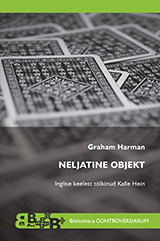
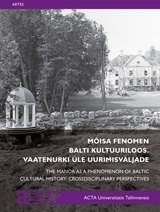
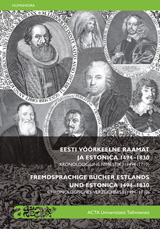 ISBN 978-9985-58-974-8
ISBN 978-9985-58-974-8 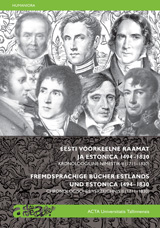 ISBN 978-9985-58-975-5
ISBN 978-9985-58-975-5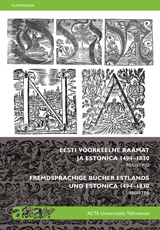 ISBN 978-9985-58-976-2
ISBN 978-9985-58-976-2 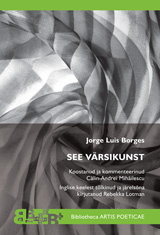
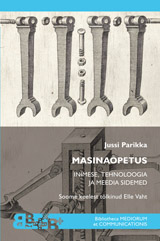

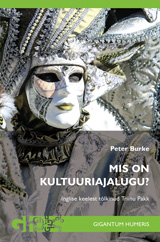
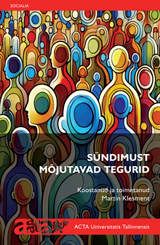
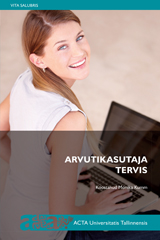 ISBN 978-9985-58-967-0
ISBN 978-9985-58-967-0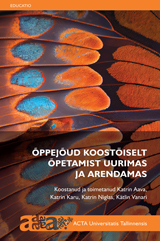
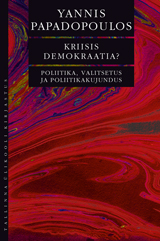
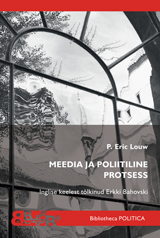
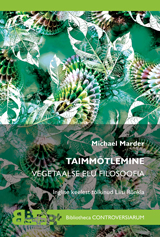
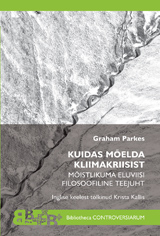
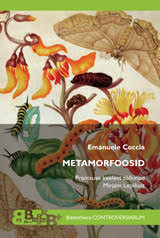
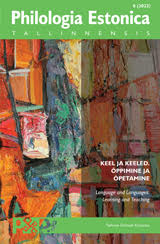
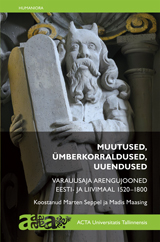
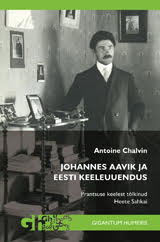
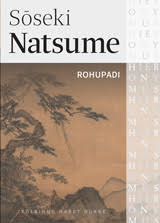
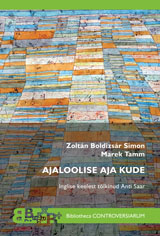
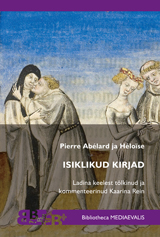
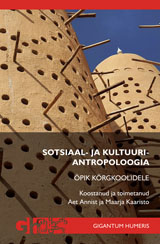
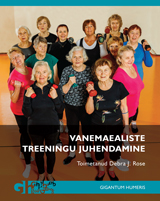
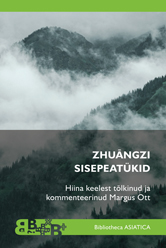
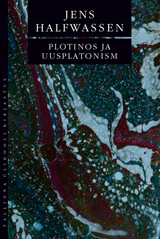
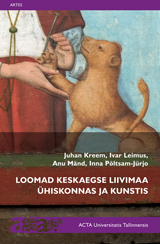
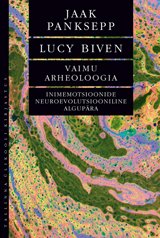
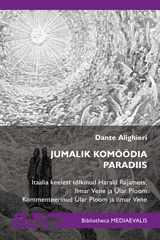
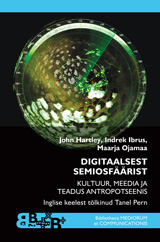
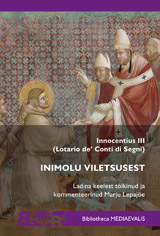
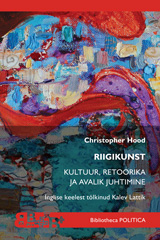
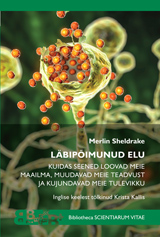
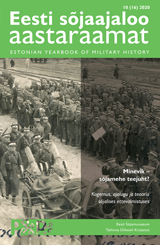
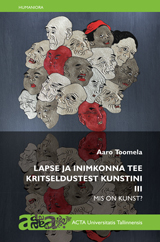
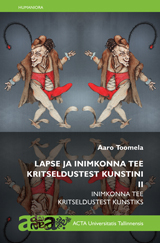
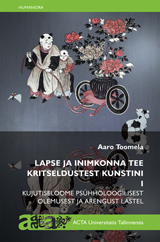
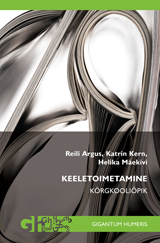
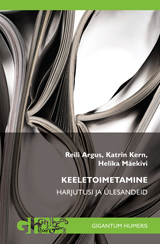
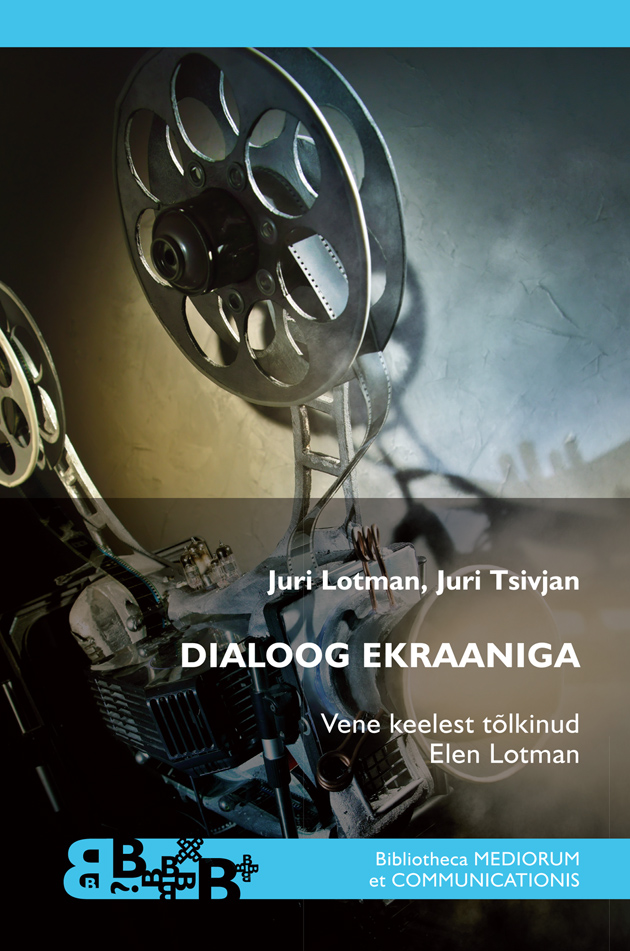
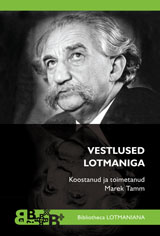
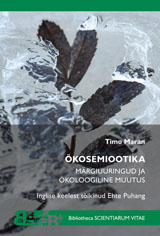
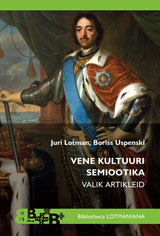
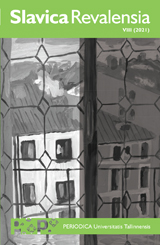
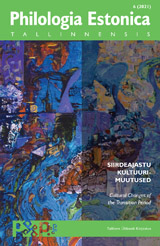
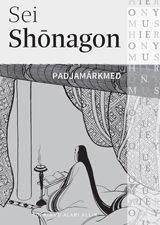
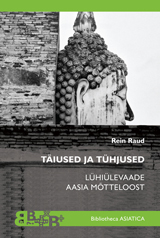
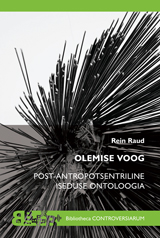
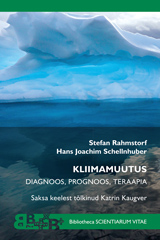

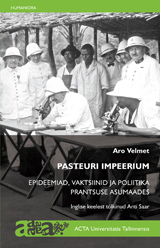
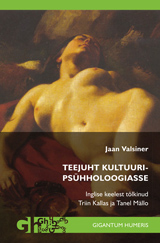
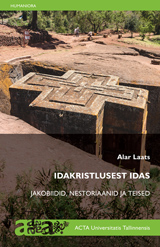
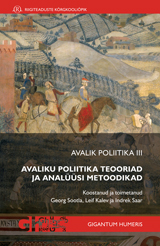
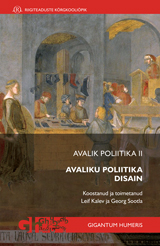
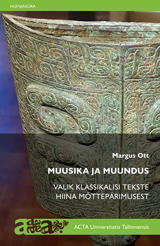
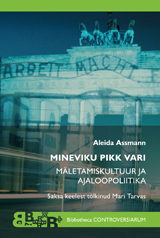
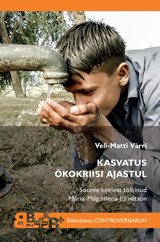
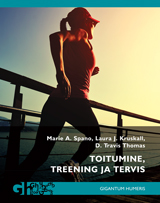
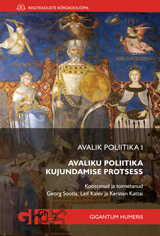
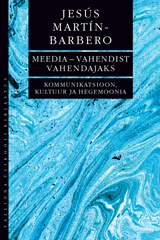
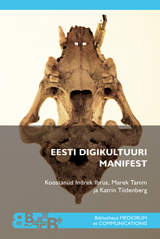
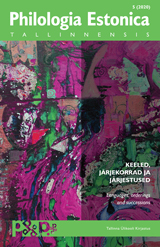
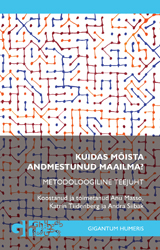
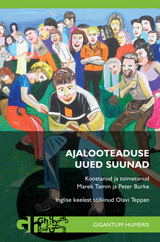
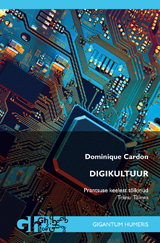
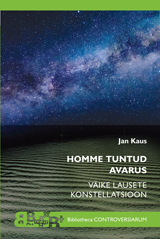
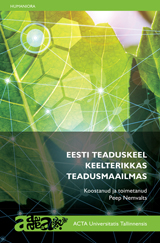
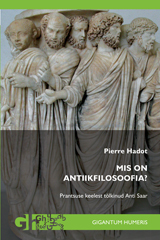
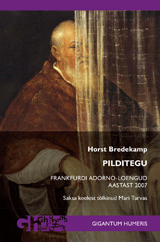 ISBN 978-9985-58-887-1
ISBN 978-9985-58-887-1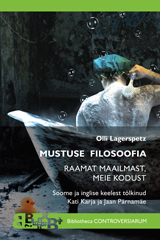
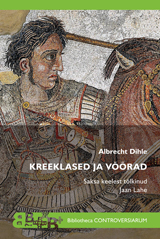
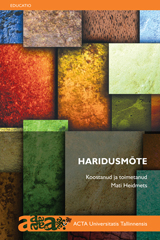
.jpg)
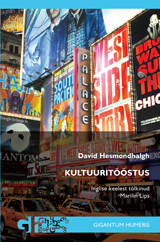
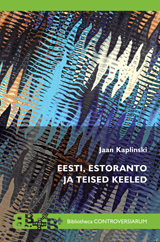
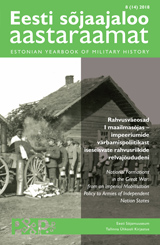
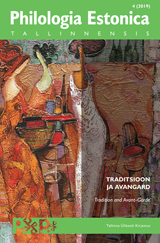
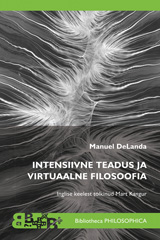
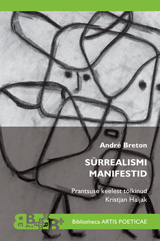
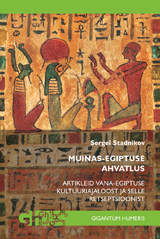
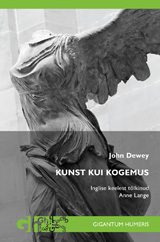
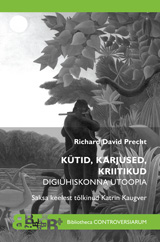
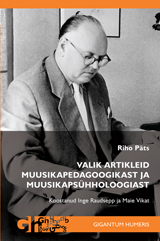
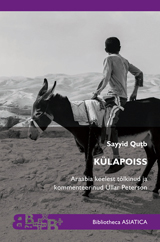
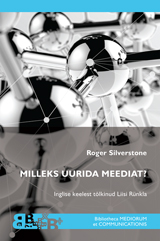
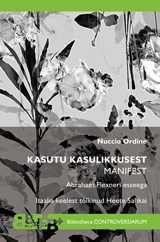
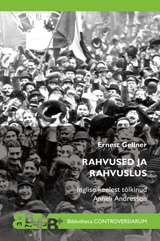
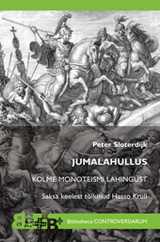
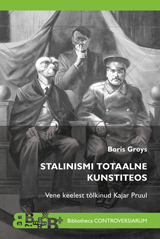
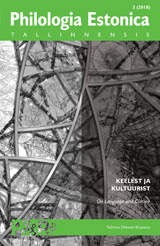
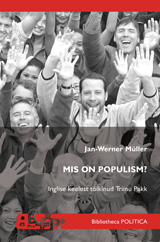
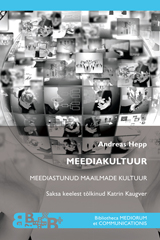
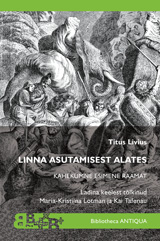
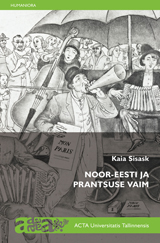
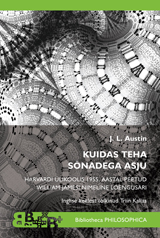
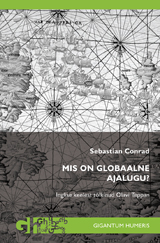
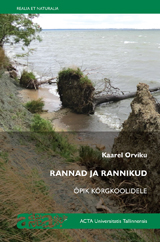
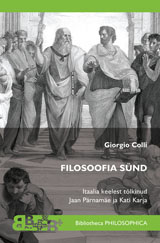
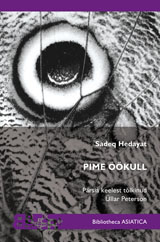
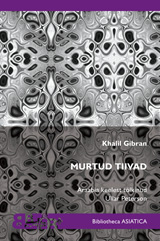
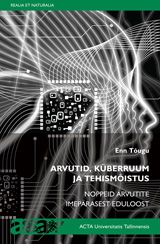
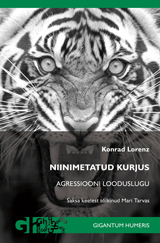
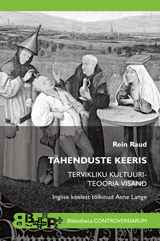
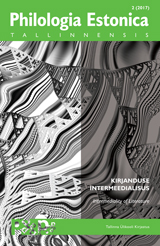
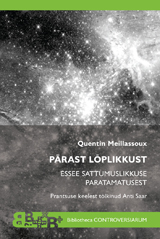
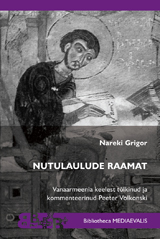
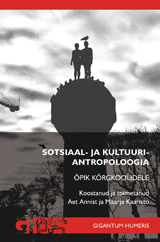
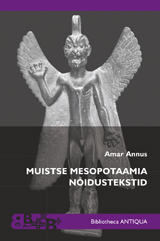
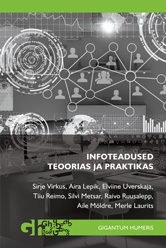
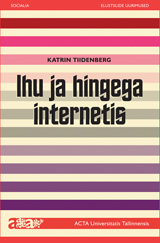
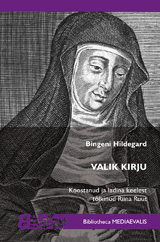

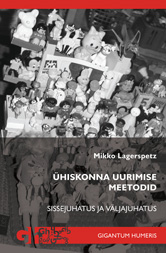
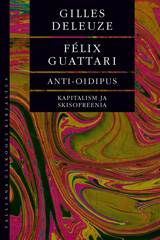
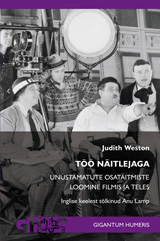
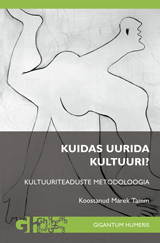
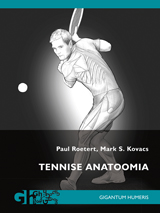
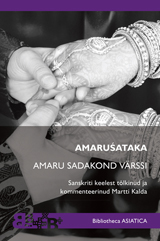
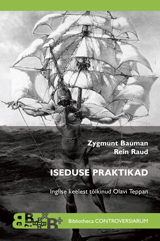
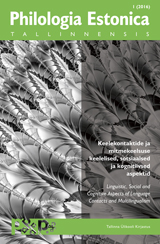
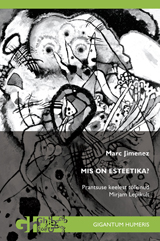
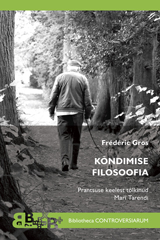
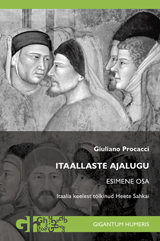
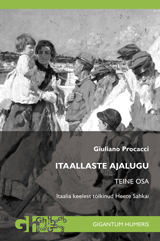
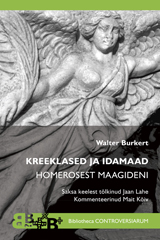
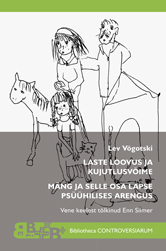
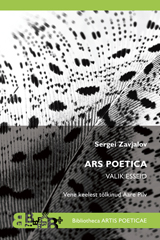
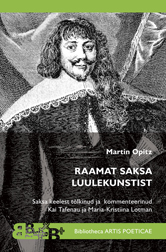
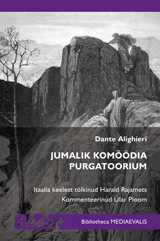
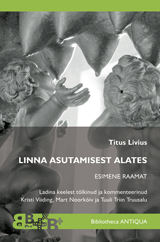
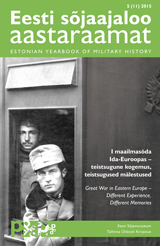
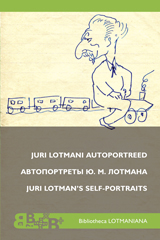
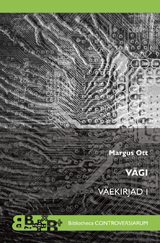
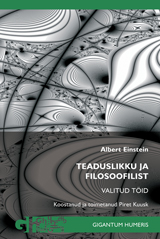
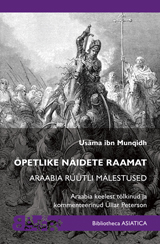
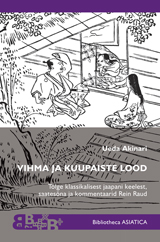
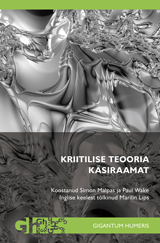
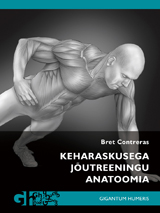
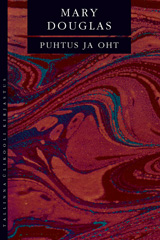
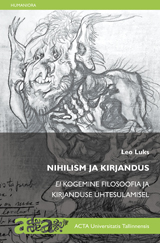
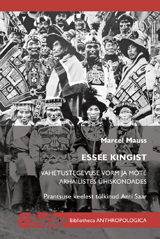
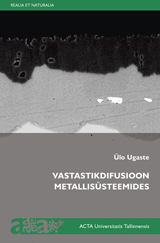
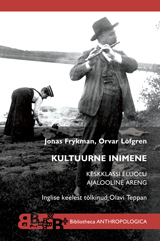
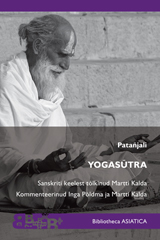
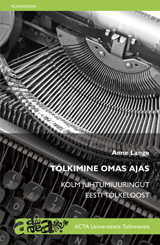
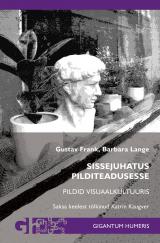
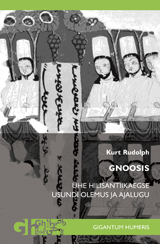
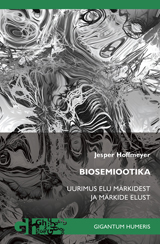
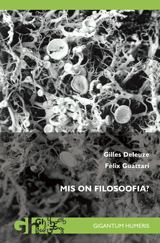
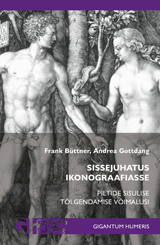
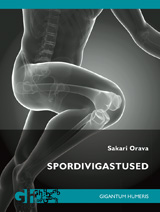
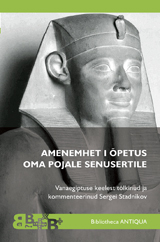
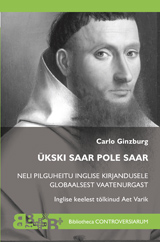
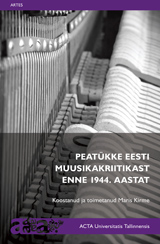
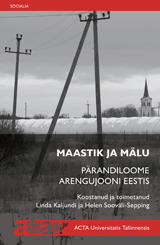
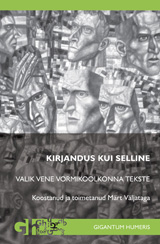
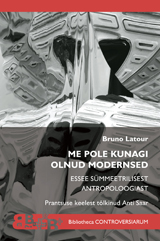
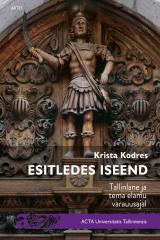
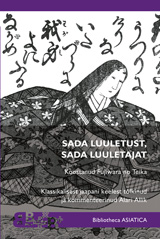
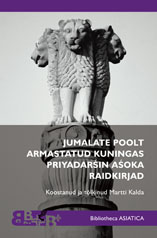
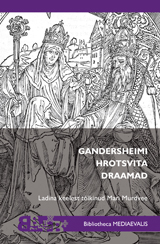
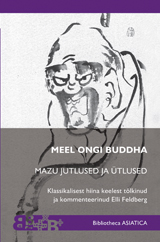
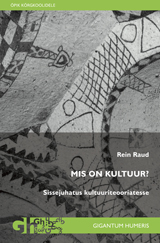
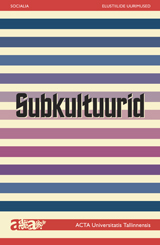
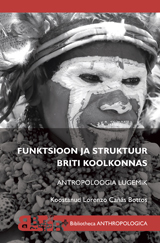
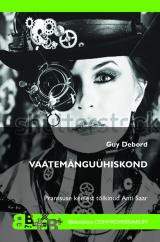
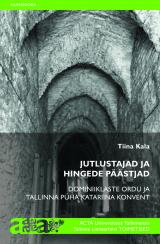
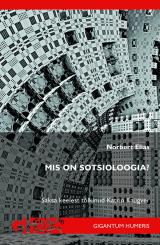
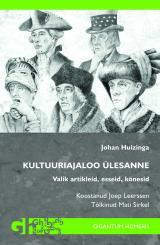
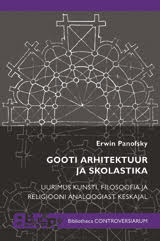
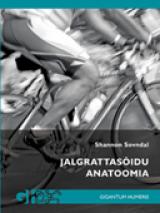
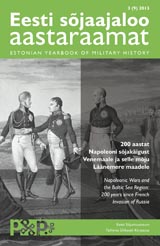 Paperback
Paperback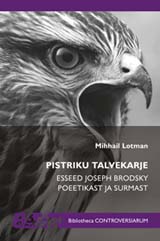
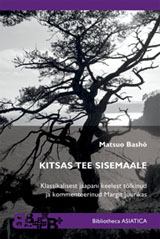
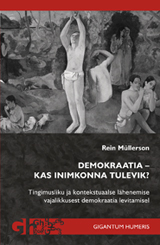
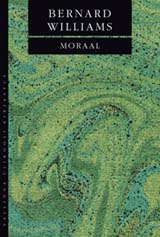
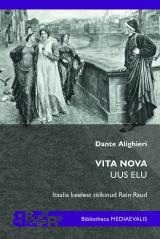
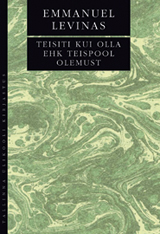
.jpg)
